

Reflexive Arbeiten 2022
Master Fine Arts, Institut Kunst Gender Natur
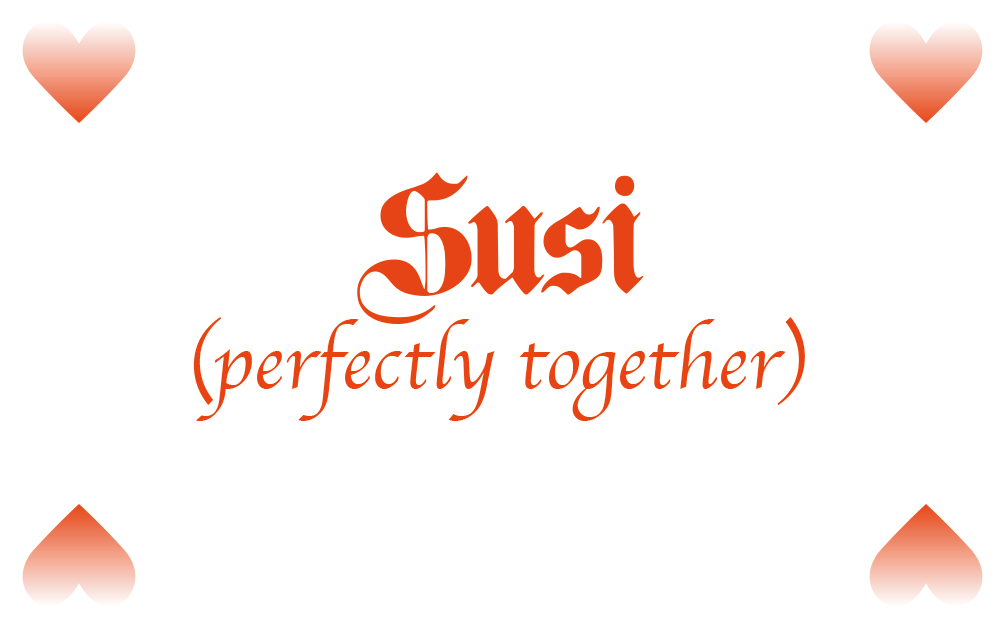
Susi (perfectly together)
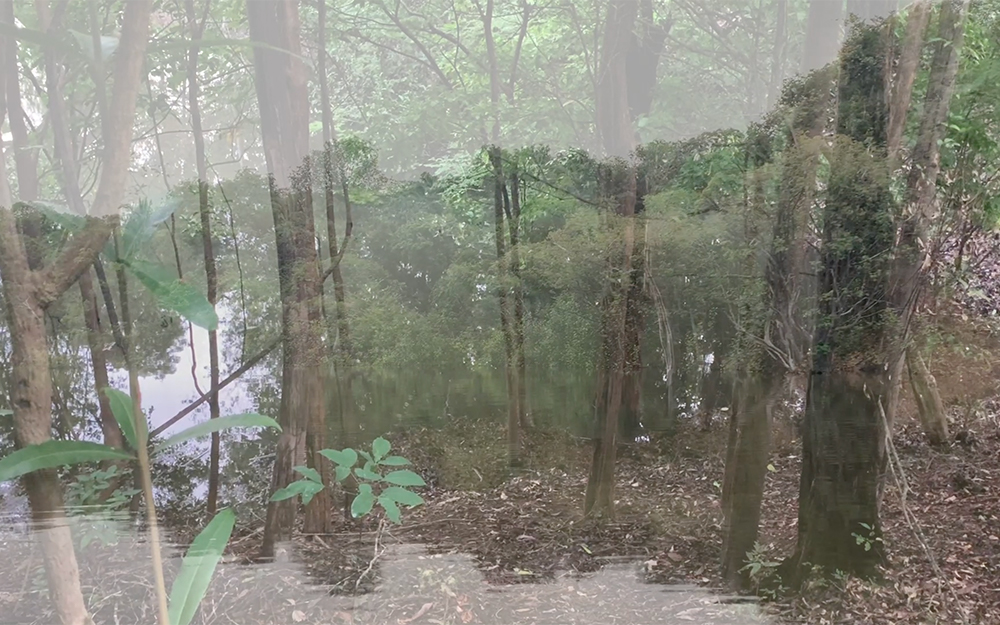
raízes de rios
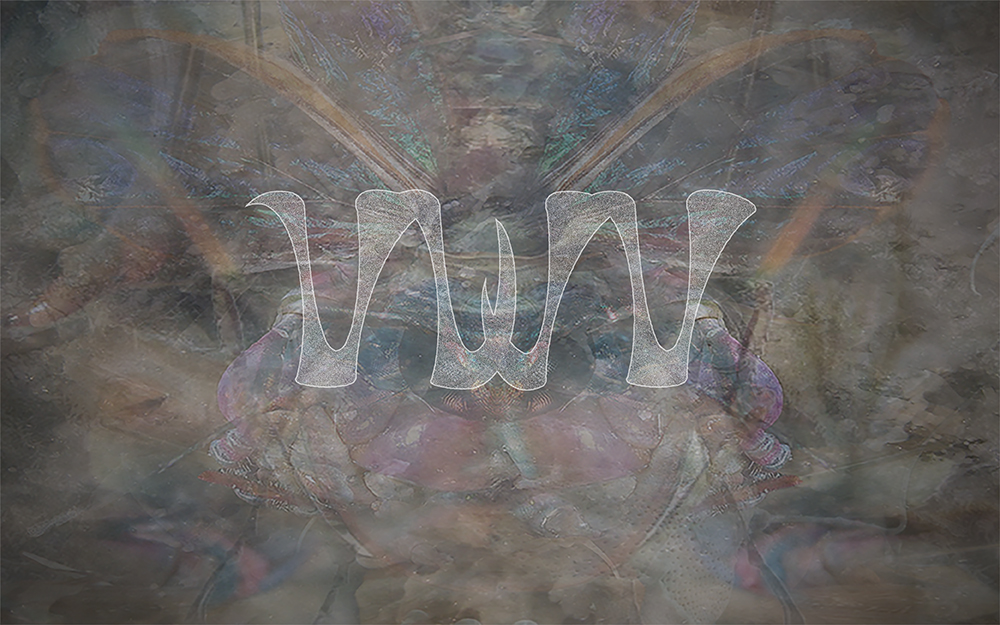
vwv
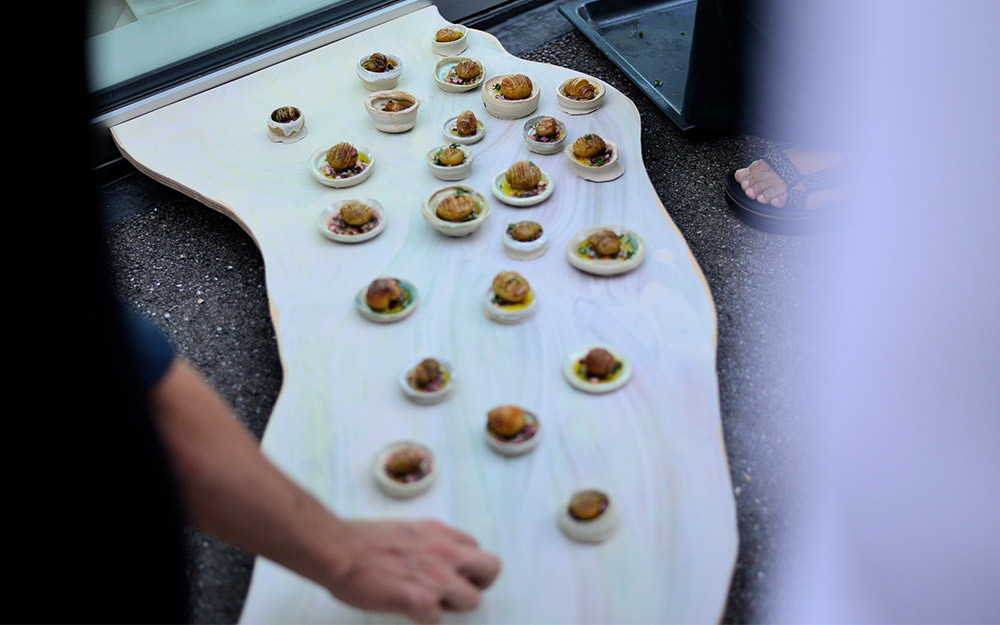
Osmotic Flow
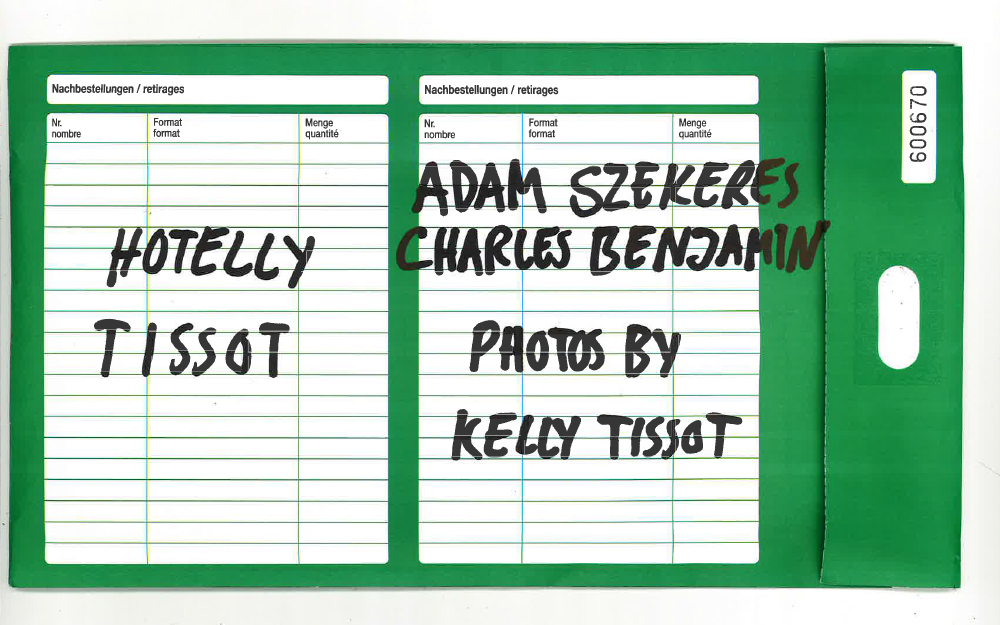
Hotelly Tissot
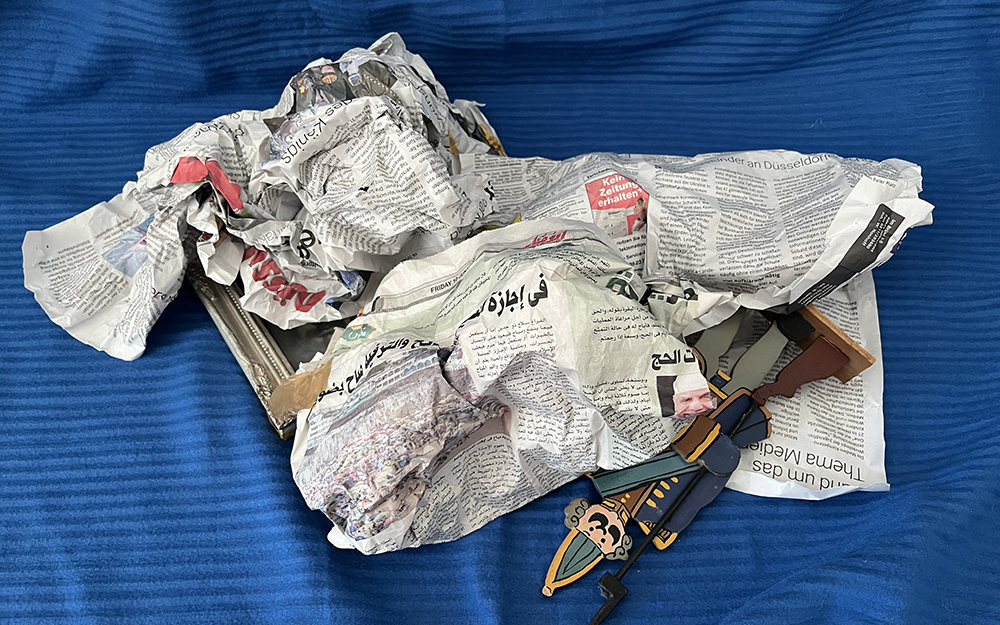
The Museum of My Bygones
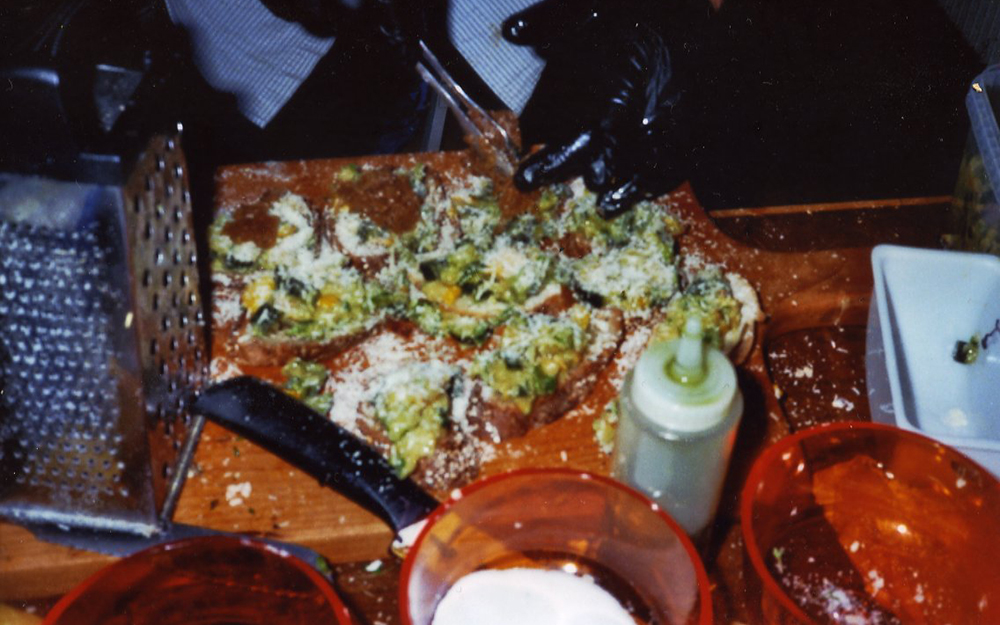
FEDORA / Temporary Artspace
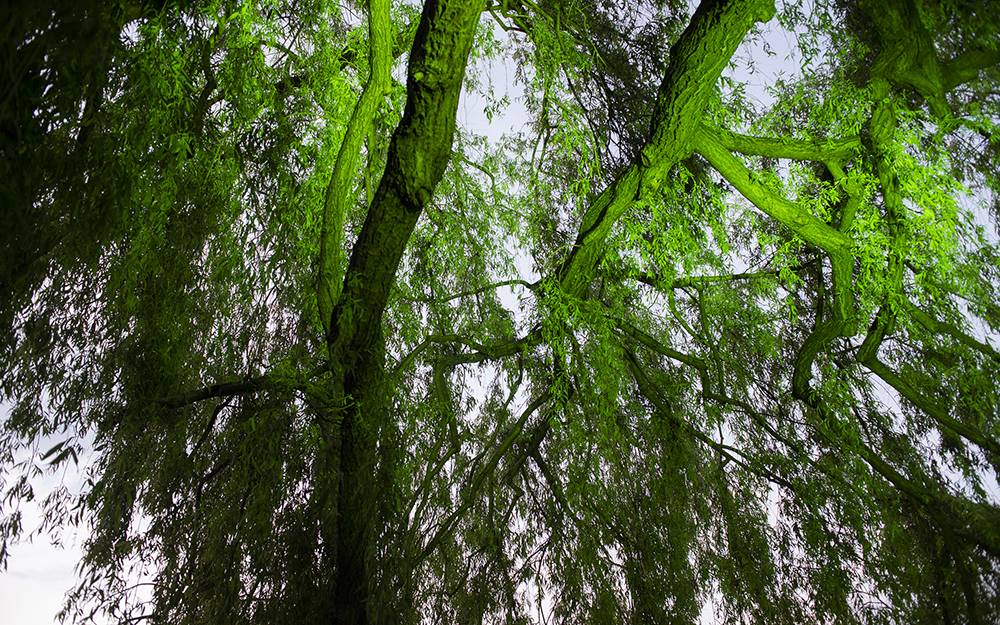
DELAY
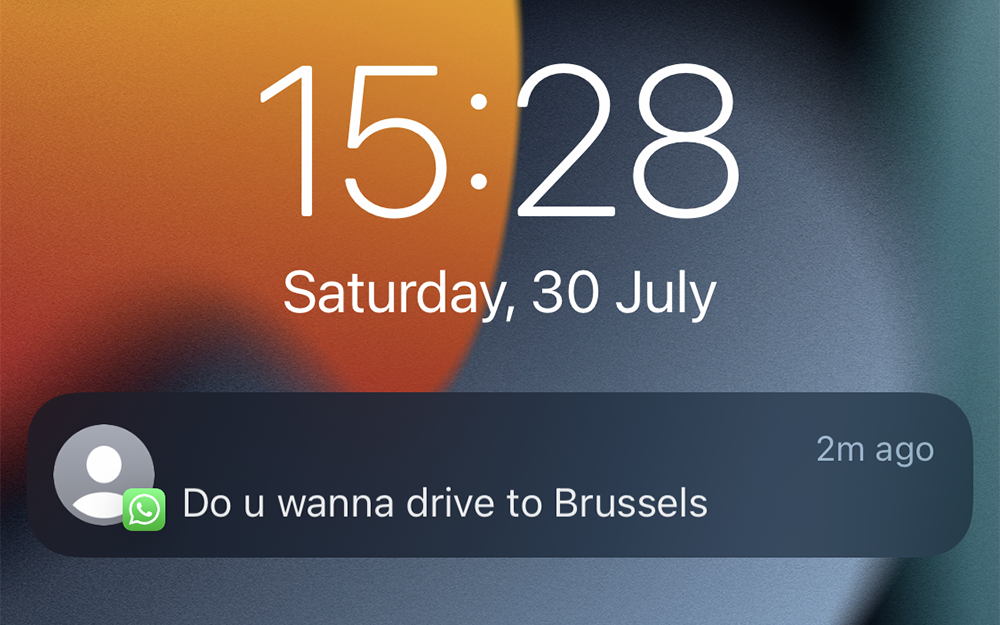
The parts you put together
_Ana Jikia.jpg)
persona sentimental
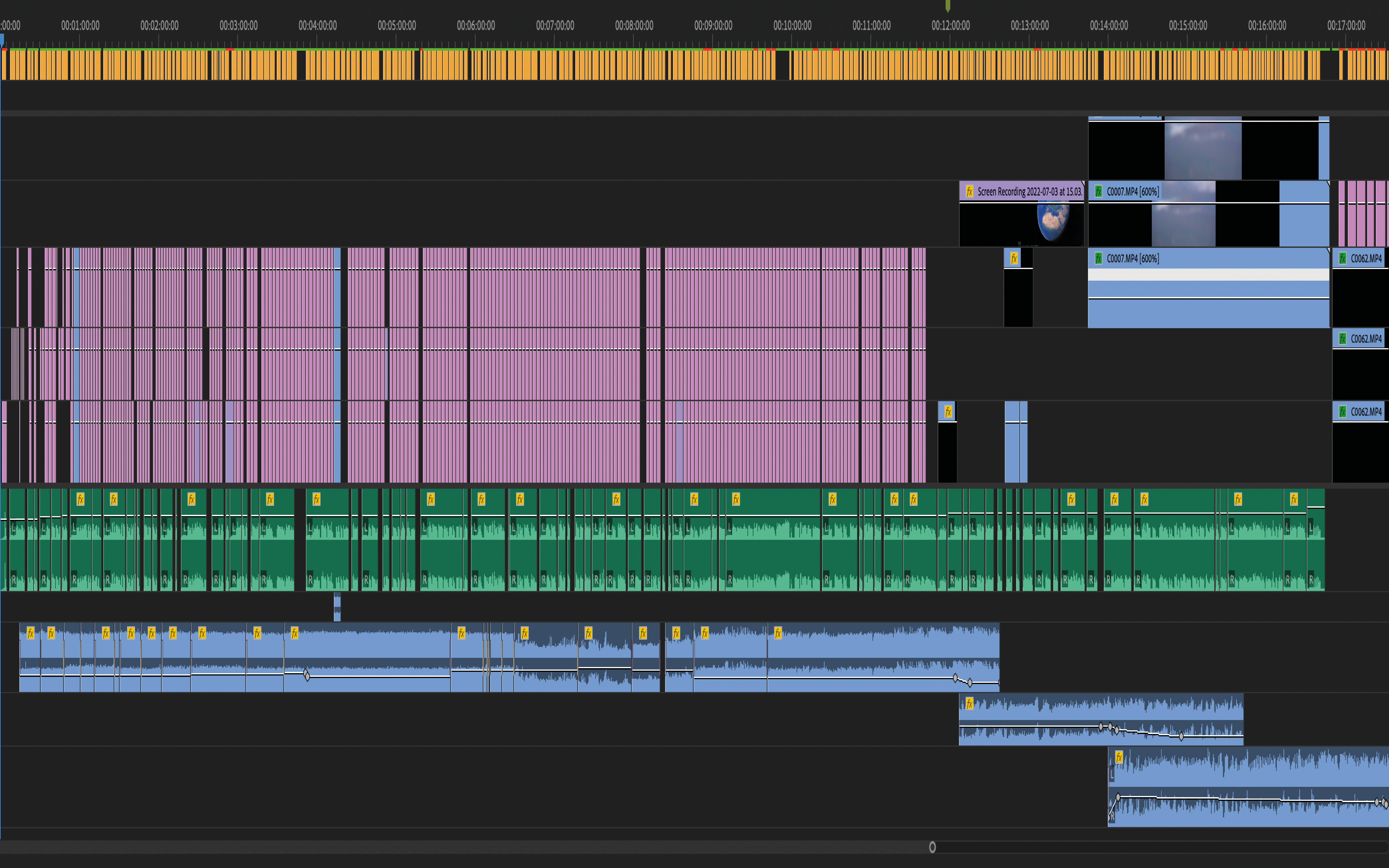
Skeleton of a rational yet emotional process
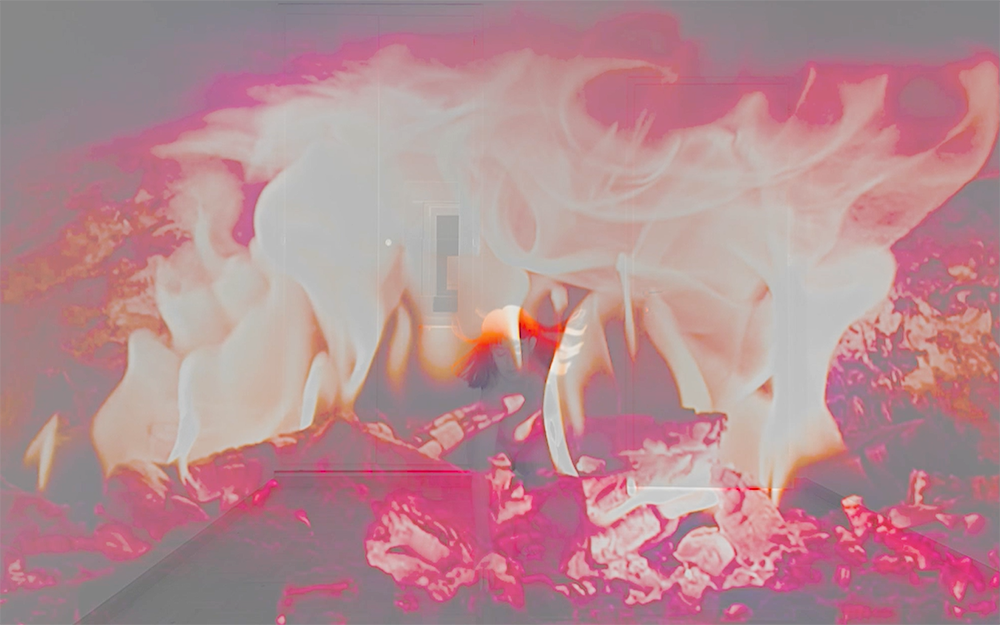
already so late but can't move
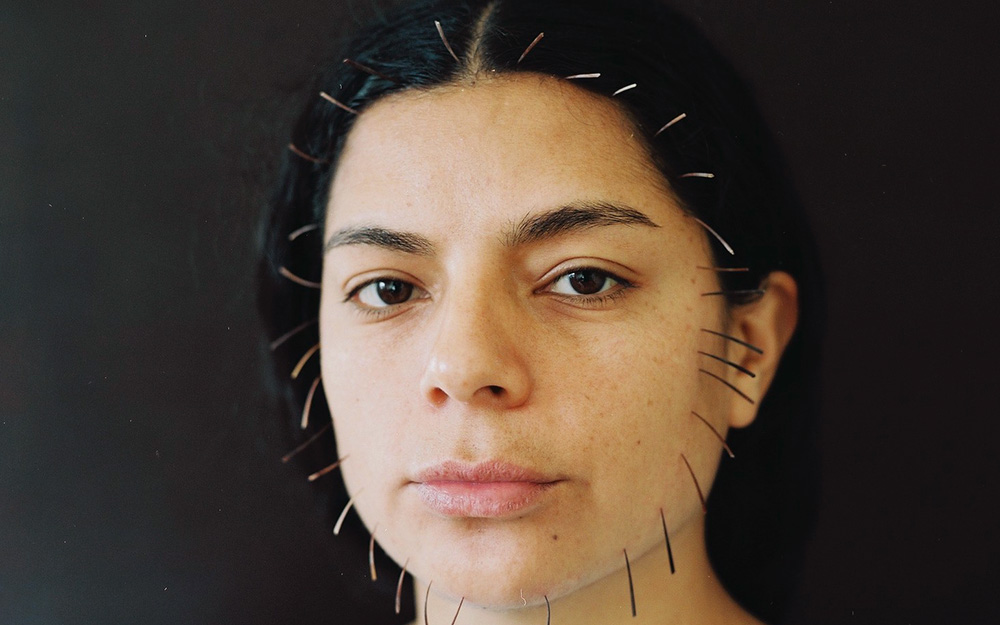
Idea 25
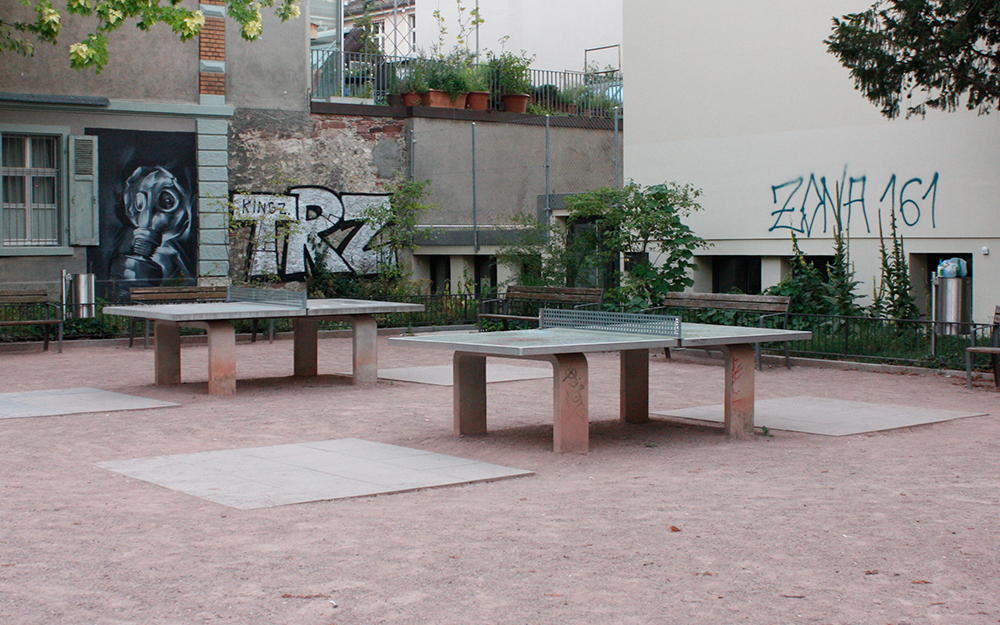
PLACES TO CRY
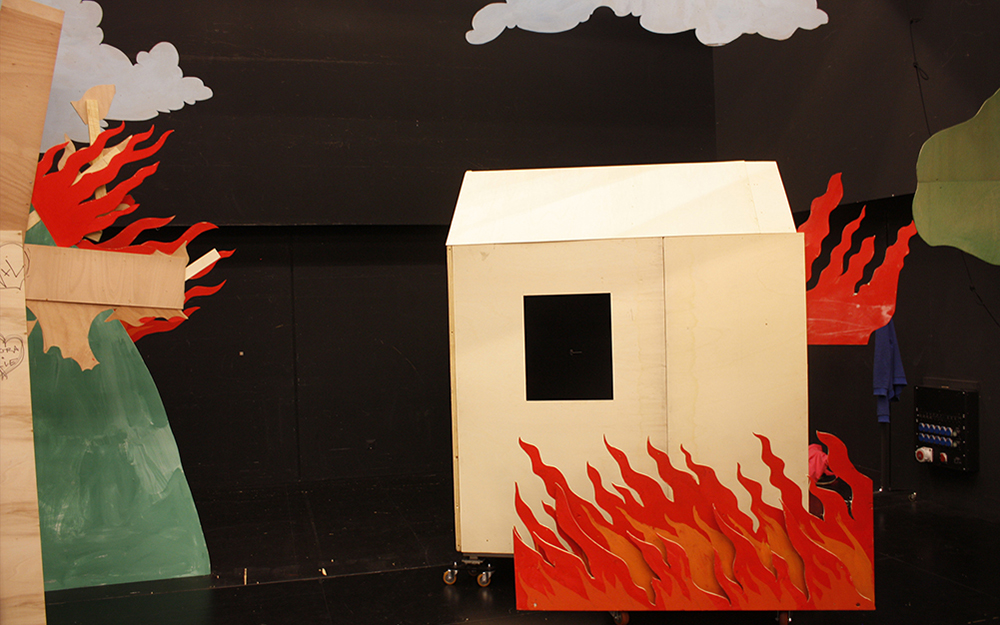
Mise en Scène
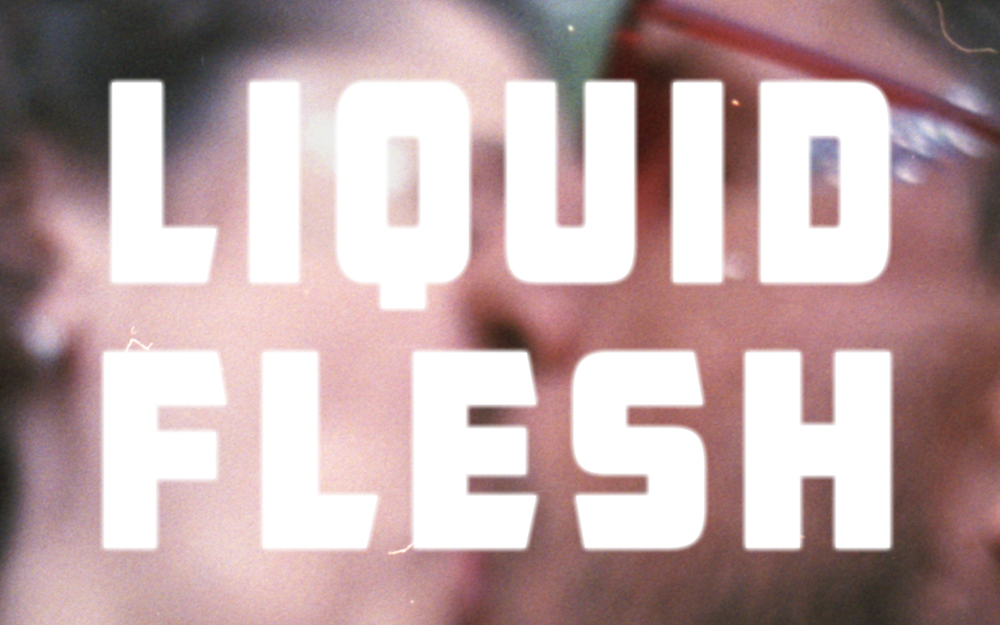
LIQUID FLESH. A Party by Paula Santomé
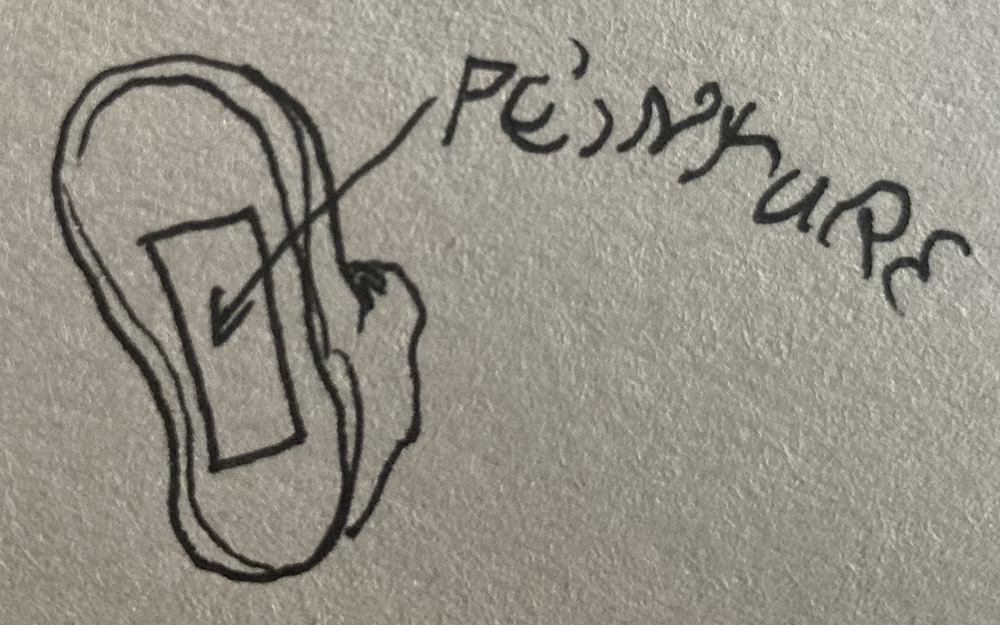
pocket paintings - movement 1
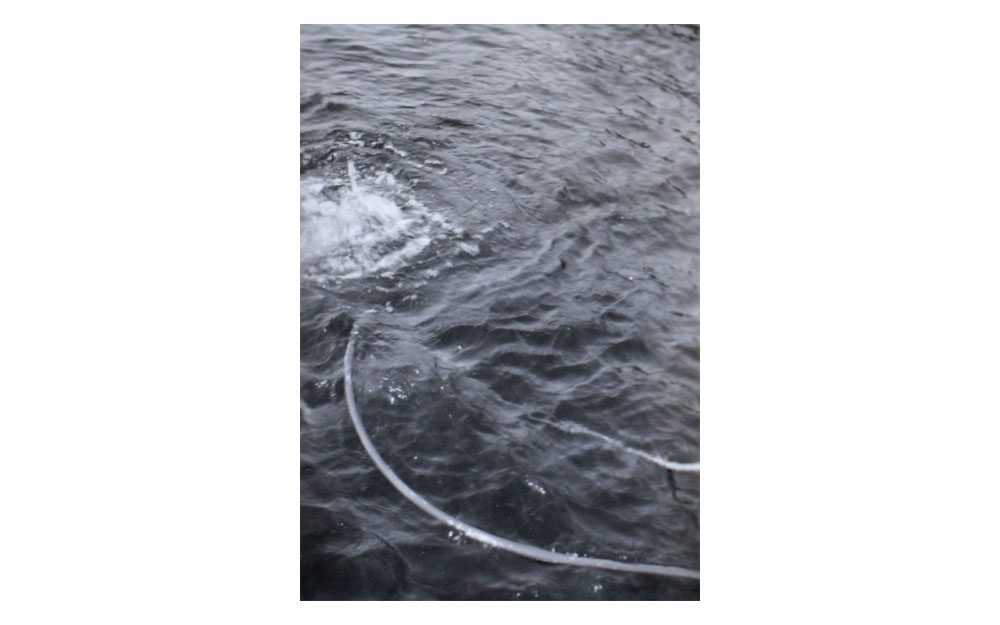
Islands toward which the ocean rubs (– Hello resistance!)
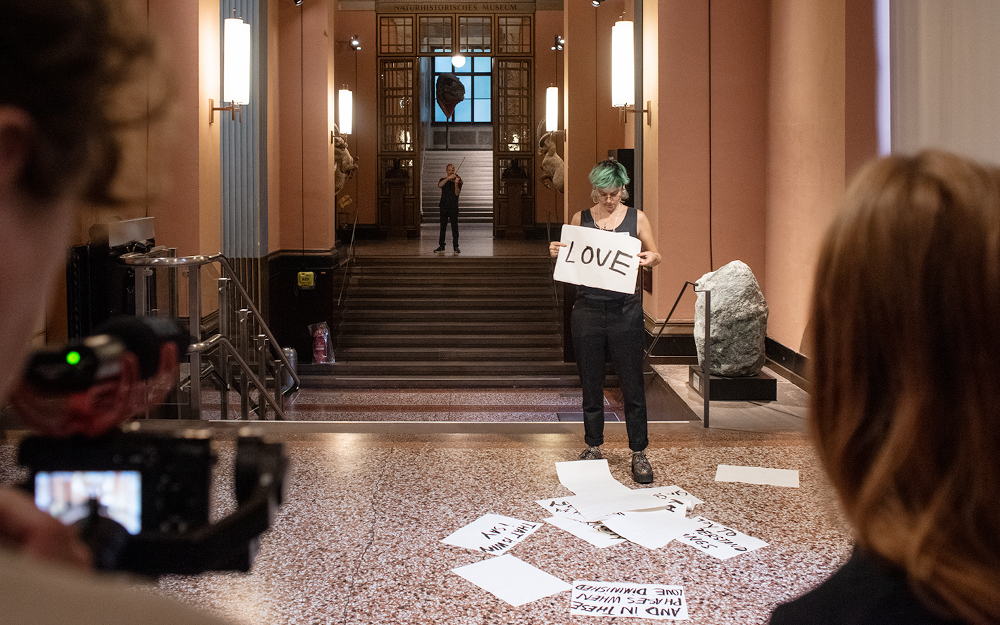
When the Water loves Fire
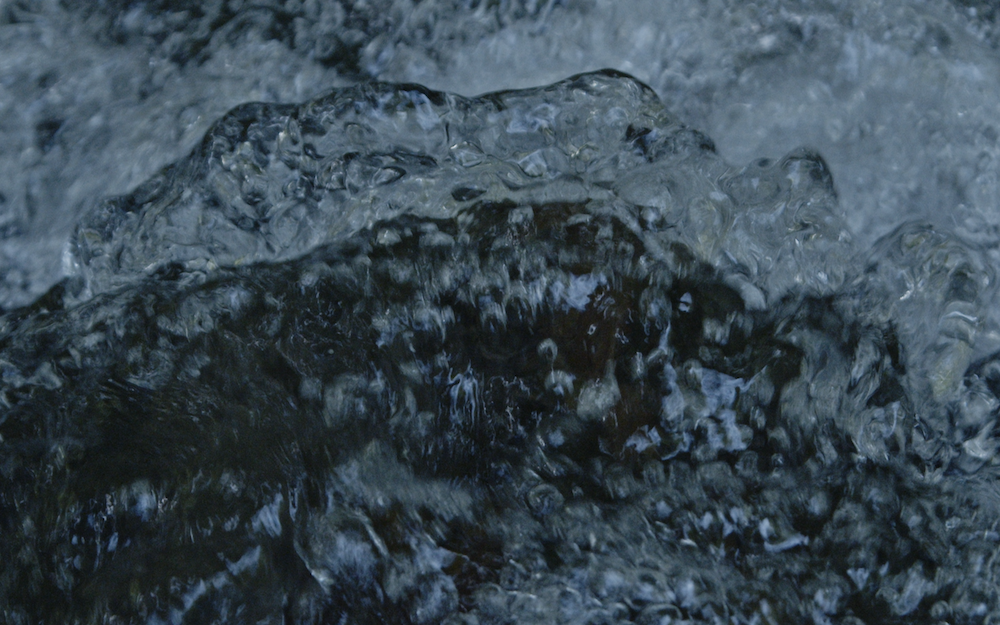
Continuously
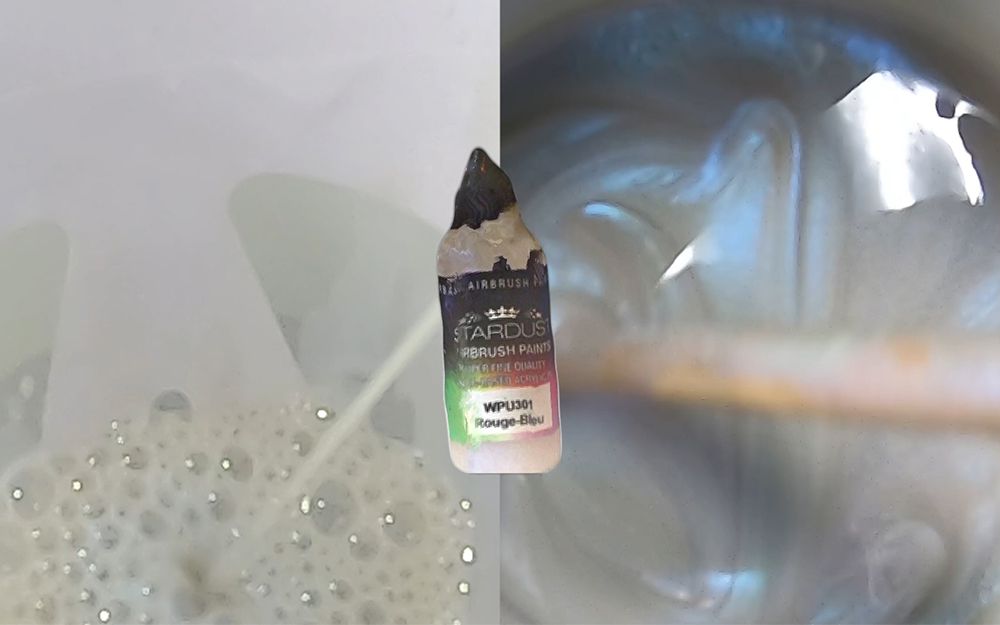
carosserie-(un)like
Die reflexive Arbeit ist ein Gefäss, in dem die Kunst über sich selbst nachdenken kann via Künstler*In, eine Einladung, an diesem Denken teilzunehmen, Fragen zu stellen und in ein Gespräch zu geraten. Dieses Gefäss ist jeweils zu erfinden, deshalb ist die reflexive Arbeit ein Experiment. Es geht nicht um fertige Texte, Abhandlungen, Meinungen, theoretische Erörterungen, etc., sondern um eine jeweils spezifische Form der Selbstbestimmung. weiter...
Die reflexive Arbeit 1
ist ein Gefäss, in dem die Kunst über sich selbst nachdenken kann via Künstler*In, eine Einladung, an diesem Denken teilzunehmen, Fragen zu stellen und in ein Gespräch zu geraten. Dieses Gefäss ist jeweils zu erfinden, deshalb ist die reflexive Arbeit ein Experiment. Es geht nicht um fertige Texte, Abhandlungen, Meinungen, theoretische Erörterungen, etc., sondern um eine jeweils spezifische Form der Selbstbestimmung. Sie muss nicht sprachlich sein, nicht schriftlich und auch nicht in irgendeinem Medium festgehalten werden. Entscheidend ist ihre Möglichkeit, Räume zu öffnen fürs Denken und Sprechen und einzustimmen in die mentalen Umgebungen der Werke. Eine reflexive Arbeit kann ein mündlicher Bericht über Lektüre sein, es können Interviews, Schlafprotokolle, Filme, Musik ... Mitschriften von nie stattgefundenen Treffen sein, wichtig ist: sie sollte sich öffnen wollen, ein Gesprächsangebot machen, sie sollte Lust haben und Lust darauf machen, etwas in die Karten zu schauen, sich in die Karten schauen zu lassen, ins Handwerk, in die Motivation, in das Nichtwissen, in den Antrieb und in die Wege der Kunst. Es geht um kein schweres schwitzendes Beackern und Zerhacken der eigenen Kreationen, sondern auch um den inspirierenden und leichten, mutigen und oft paradoxen, verblüffenden Funken beim Denken. Und ja, dieser denkende Moment wohnt dem Kunstwerk selbst natürlich bei und inne. Die reflexive Arbeit macht per leichter Verschiebung und Betonung darauf aufmerksam.
reflexive work 1
is a container in which art can think about itself via artists, an invitation to participate in this thinking, to ask questions and to get into a conversation. This container has to be invented, therefore the reflexive work is an experiment. It is not about finished texts, essays, opinions, theoretical discussions, etc., but about a specific form of self-determination. It does not have to be linguistic, written or in any medium. What is decisive is its ability to open spaces for thinking and speaking and to tune into the mental environments of the works. A reflective work can be an oral report about reading, it can be interviews, sleep logs, movies, music... It can be a record of meetings that never took place, important: it should want to open itself, make an offer to talk, it should have desire and make desire to look something into the cards, to let itself be looked into the cards, into the craft, into the motivation, into the ignorance, into the drive and into the ways of art. It's not about heavy sweating and chopping up your own creations, but also about the inspiring and light, courageous and often paradoxical, astonishing spark of thought. And yes, this thinking moment is naturally inherent in the work of art itself. The reflexive work draws attention to this by means of a slight shift and emphasis.
Die reflexive Arbeit 2
ist ein Gefäss, dass jeweils neu zu erfinden ist. Es möchte Raum für Einsicht bieten, Innenansichten, Aussenansichten, Eigeneinsichten und ein Gespräch suchen mit anderen Ansichten und Sehansätzen. Zunächst möchte dieses Gefäss der Kunst und dem Kunstwerk, der künstlerischen Arbeit, Möglichkeit bieten, mit sich selbst zu sprechen und dann den Künstlerinnen und Künstlern, ihre Positionen, Haltungen, Zweifel, Methoden und Vorbilder, Absichten, Geheimnisse und Motivationen, Lieben und Ängste denkend und somit denkend handelnd, auszuprobieren. Denken ist immer persönlich. Mut gehört dazu, Mut Fehler zu mache, nackt da zu stehen, sich zu verirren oder etwas zu denken, was weh tut. Die reflexive Arbeit möchte dies arteigen tun, mit Leichtigkeit abheben, schweben, fliegen oder auch mit Schwermut, ackernd wie ein Gaul. Sie weiss, dass sie in ihrer eigenen Zeit statt findet und für sie blind ist. Sie sucht nach Selbstbestimmung und Selbstsetzung und sie weiss, dass Sätze alleine noch gar kein Anzeichen von Bewusstsein sind. Oder denkt das Ornament? Der Mut und die Freiheit selbst zu denken ist nicht selbstverständlich und besonders in Ausbildungszusammenhängen ein kostbares und zu schützendes Gut. Die reflexive Arbeit kann in jedem Medium statt finden. Es kann eine Beerdigung sein, ein Konzert, eine Führung, Brot backen, Menschen bauen, Steine hauen, Sendemaste vergolden, Tarotkarten deuten, ... wichtig ist, dass sich in ihr das künstlerische Tun und Treiben selbst begegnet, begehbar ist und offen, Lust auf die sogenannte Begegnung hat mit dem was gerade nicht Kunst ist und Kunst als Kunst erkennen will.
reflexive work 2
is a container that must always be reinvented. It wants to offer space for insight, interior views, exterior views, personal insights and a conversation with other views and visual approaches. First, this container of art and the work of art, of artistic work, wants to offer an opportunity to speak to oneself and then to try out the artists, their positions, attitudes, doubts, methods and role models, intentions, secrets and motivations, loving and fearing and thus thinking. Thinking is always personal. Courage requires courage to make mistakes, to stand naked, to get lost or to think something that hurts. The reflexive work wants to do this with ease, take off, float, fly or even with melancholy, farming like a horse. It knows that it takes place in its own time and is blind to it. It is looking for self-determination and self-setting and it knows that sentences alone are no sign of consciousness. Or does the ornament think? The courage and freedom to think for oneself is not a matter of course and, especially in educational contexts, a precious commodity that must be protected. Reflective work can take place in any medium. It can be a funeral, a concert, a guided tour, baking bread, building people, cutting stones, gilding transmission masts, interpreting tarot cards,... it is important that in it the artistic activity meets itself, is accessible and open, has desire for the so-called encounter with what is not art and wants to recognize art as art.
Die reflexive Arbeit 3
ist eine leichte und schöne Sache. Bevor sie leicht und schön ist kann sie hart, schwer und unangenehm sein. Meist läuft sie durch einen Nullpunkt von gar nichts will mehr gehen und verstehen, dann öffnet sich das Gate wie von alleine.
reflexive work 3
is an easy and beautiful thing. Before it is light and beautiful, it can be hard, heavy and unpleasant. Usually it runs through a zero point of nothing wants to go and understand anymore, then the gate opens by itself.
Die reflexive Arbeit 4
gibt es nicht. Sie ist immer anders. Sie ist lebendig. Füttern und streicheln erlaubt!
the reflexive work 4
there is not any. It is always different. It is alive. Feeding and caressing allowed!
Birgit Kempker
Susi (perfectly together)
raízes de rios
vwv
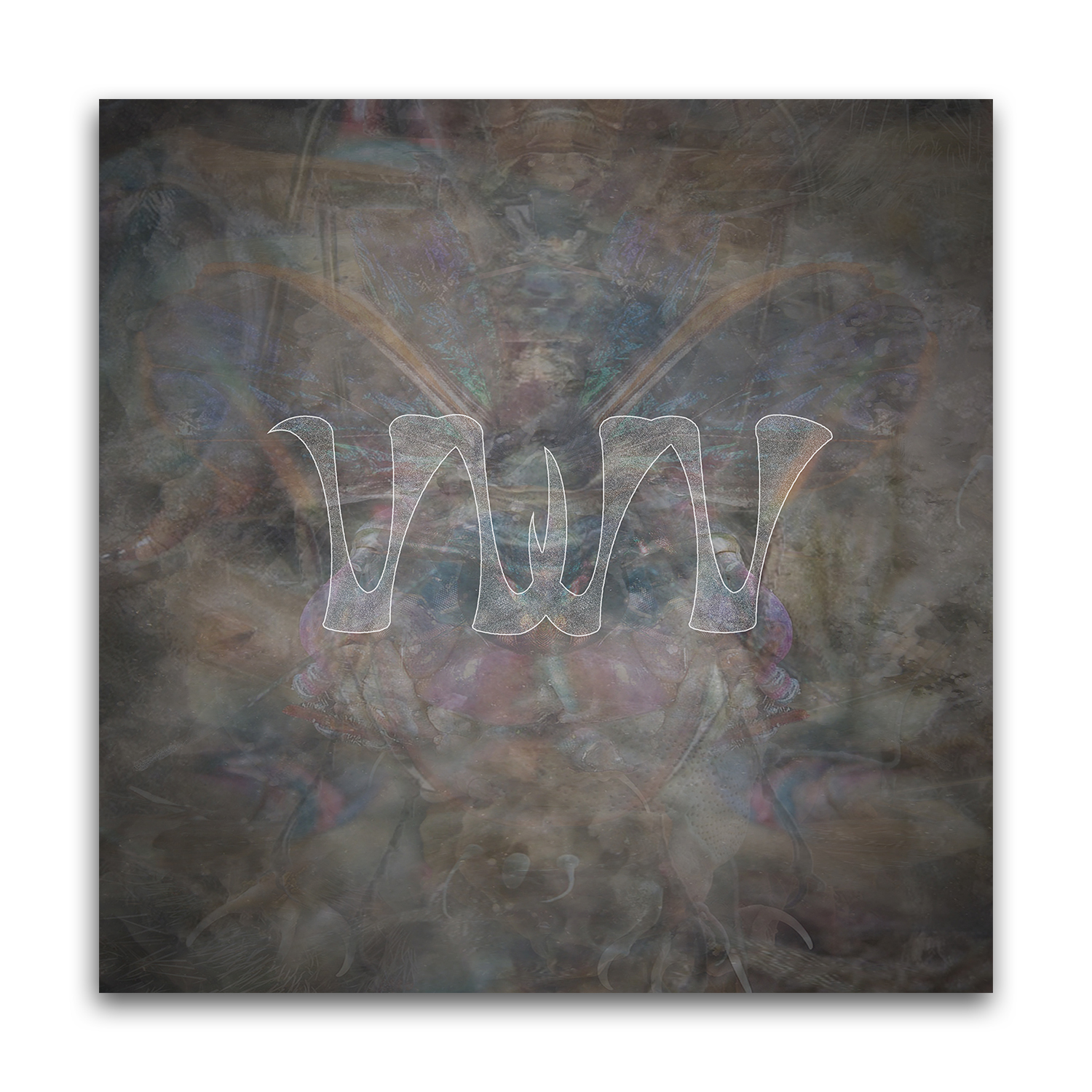
Osmotic Flow
Essence of cucumber and crème fraîche, lemon oil, tomato foam, cress and basil oil, young garlic butter and coffee oil, lemonade and elderflower whey; These were the smooth milieus for pickled char and cucumber, backed potato, smoked fava and homemade fresh cheese, beetroot carpaccio, carrot caviar and salad, marinated sprouts, braised aubergine and elderflower pearls.
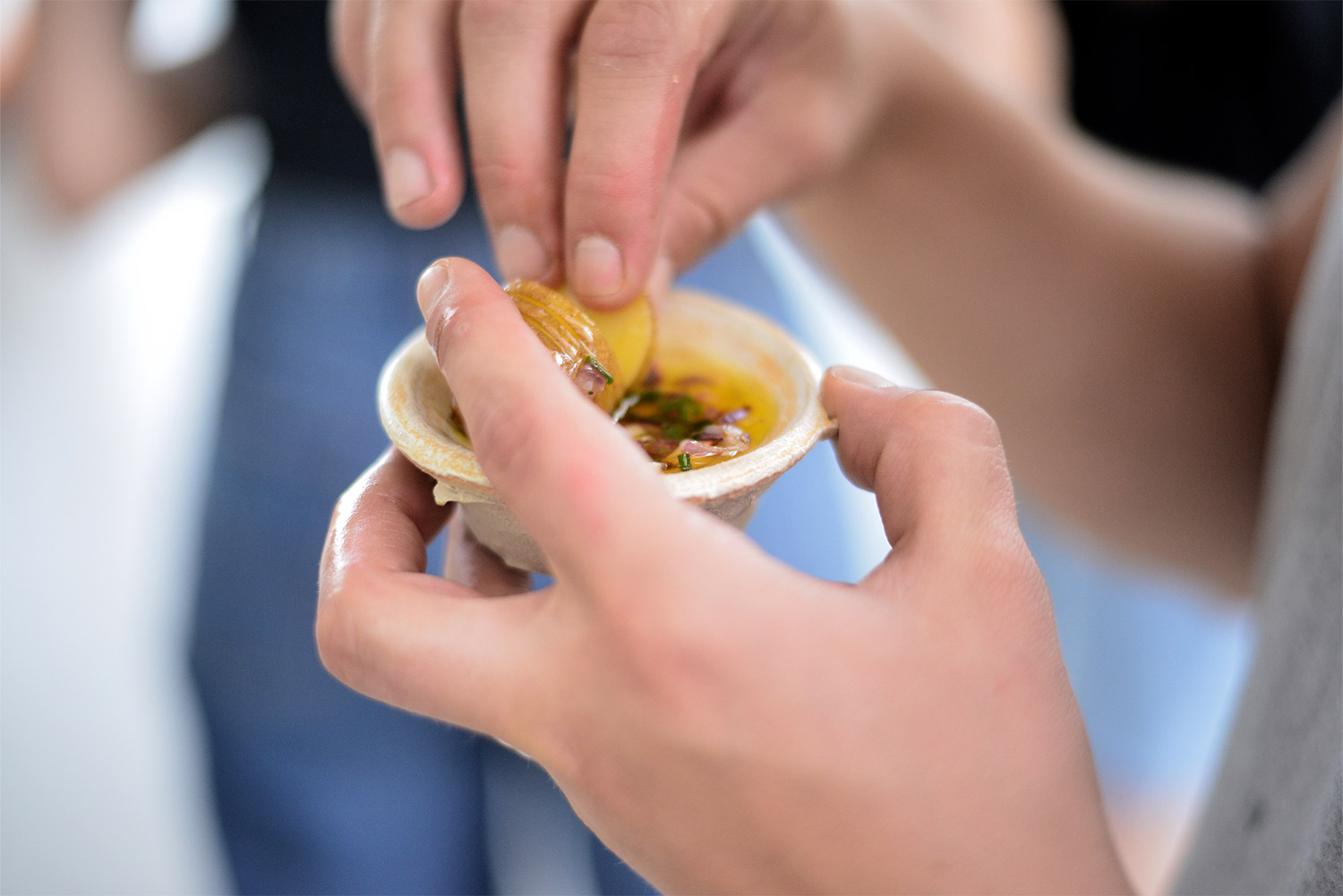
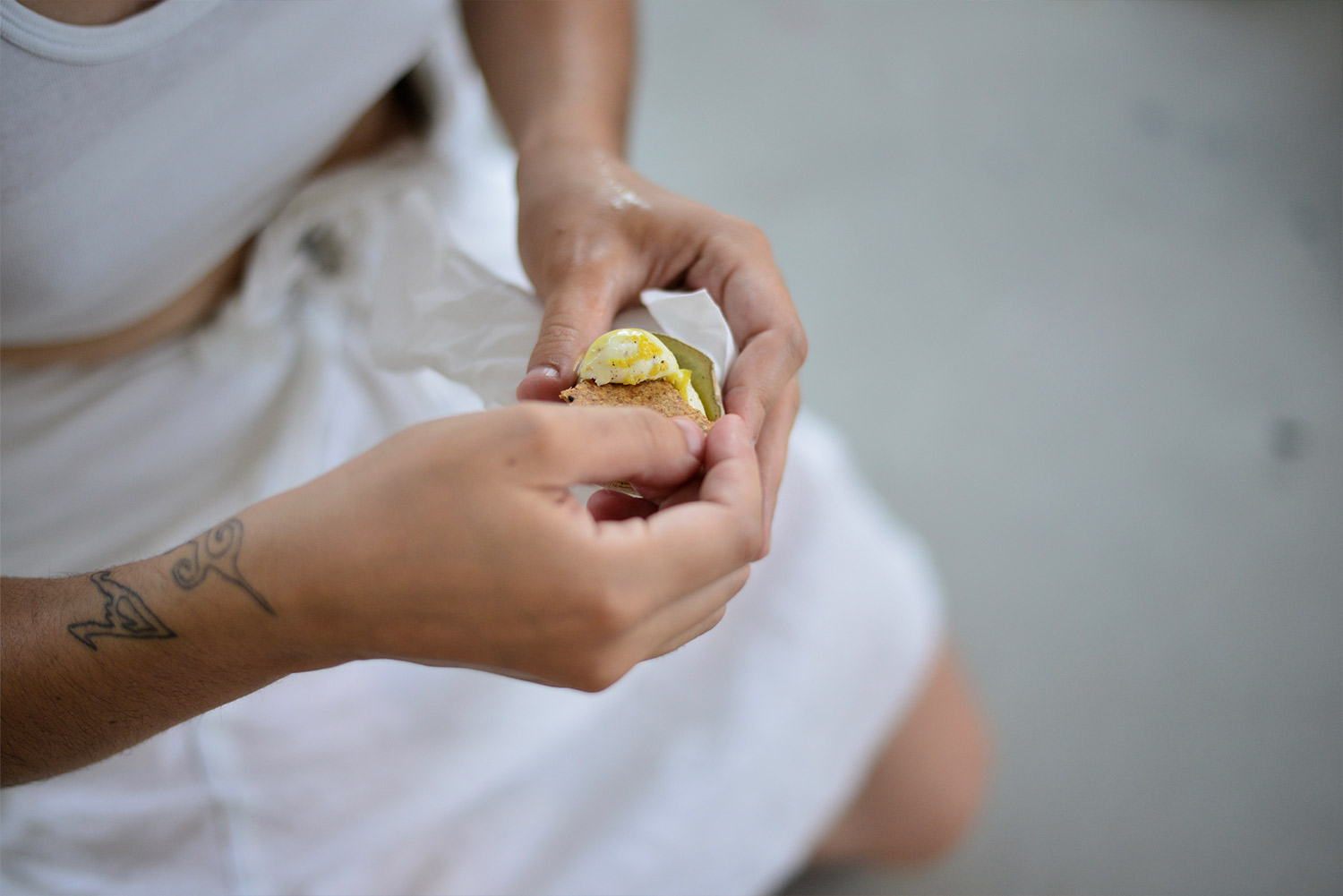
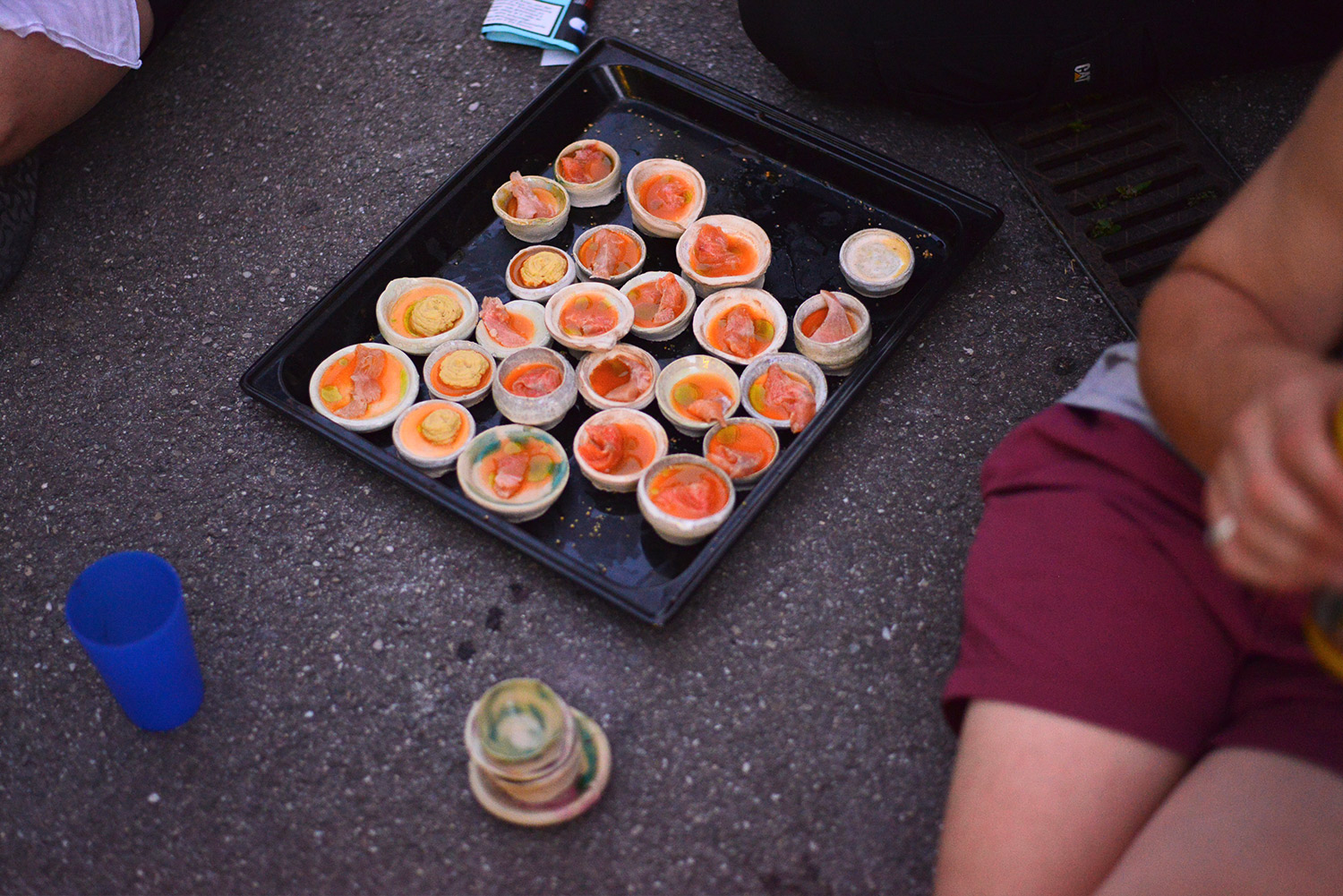
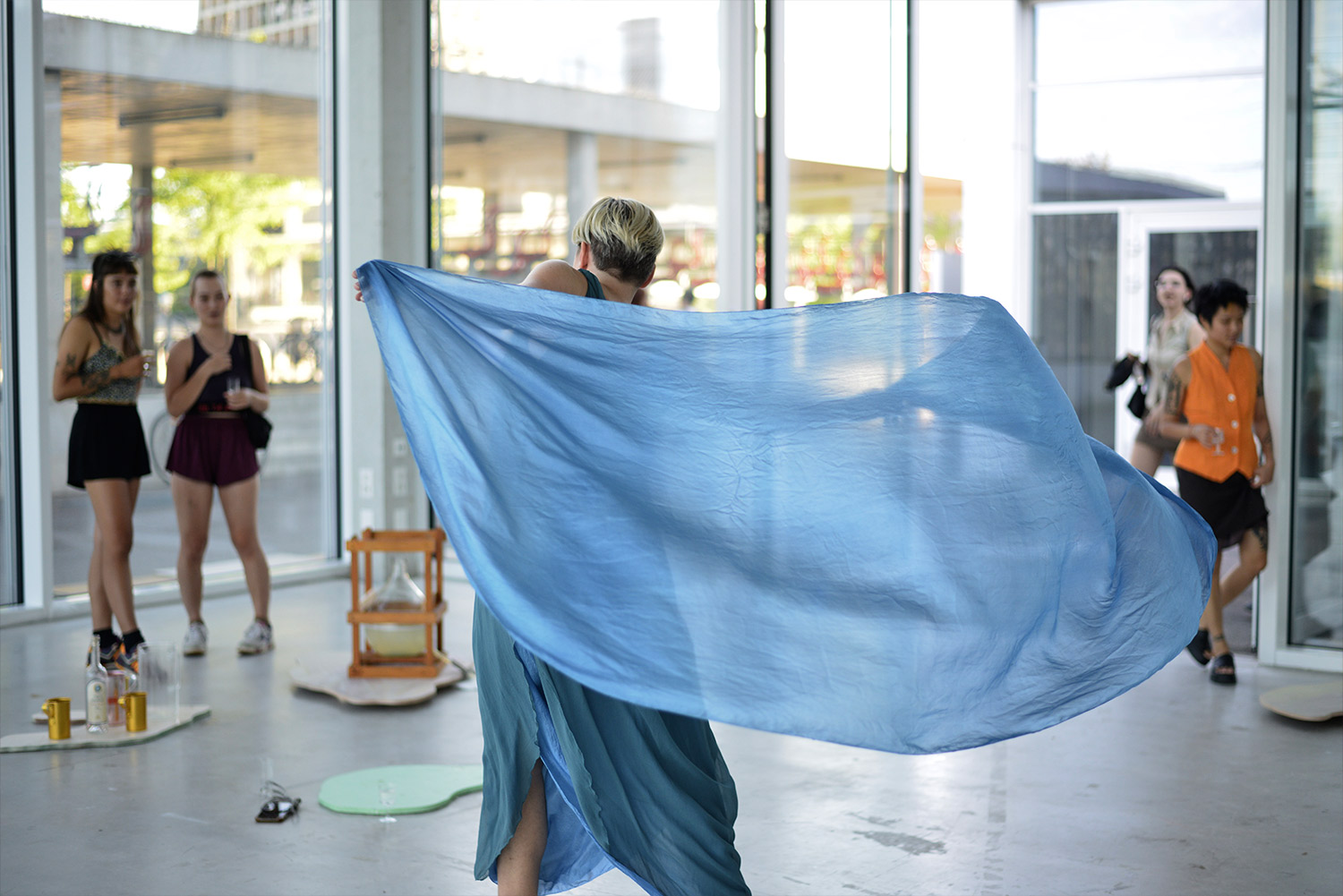
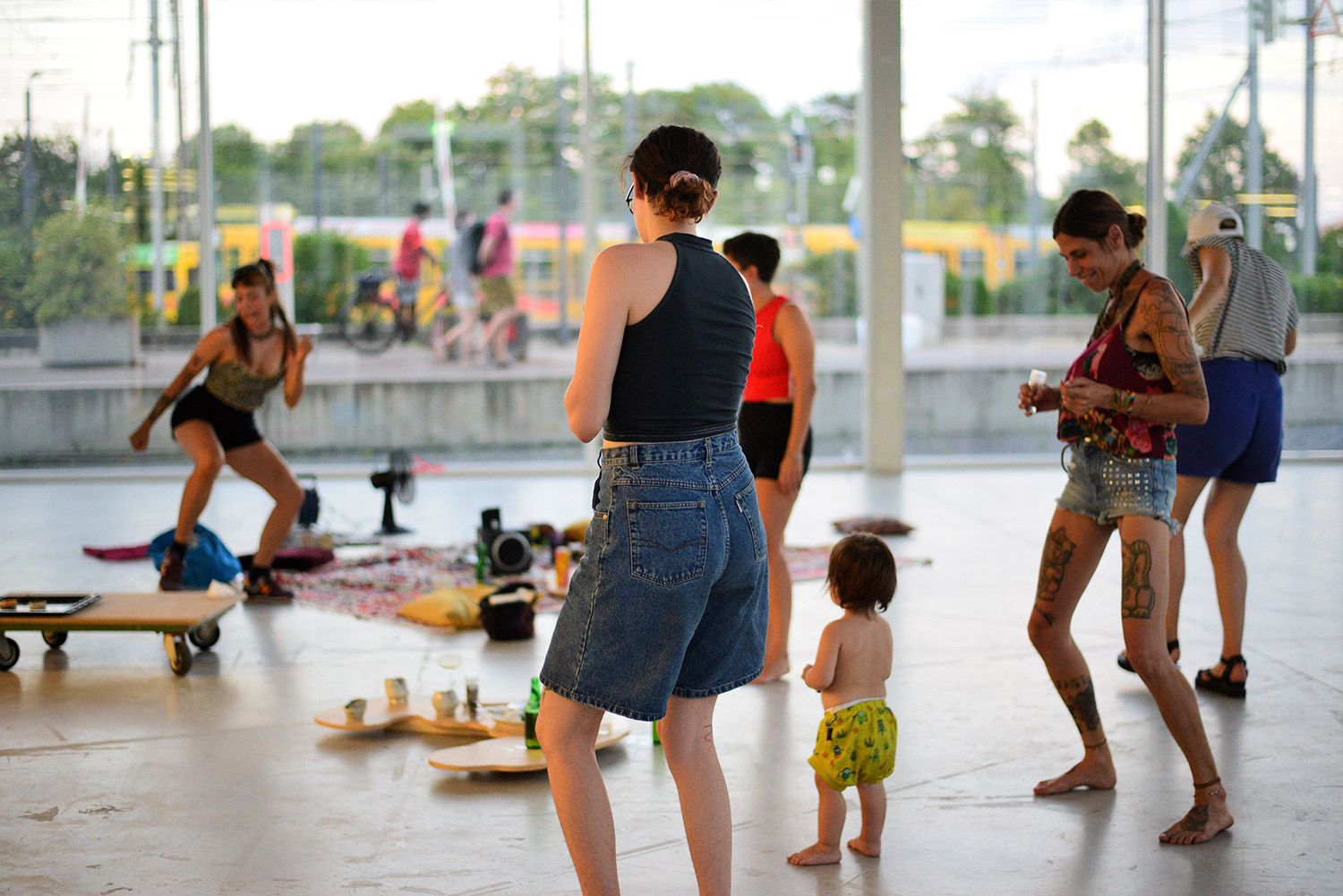
Hotelly Tissot
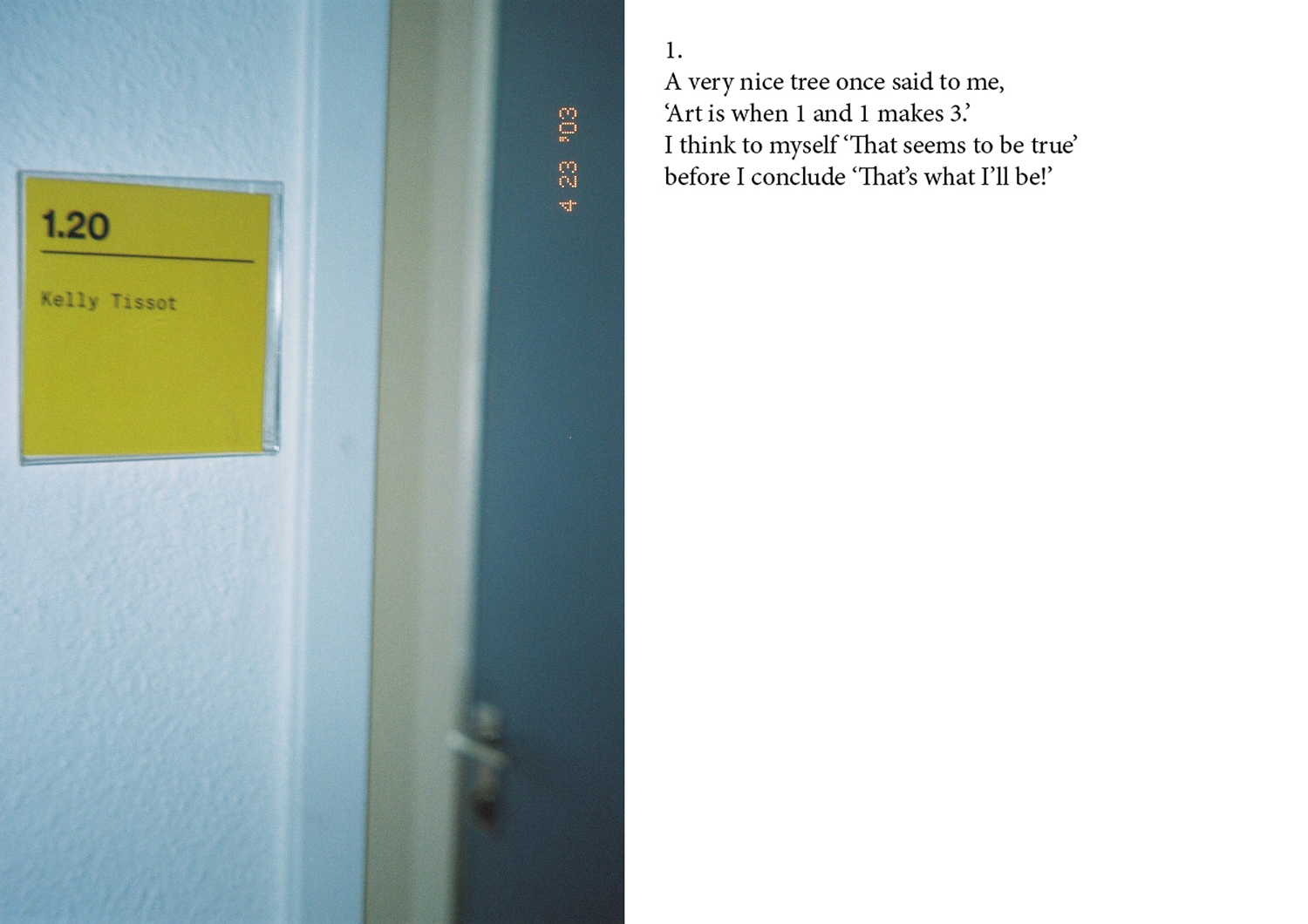
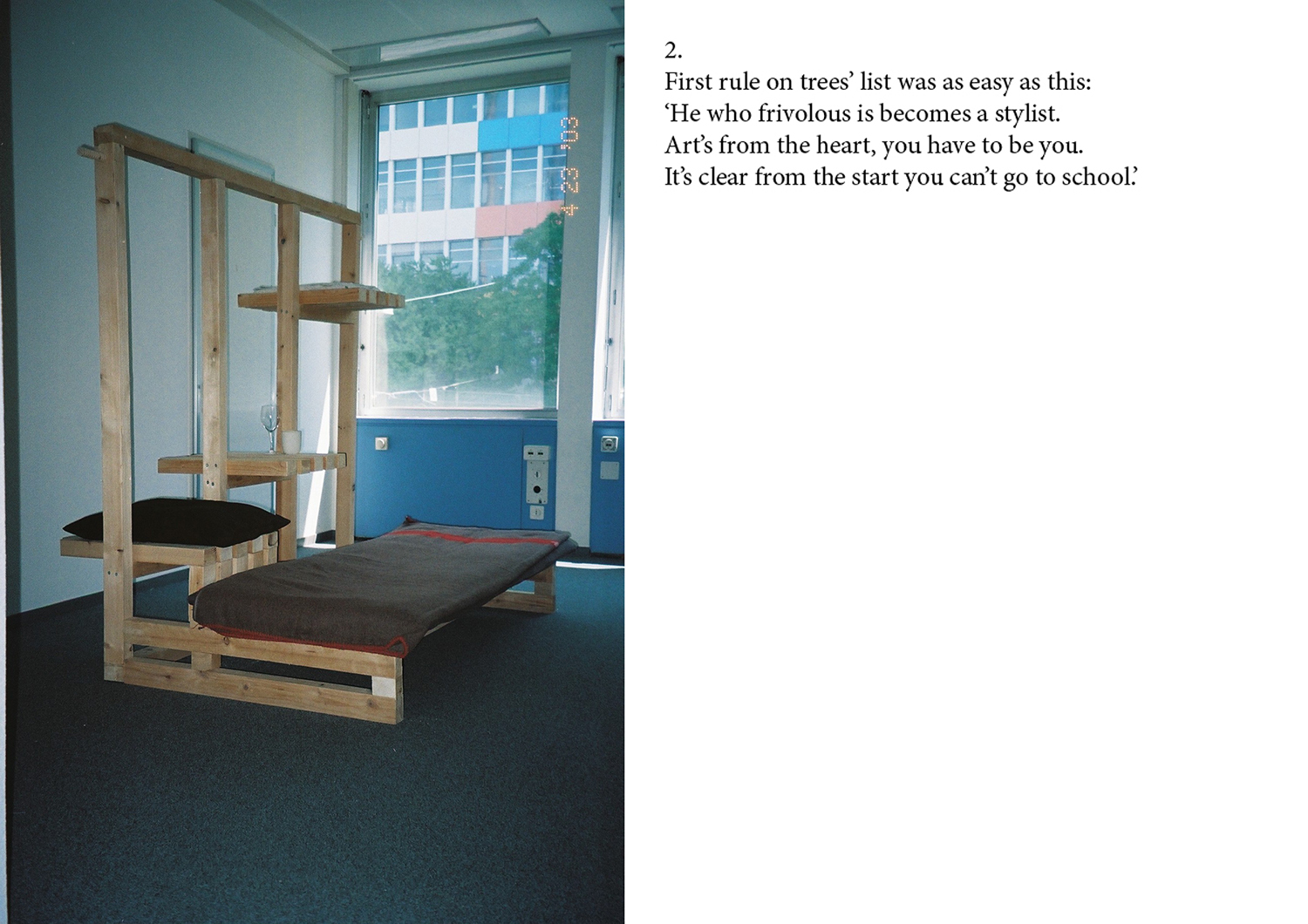
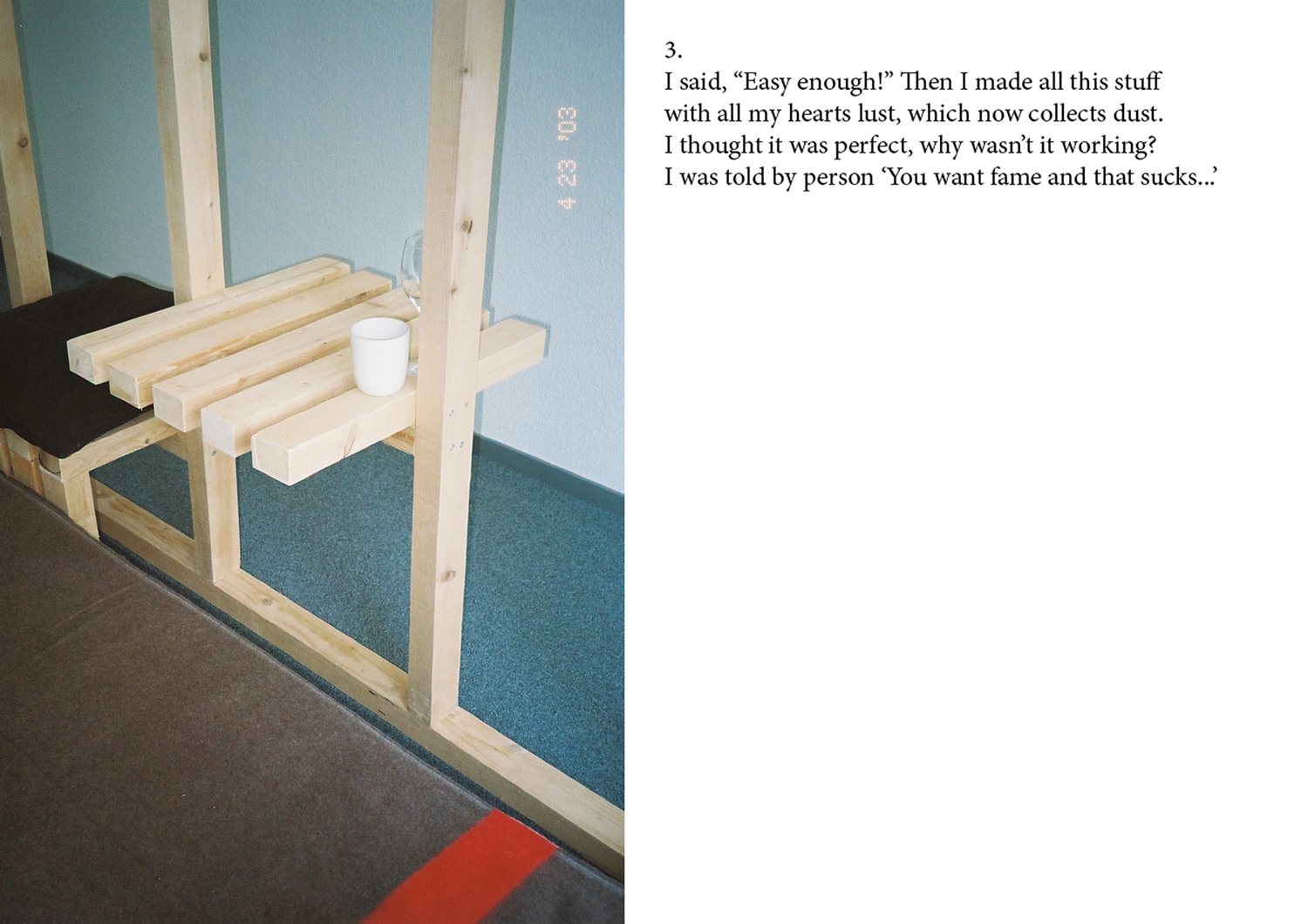
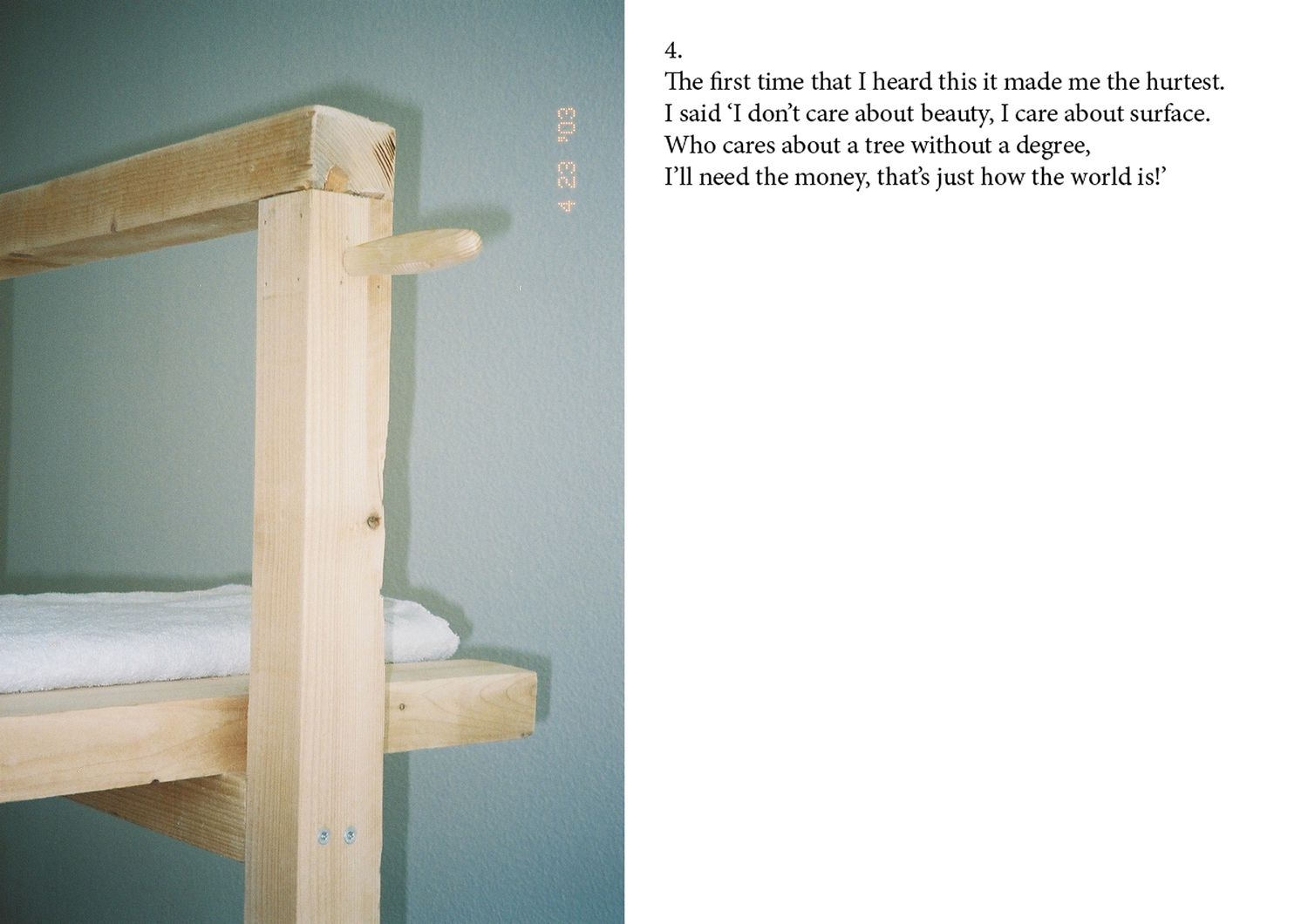
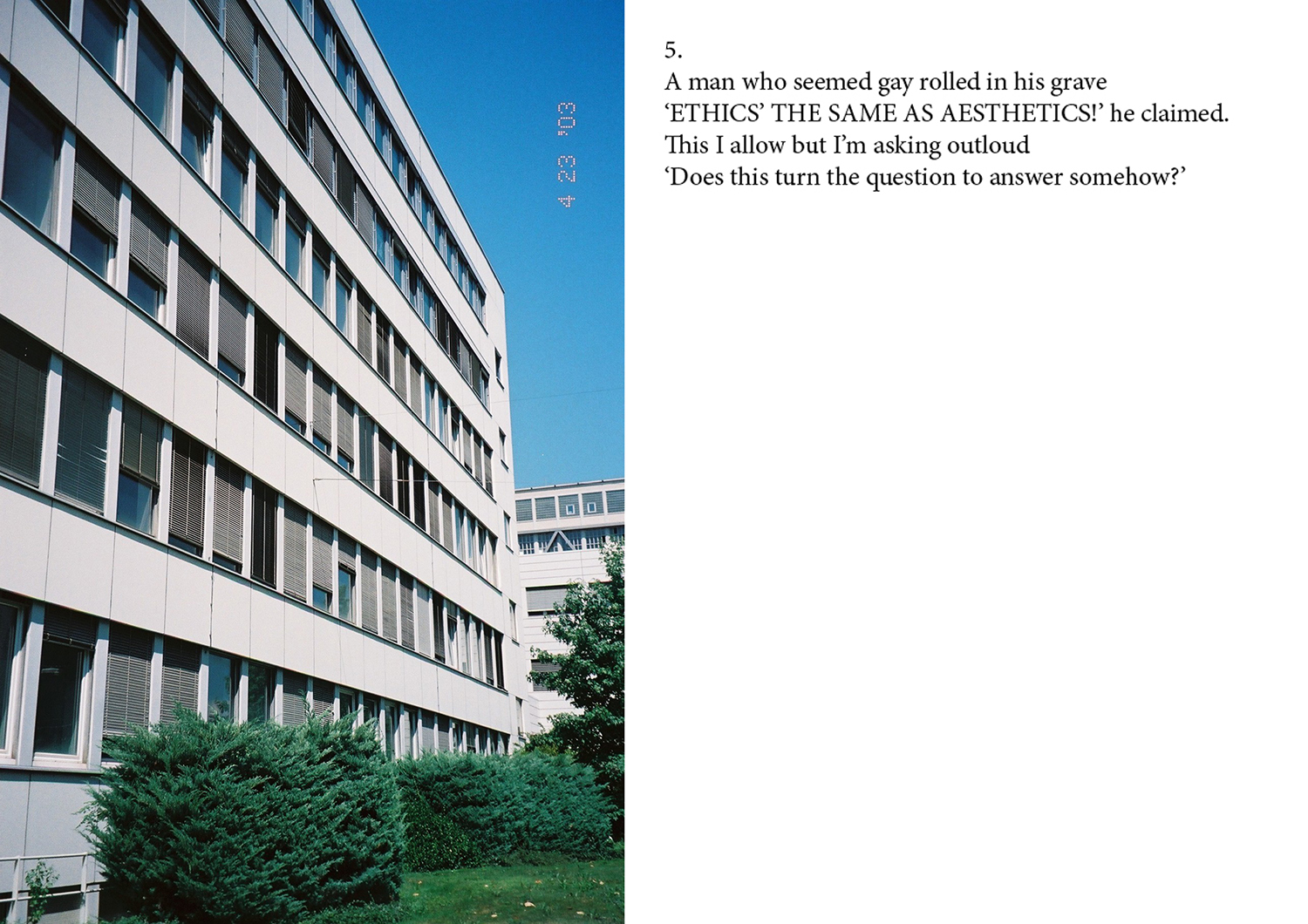
The Museum of My Bygones

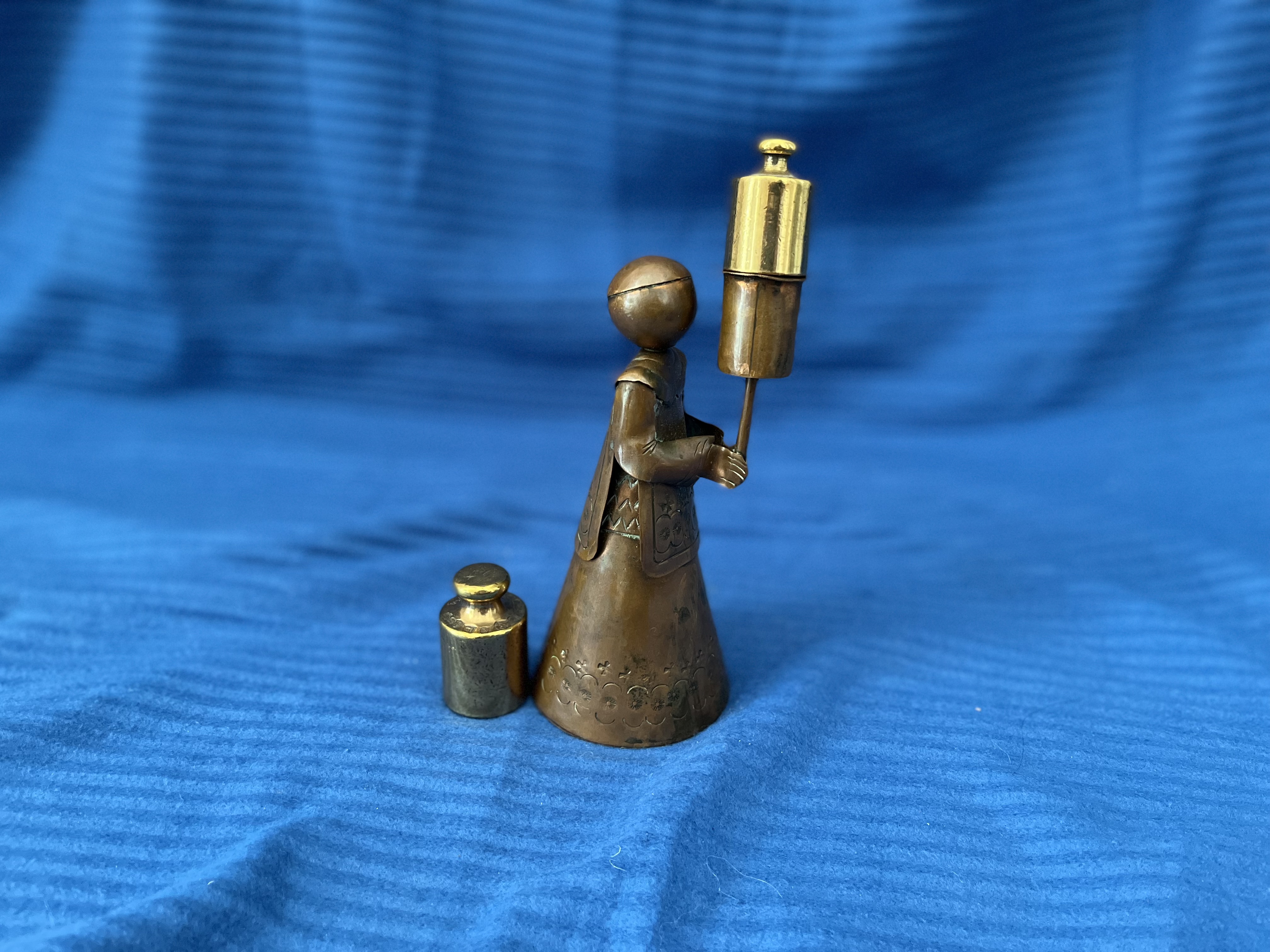
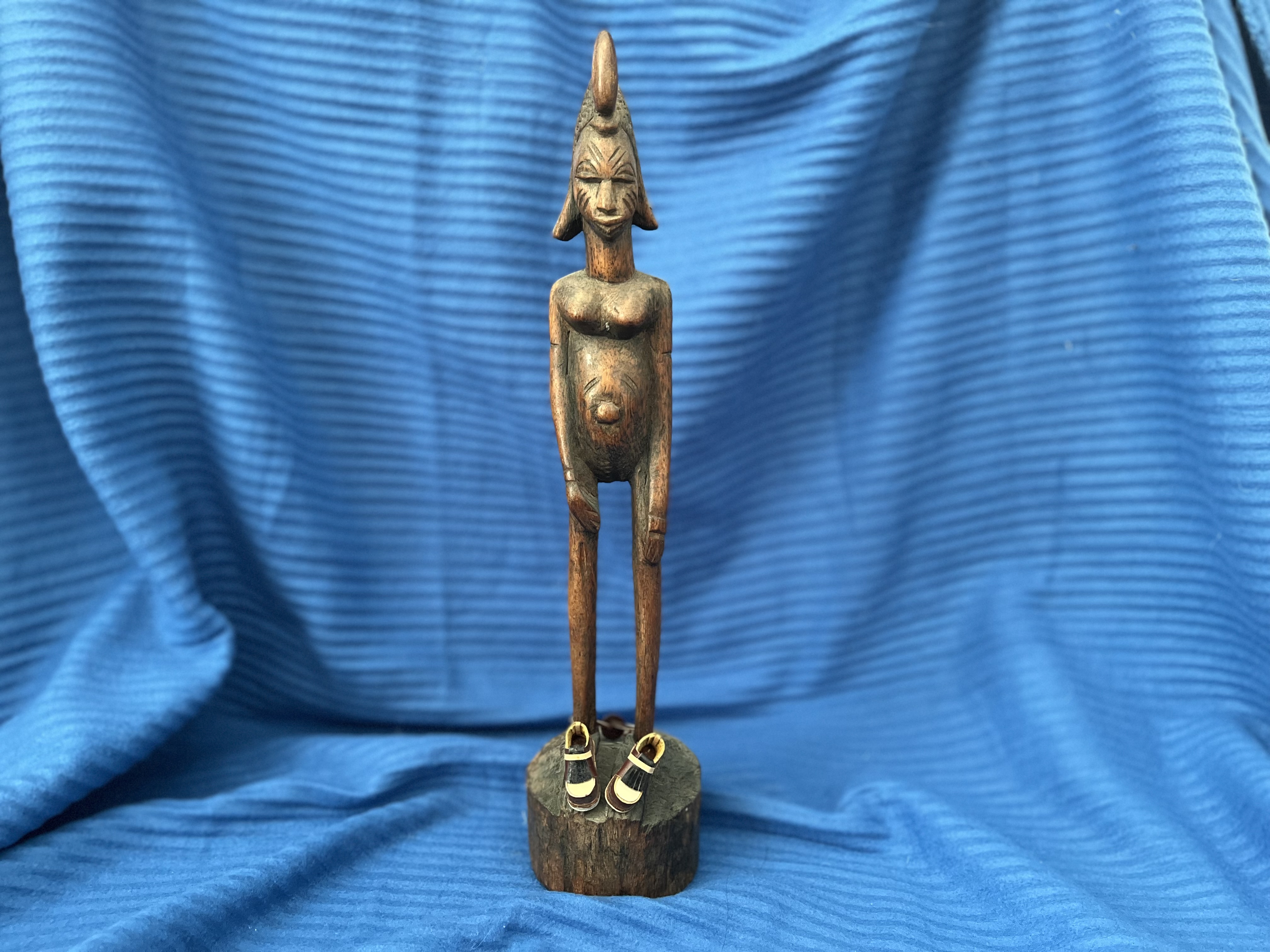

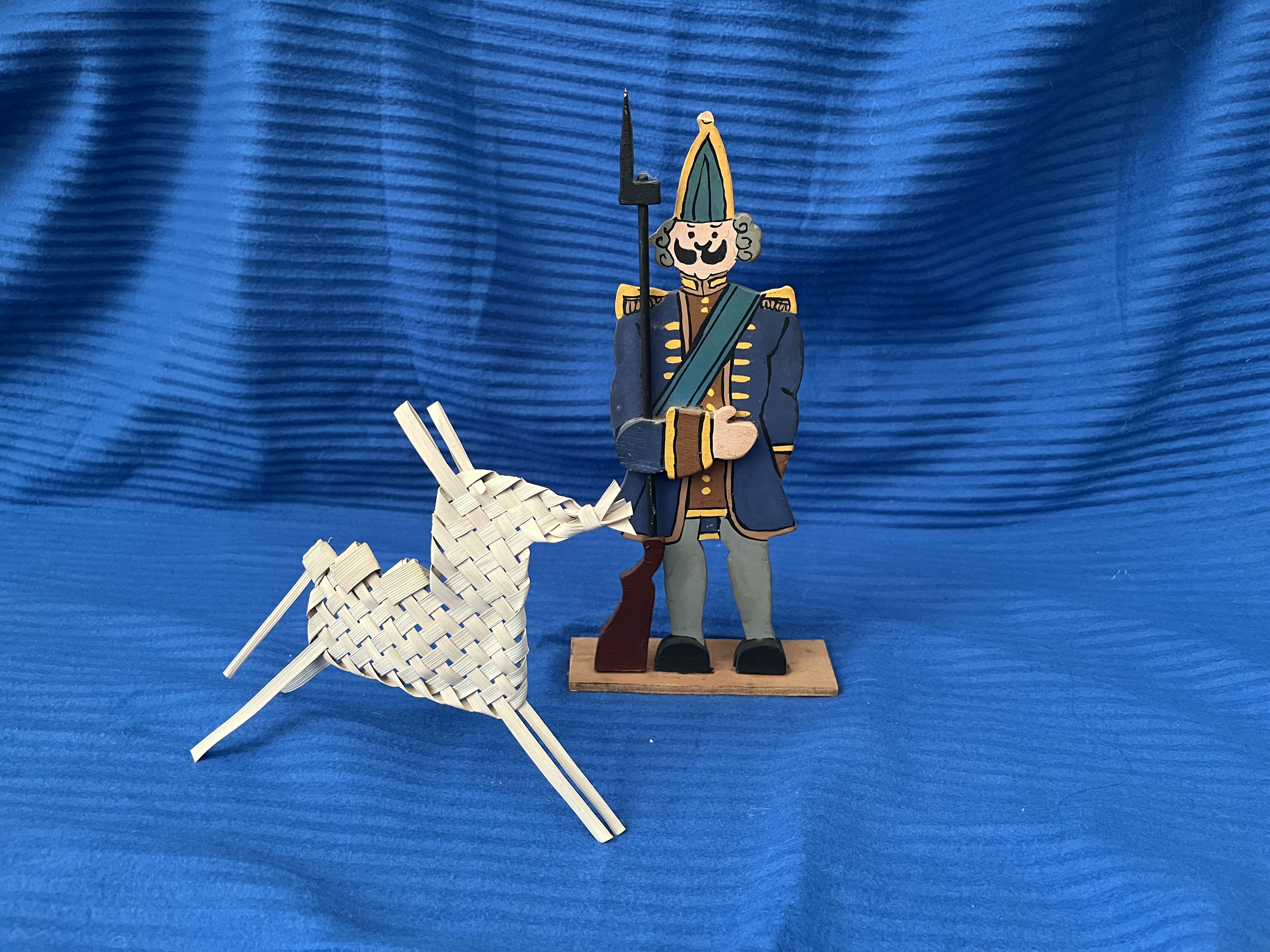
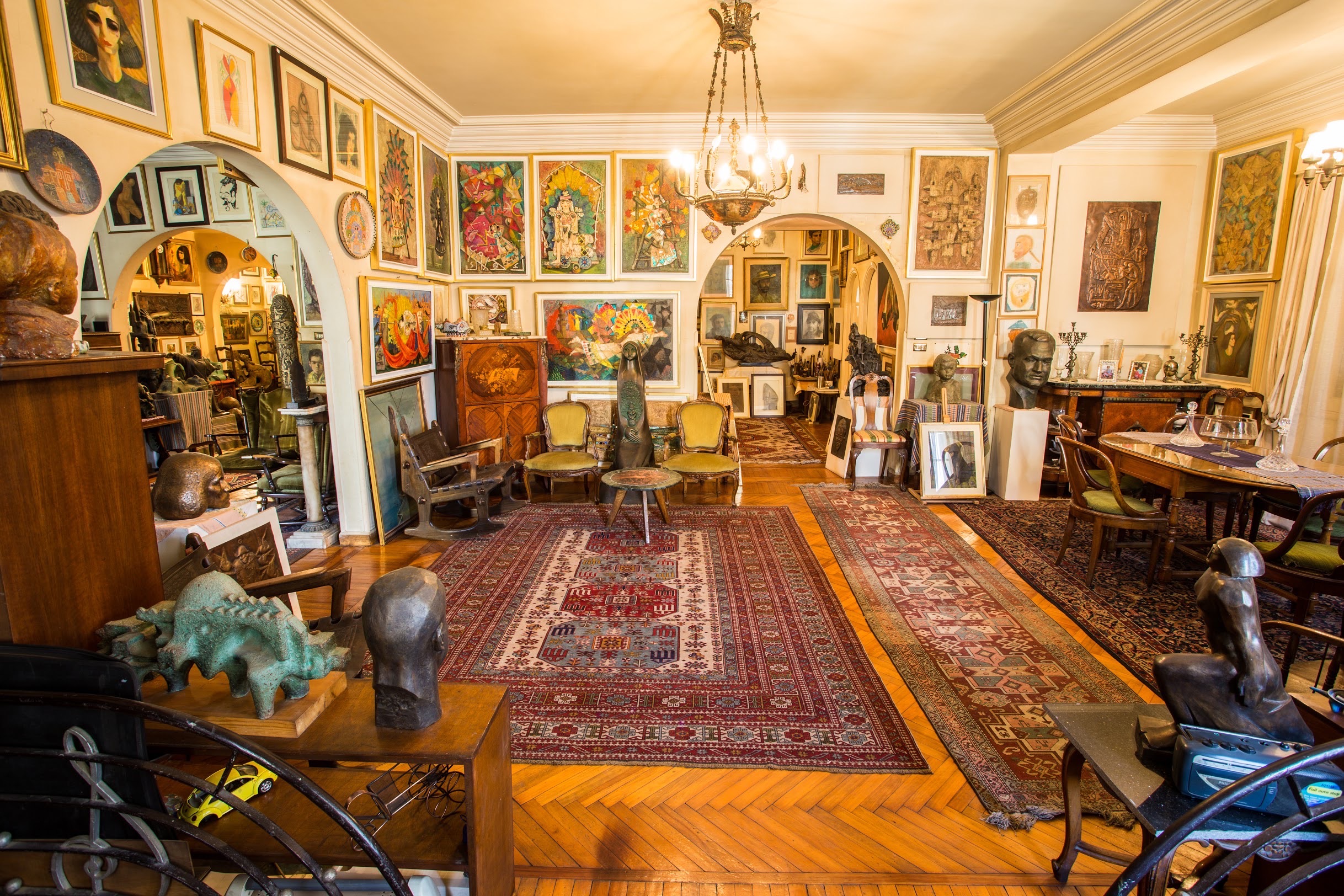
FEDORA / Temporary Artspace
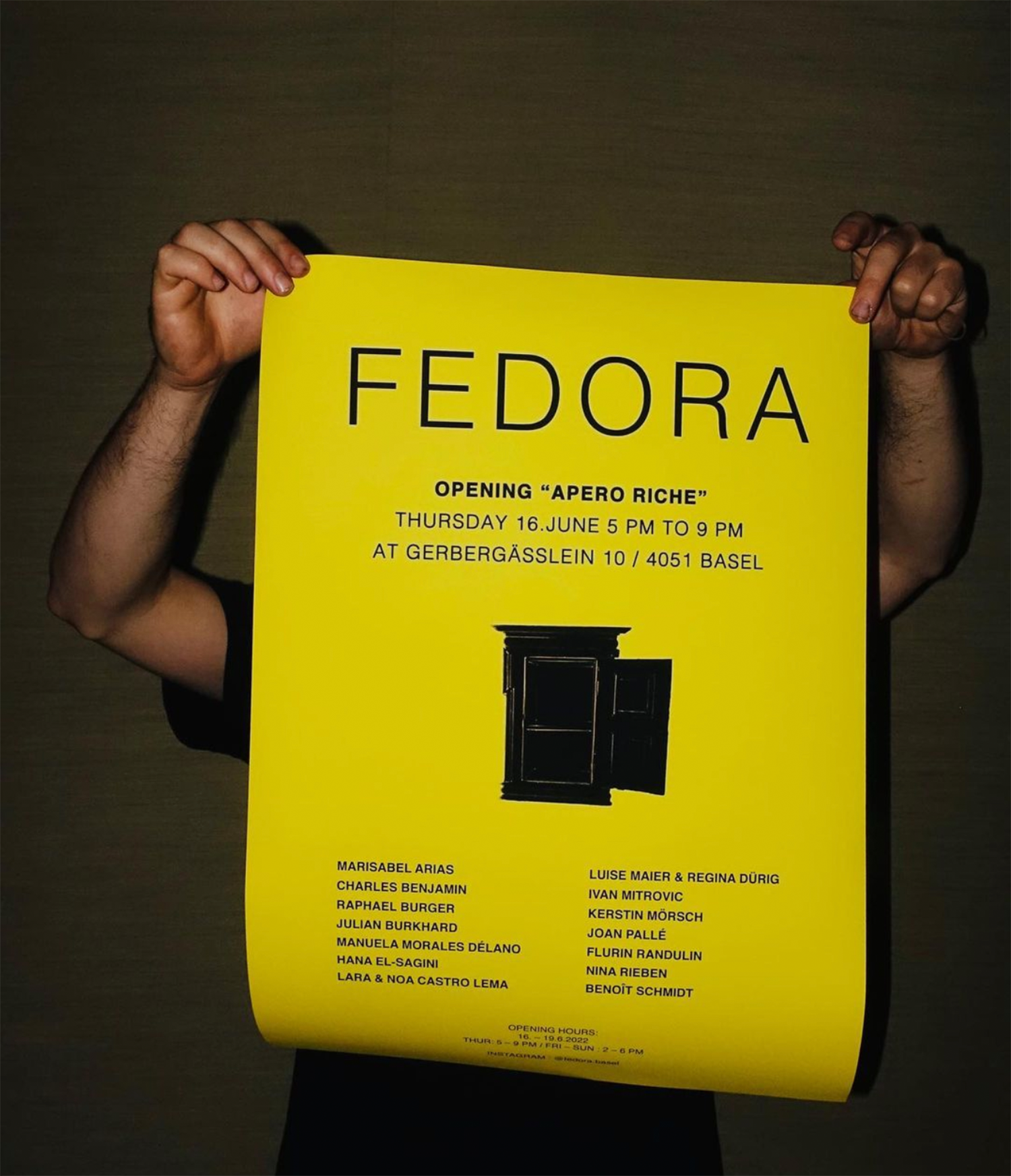
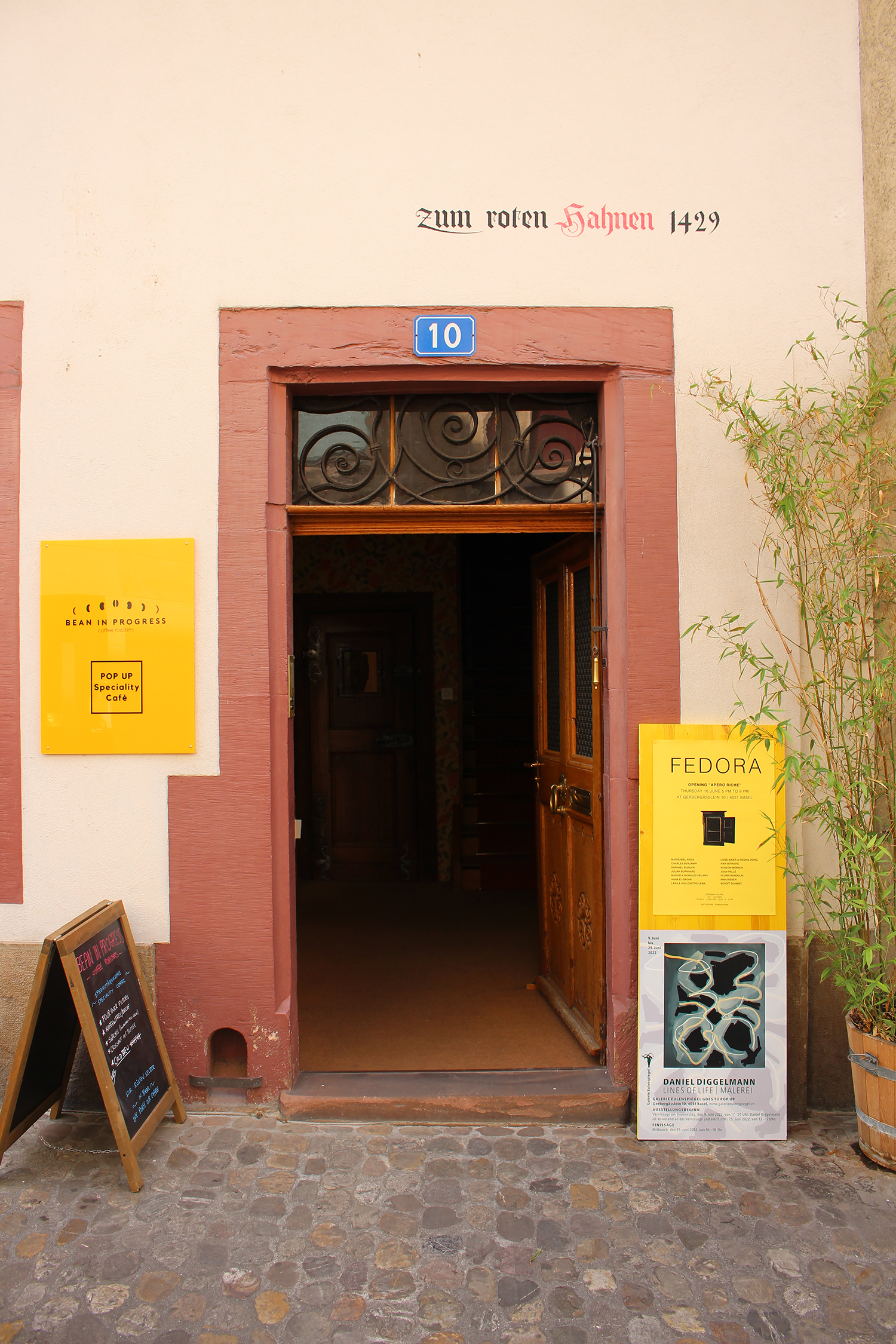


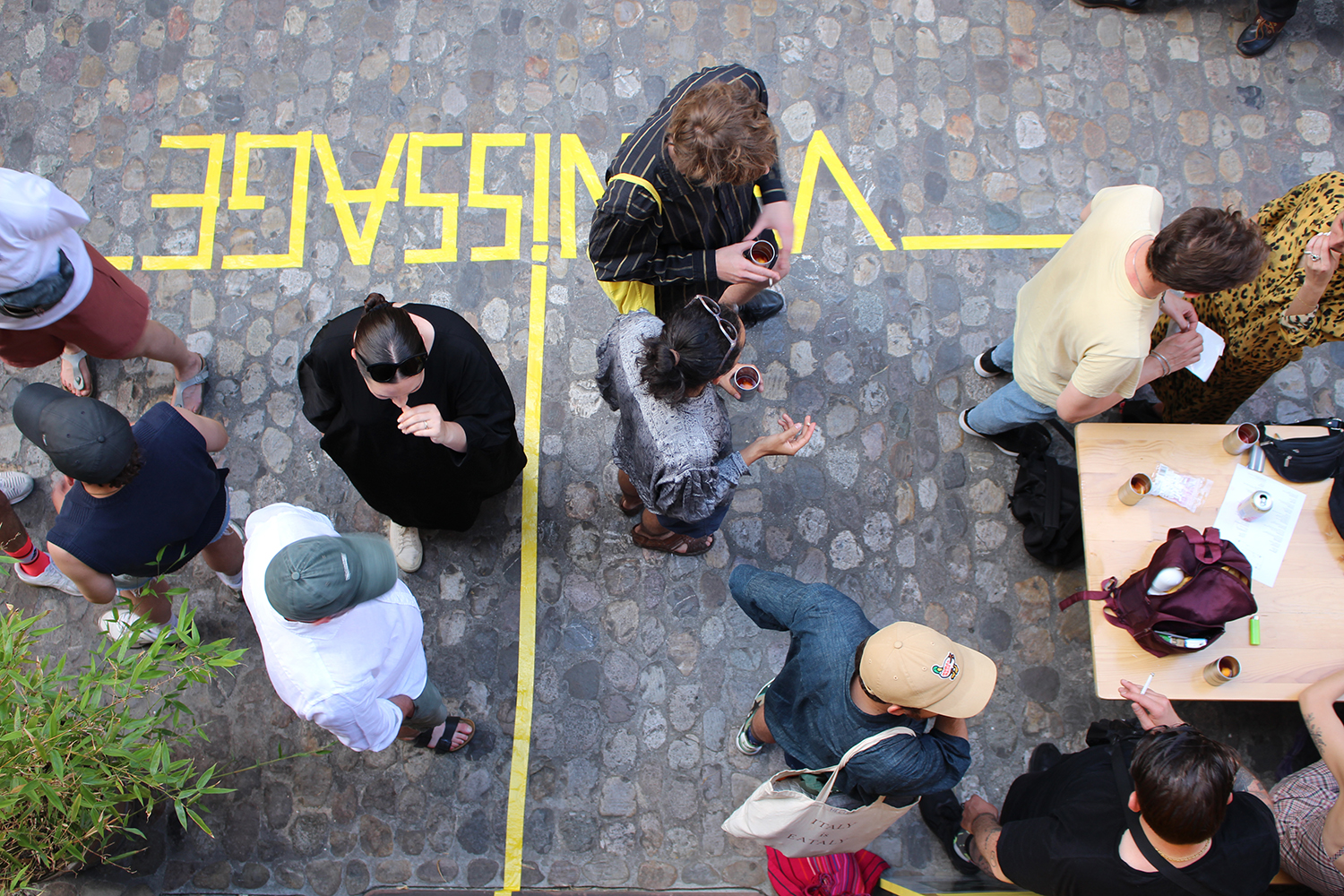
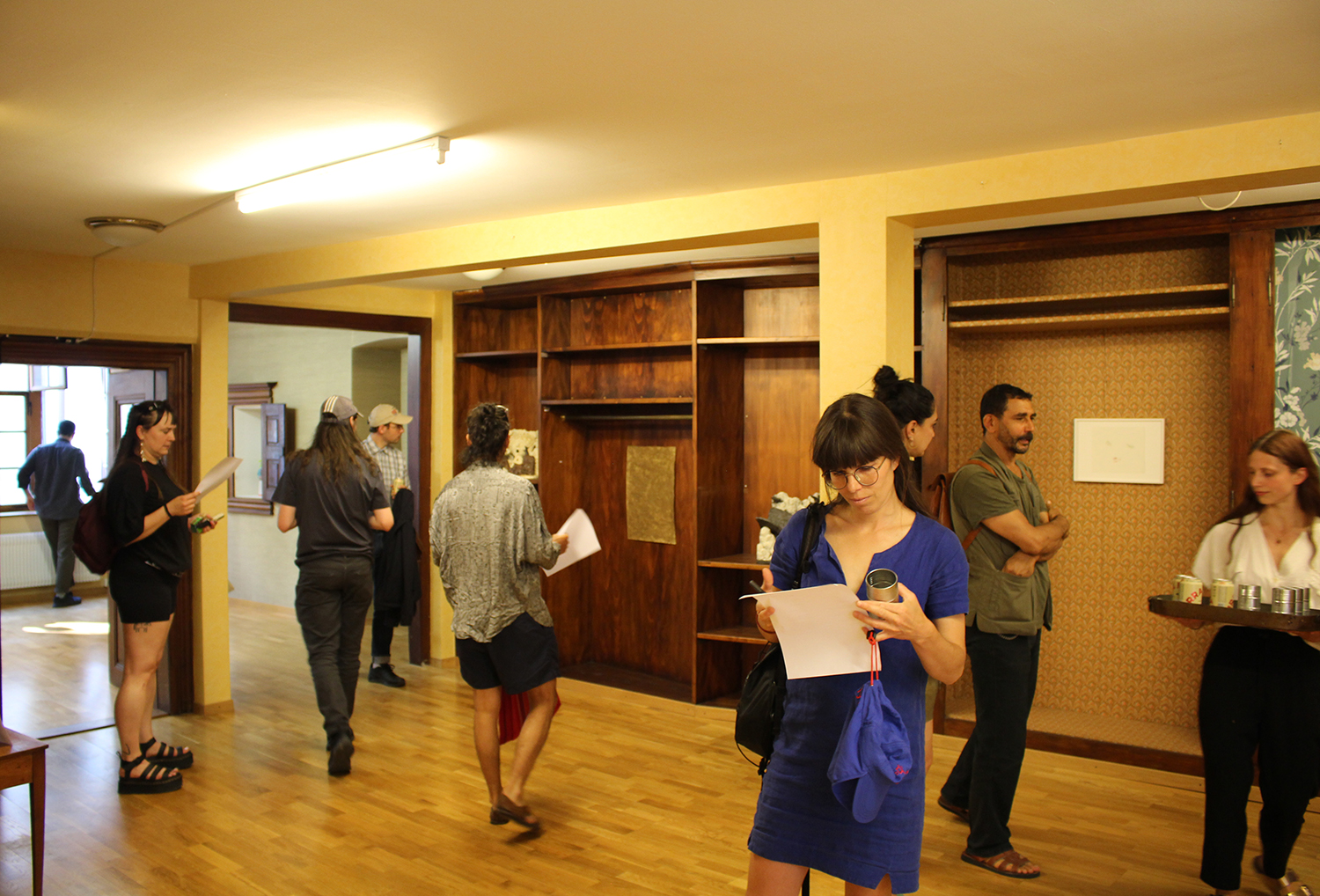
DELAY
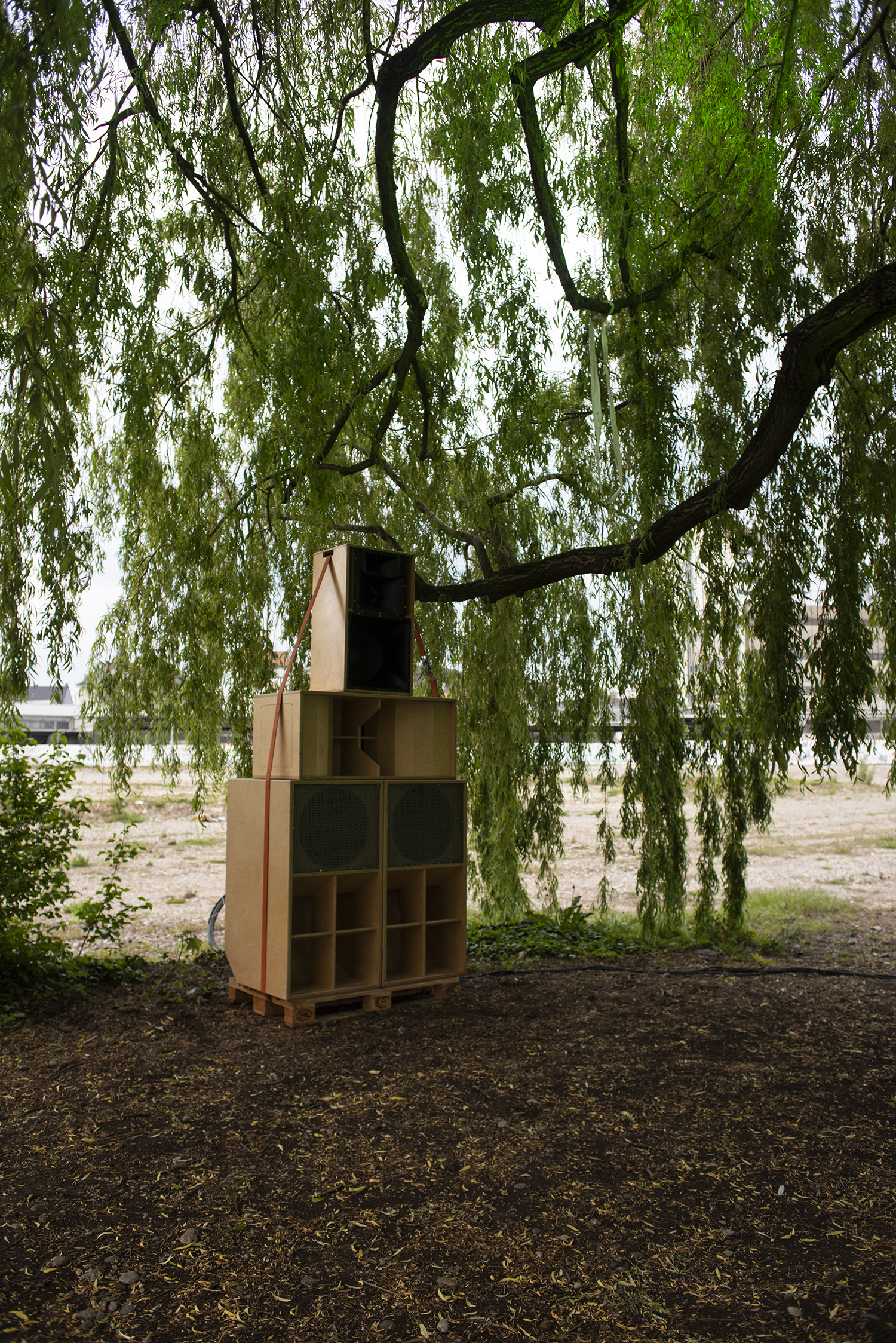
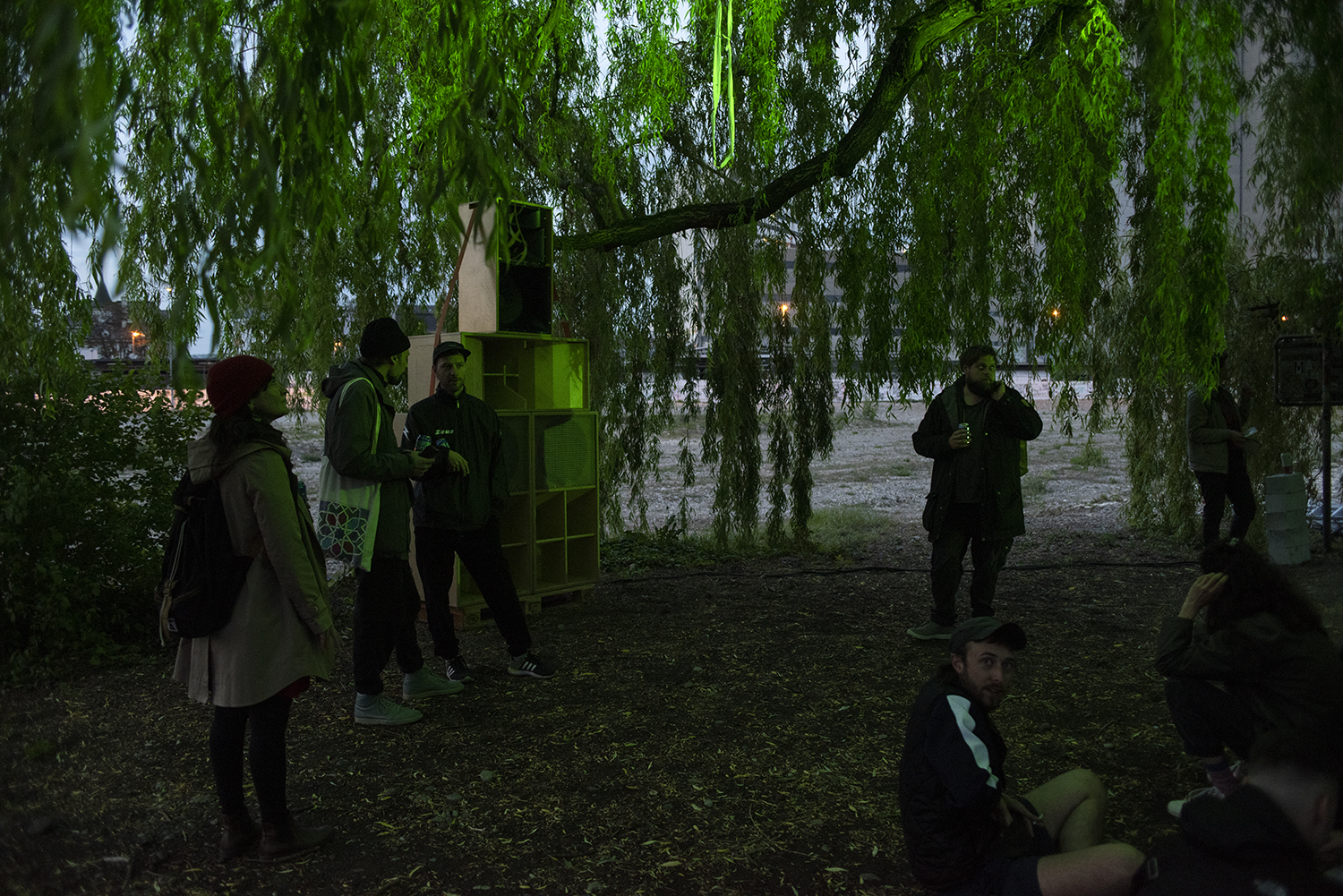
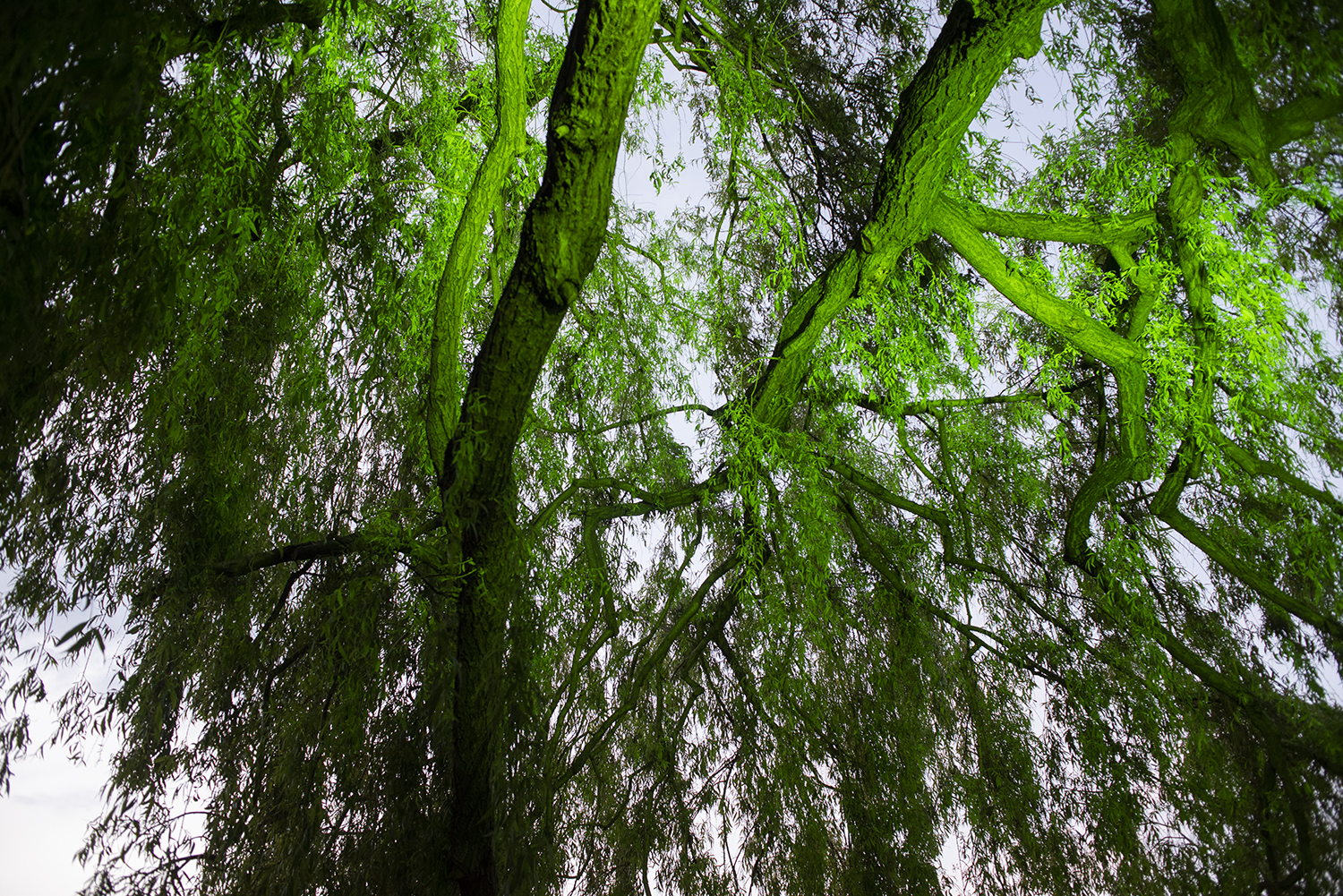
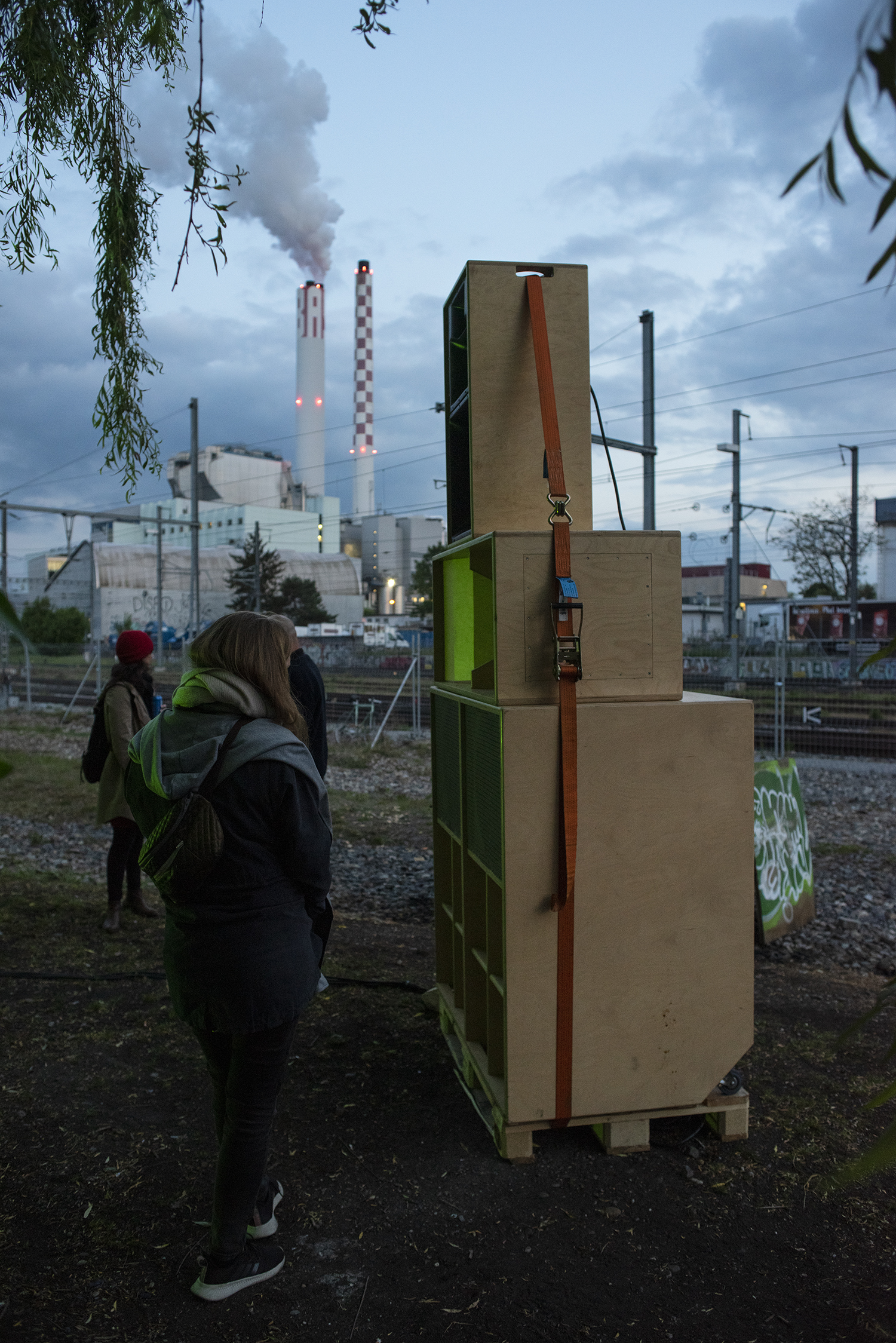
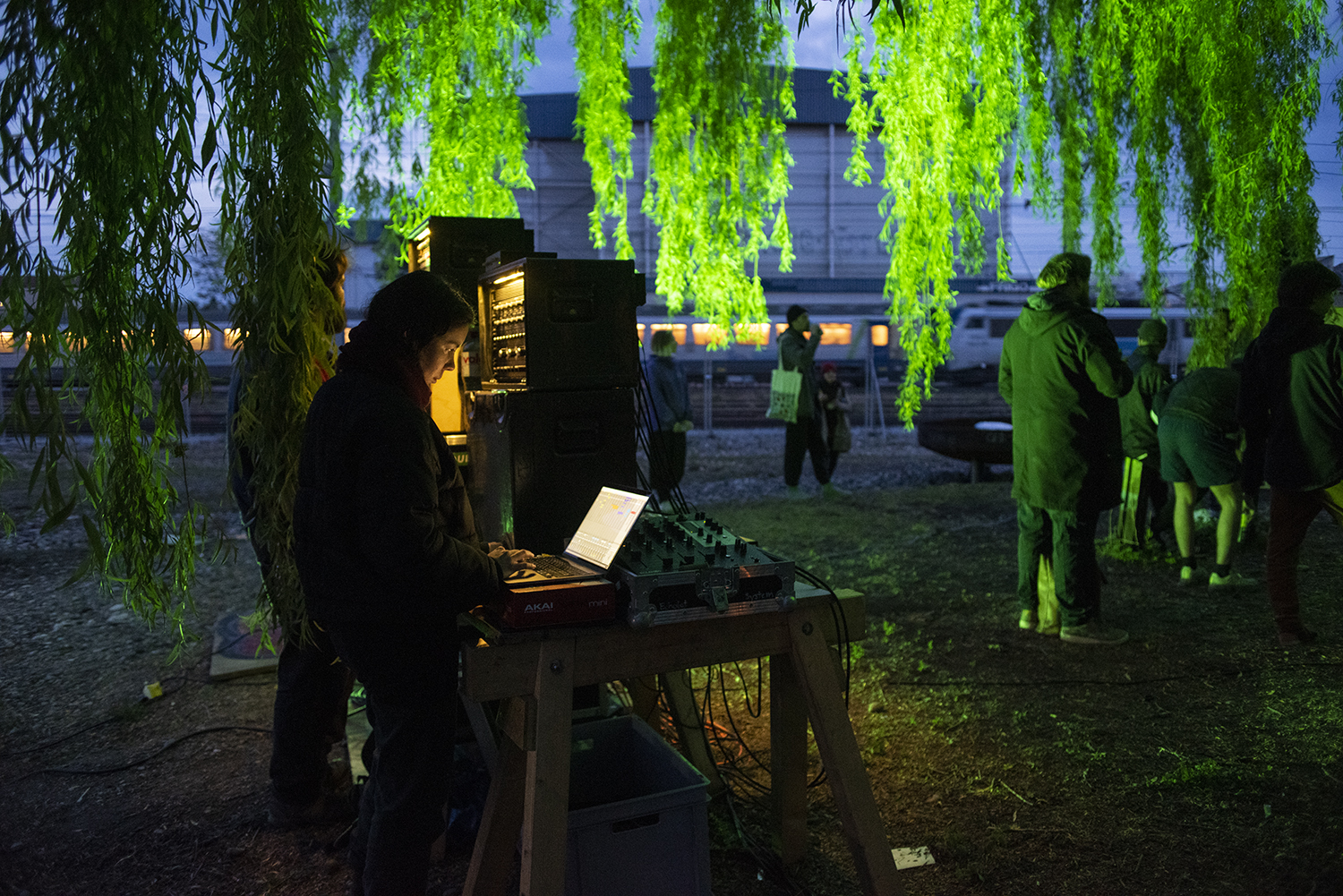
Everybody was young very body was tired.
I was on the run from everything.
I came to stay.
I was late.
I was late.
I came to stay.
„You wanna see this place we found?“
It was intense, a real rush.
I will never forget that.
I came to stay.
I was late.
I was late.
I came to stay.
This life, this city, this sense of…
Everything changed from one day to the next.
„We will never forget that.“
I did not really care at that time. And when I think about it now, I still don`t care.
Only now do we start to understand
Everything was open, everything was possible
Was it too late?
Was I too early?
Was I too late?
Was I too late?
I walked the streets, the houses smelled like basements.
Everybody was young and everybody was tired.
I don’t know how often I had to come back.
I don’t know how often I always had to.
I was too early
I missed it
Finally
Everybody has already left
//
DELAY took place on May 4th, 2022 at the Lysbüchel Areal in Basel in collaboration with Xenia Wiener and Flavio Alfeo. Images: Christian Knörr
persona sentimental
_Ana Jikia.jpg)
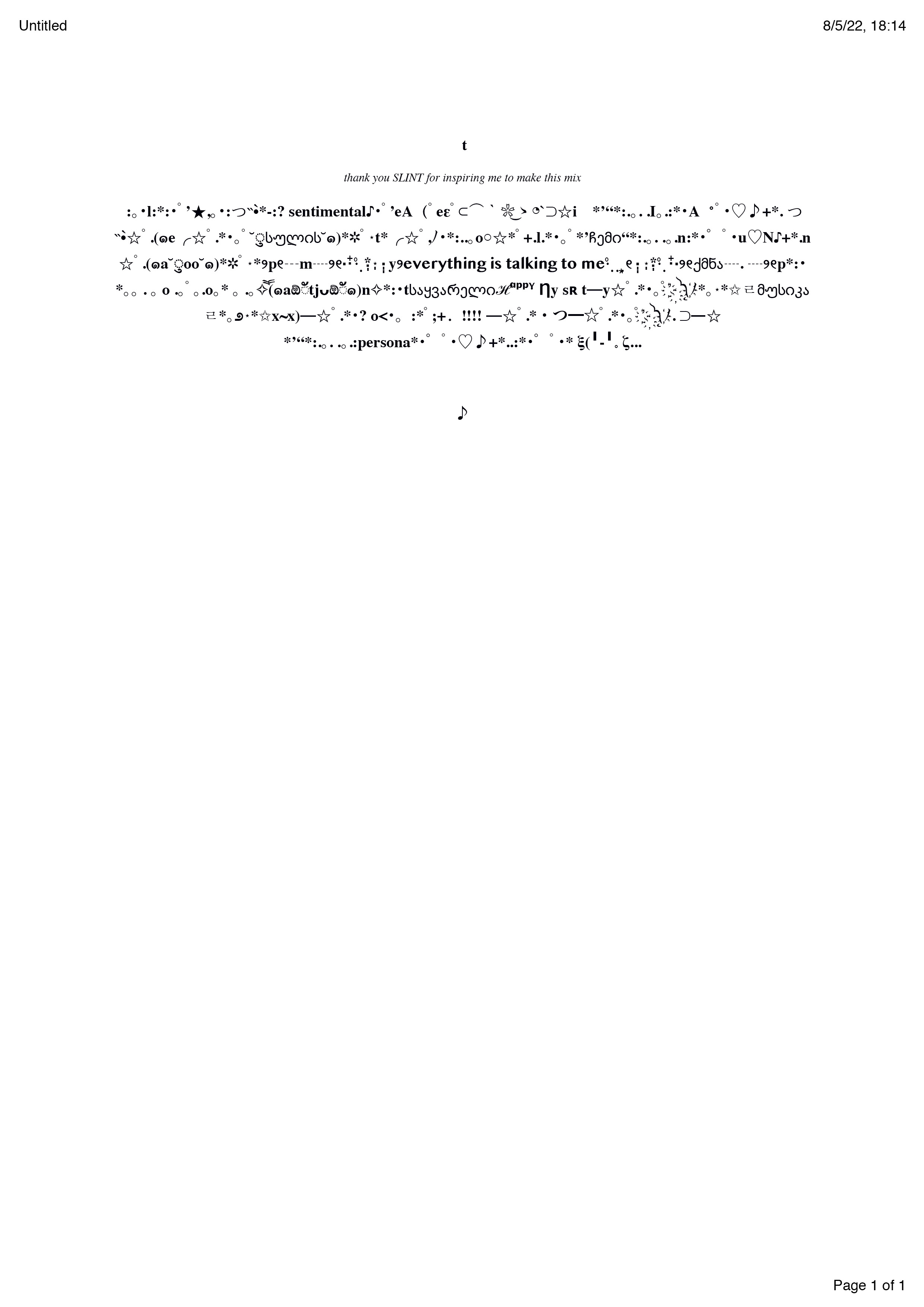
Skeleton of a rational yet emotional process
already so late but can't move
the earth is my room
full of treasures
overflooding information
still a recognisable palette
please take off your shoes
welcome
a tour guide in my reflex brain mode
what is important ?
we have to make decisions
before the choice paralysis
too late
my laptop is breathing loud
or is my hard drive singing ?
the lullaby gets on our nerves
they both are too full
私もパンクしそう
----
i want to talk with my heart and my guts
i want to be my own lover
ay eye aille 愛
shiny shiny me
all those bruises on my creamy skin
turning roasting golden
ran all the way holding my boobs dancing
bumping and crashing in everything on the way
----
deadline is at my footstep
you really need to give something because now it will ring
tears of sweat are sparkling
everything is warming up
where does the trash go ?
does it burn does it flow
鏡に映る私
反射は燃えないゴミ
pee squat is the best work out
and reflex is brain work out
お腹アタック
let’s poop this feeling
----
ring
the gong reverbs silently as time shows 23:59
ving-trois heures cinquante-neuf
一瞬目が泳いだ
it’s now
i dive
Idea 25
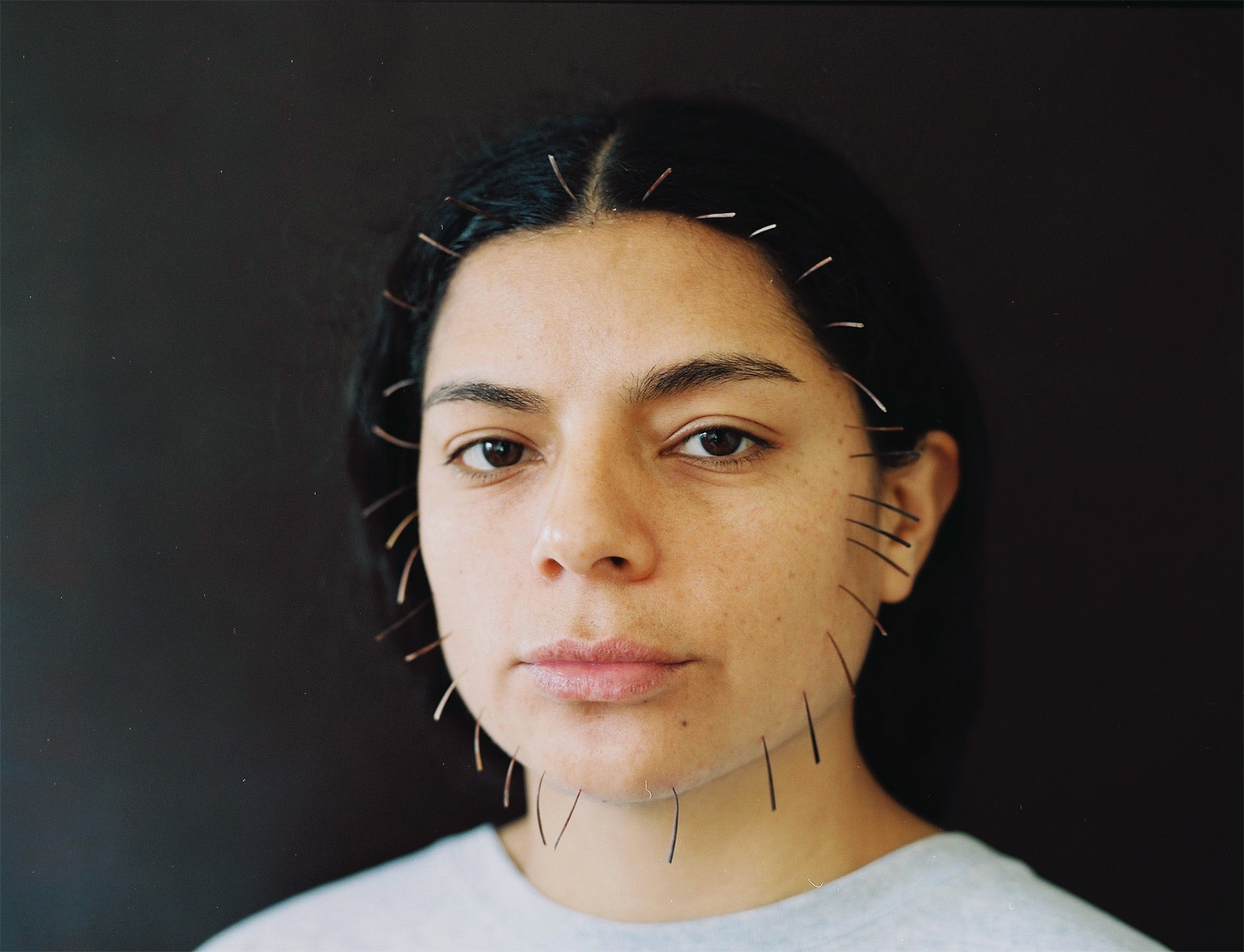
PLACES TO CRY
It has been 5 years since I moved to Basel. I still get lost sometimes and actually have to check Google Maps to see where I have to walk or drive through to reach my destination. Although I pass by some streets every day, I could not tell them by their name.
I started taking long walks shortly after I arrived in this city in order to adjust my lack of orientation. I lived in Gundeli at the time and went for walks without a specific destination, just walking and seeing what the neighborhood would offer me. What was then a way to get familiar with a very foreign place became a habit over the years. I still get off at Johanniterbrücke when I'm driving home from university and just walk across the bridge, along Feldbergstrasse, stop at the intersection of Klybeck- and Feldbergstrasse, cross the crosswalk toward Dreirosenbrücke, pass by Vito's, where people are blocking the sidewalks waiting for their slice of pizza, my hairdresser, who every day leaves a sign in front of the entrance saying she still has vacancies, the owners of La fourchette, who sit on the red bench in front of their restaurant after their shift, the chef of Ephesus, who always nods when he sees me to say hello, and finally I pass St. Joseph's Church, whose bells ring every morning at 7 a.m. for about 12 minutes. My average walking speed is 4.3 km/h, and the average number of steps so far this year is 8090 per day.
As soon as I had my first bike here, the city became much smaller (average speed: 25km/h). I started to ride the routes that I would normally walk through, getting to know a new place and a new face of the city every time. On all my numerous walks and rides, I experienced these places in the most diverse ways possible. Early one morning, as I was walking along Klybeckstrasse on my way to work, a woman passed by rapidly and gave me a short glance. She was obviously sobbing and crying and running frantically. I was shocked to see a person in such a state in the middle of the street, so early in the day, and before I could even react, she was gone. In the hours that followed at work, I thought about this incident. What had happened to her? Where had she gone to? Did she have a home to return to?
As I thought about what makes a city a place with a high quality of life, I began to look more closely. There are public places for almost every human need: Eating, drinking, talking, peeing, and relaxing. What I realized, however, is that experiencing a public space probably always requires one to be in good mental and physical condition when you enter those spaces. The city as a whole is always operating, it never sleeps, and its infrastructure is maintained in order to sustain itself. What a functioning city wants is functioning people who inhabit and use it. One would go to a park to enjoy, but where can we go when we are deeply sad and desperate? Feelings associated with sadness and despair seem to have no place in public urban planning and infrastructure. But what if I do not want to keep those feelings intimate, close them up in my own four walls or get caught up by them while on the way? Can a city create or offer safe spaces that come close to what we call home? In between all the transit- and non-places, consumer zones, kids’ playgrounds, streets for cars and bikes, tramlines, bridges, highways, financial districts, and encapsuled residential areas, does the architecture of a city- even if unconsciously- leave a gap for non-economical places that only serve the human need for emotional detox? Is the city, that as much belongs to everyone as it does not belong to anyone, with its diaphanous, omnipotent character, willing to leave space for such a use of its facilities?
In my opinion, the fact that public restrooms are very popular places to cry and calm down is indicative of the lack of alternatives in public places, and here I also mean alternatives to parks and other green areas. With this in mind, I took my bike, rode my usual and added new routes, and began to look consciously. What I was searching for were public places that - according to my own personal perception - had a certain quality to them. The goal was to reapproach the idea of the city guide and suggest convenient public places to visit when one finds themselves in a difficult emotional state. The list of these places is not yet finished- if it can ever be. Although the suggestions are personal, I still believe that some places offer a quality meant for a collective experience not conducing any economical or functional purpose.
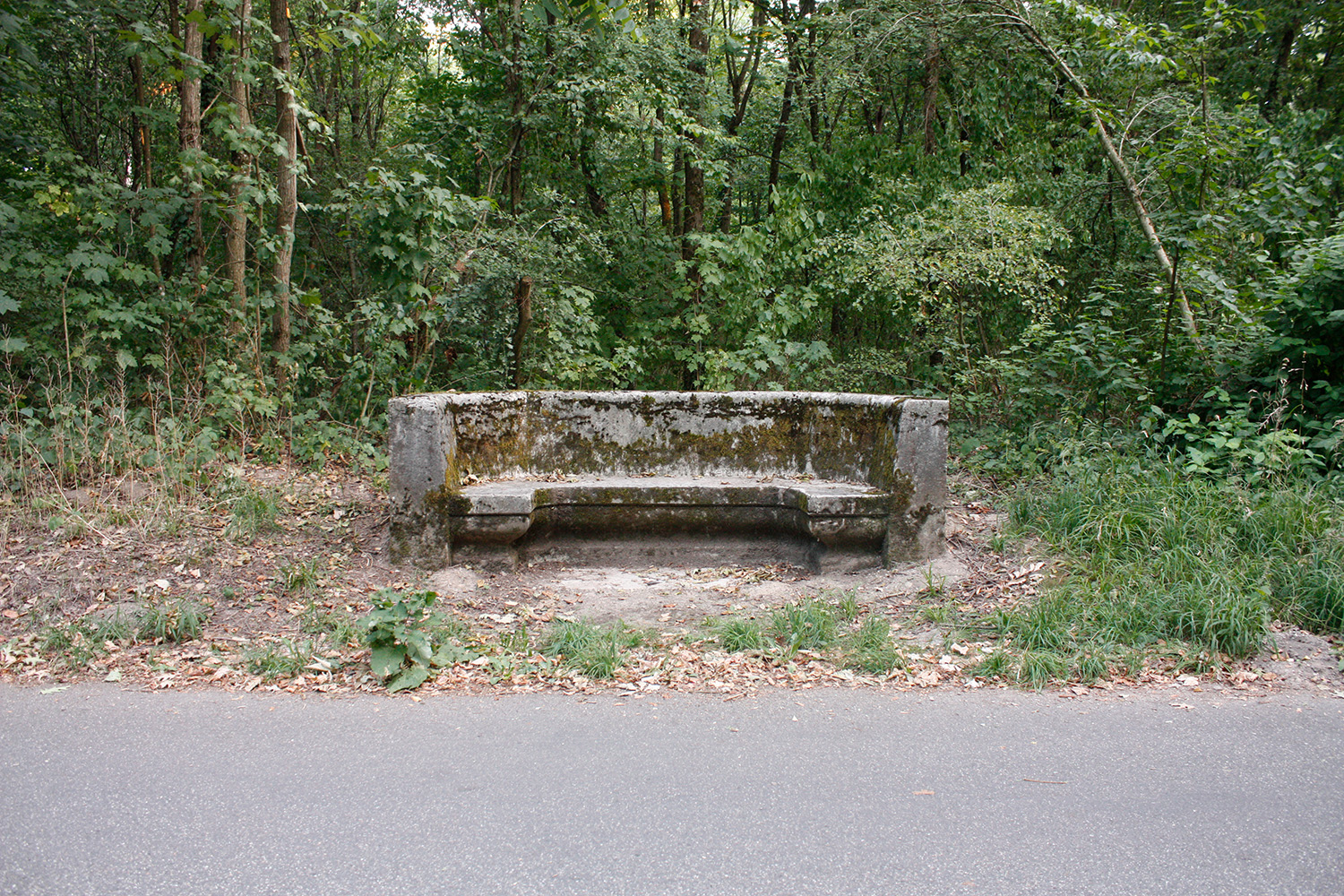
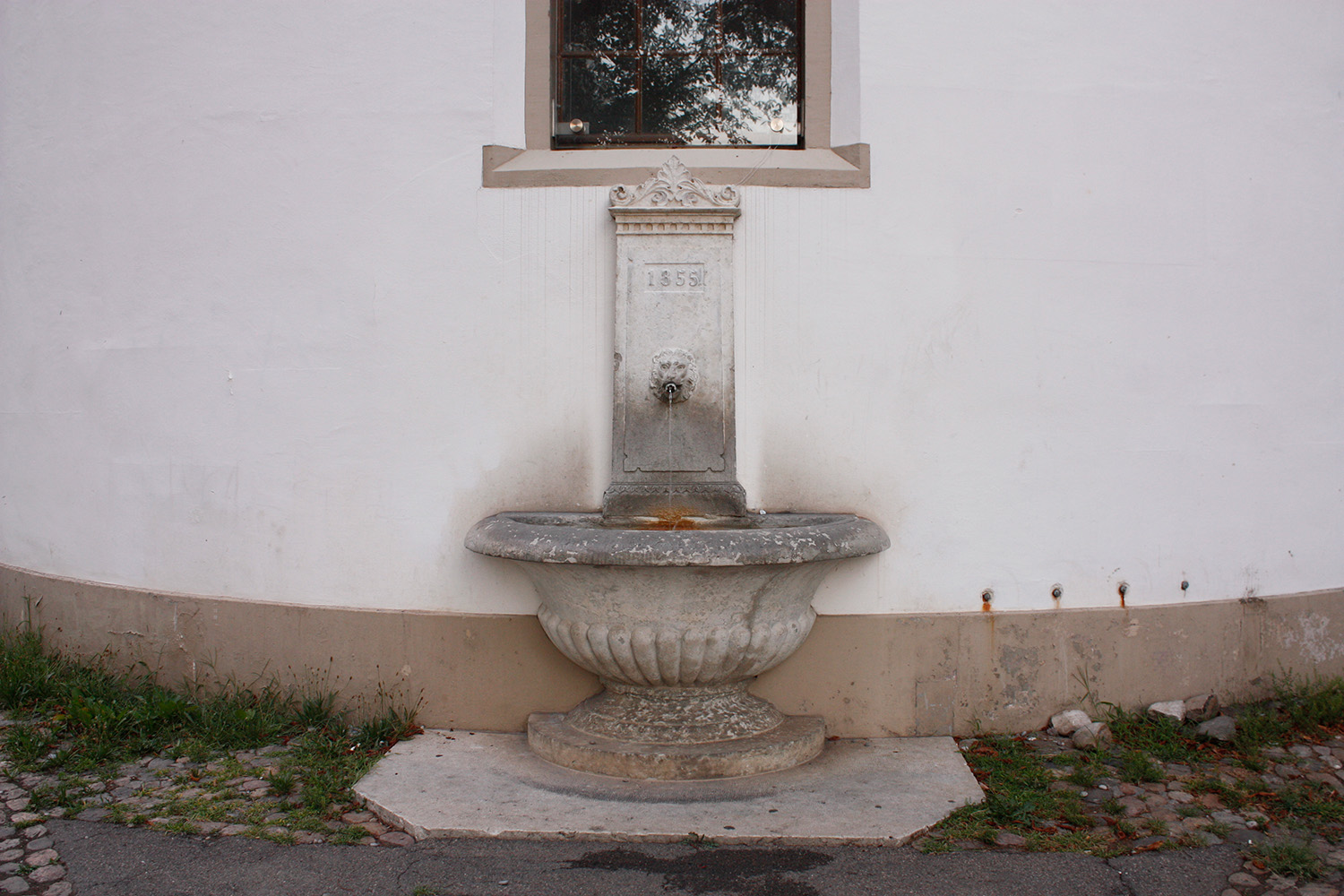
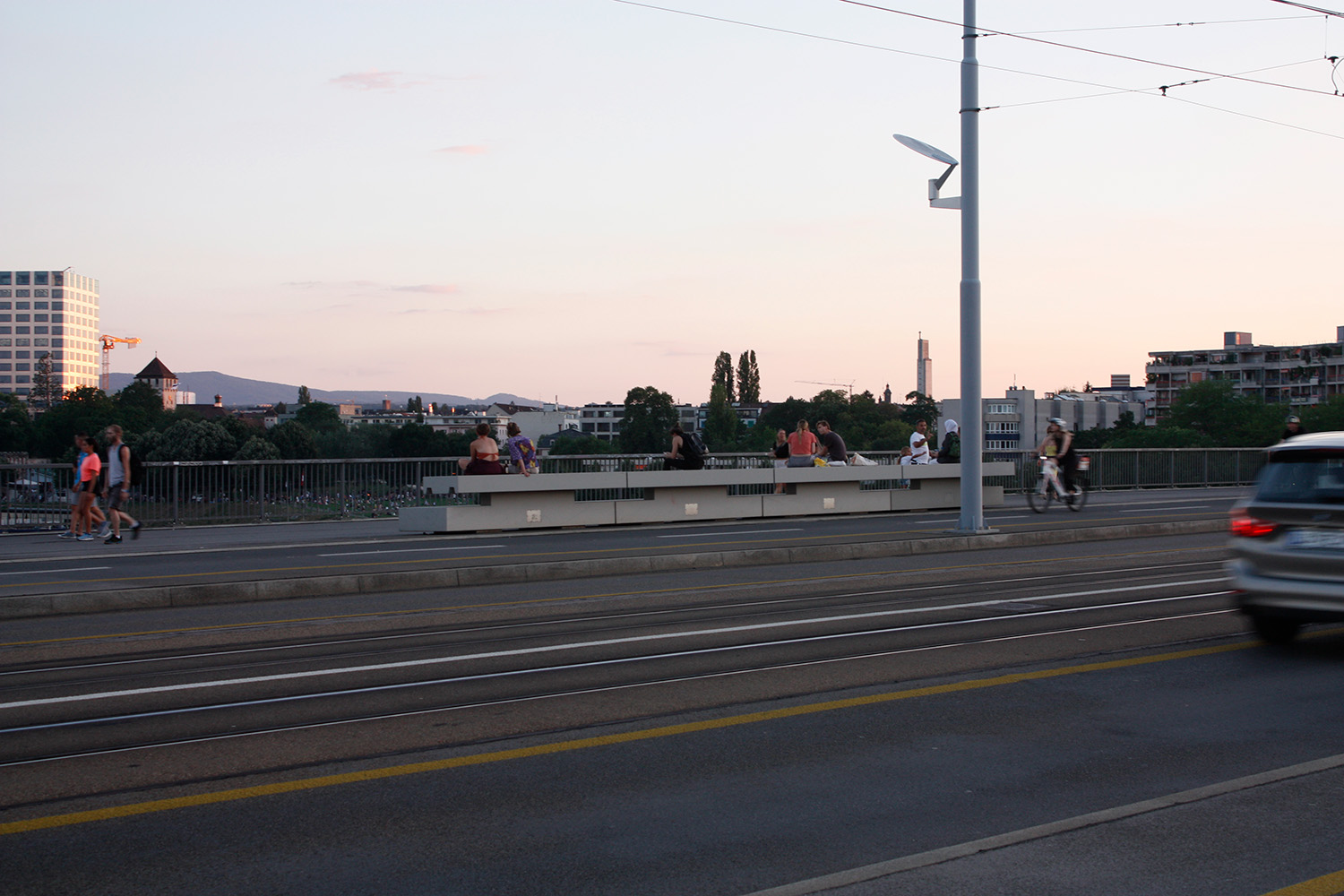
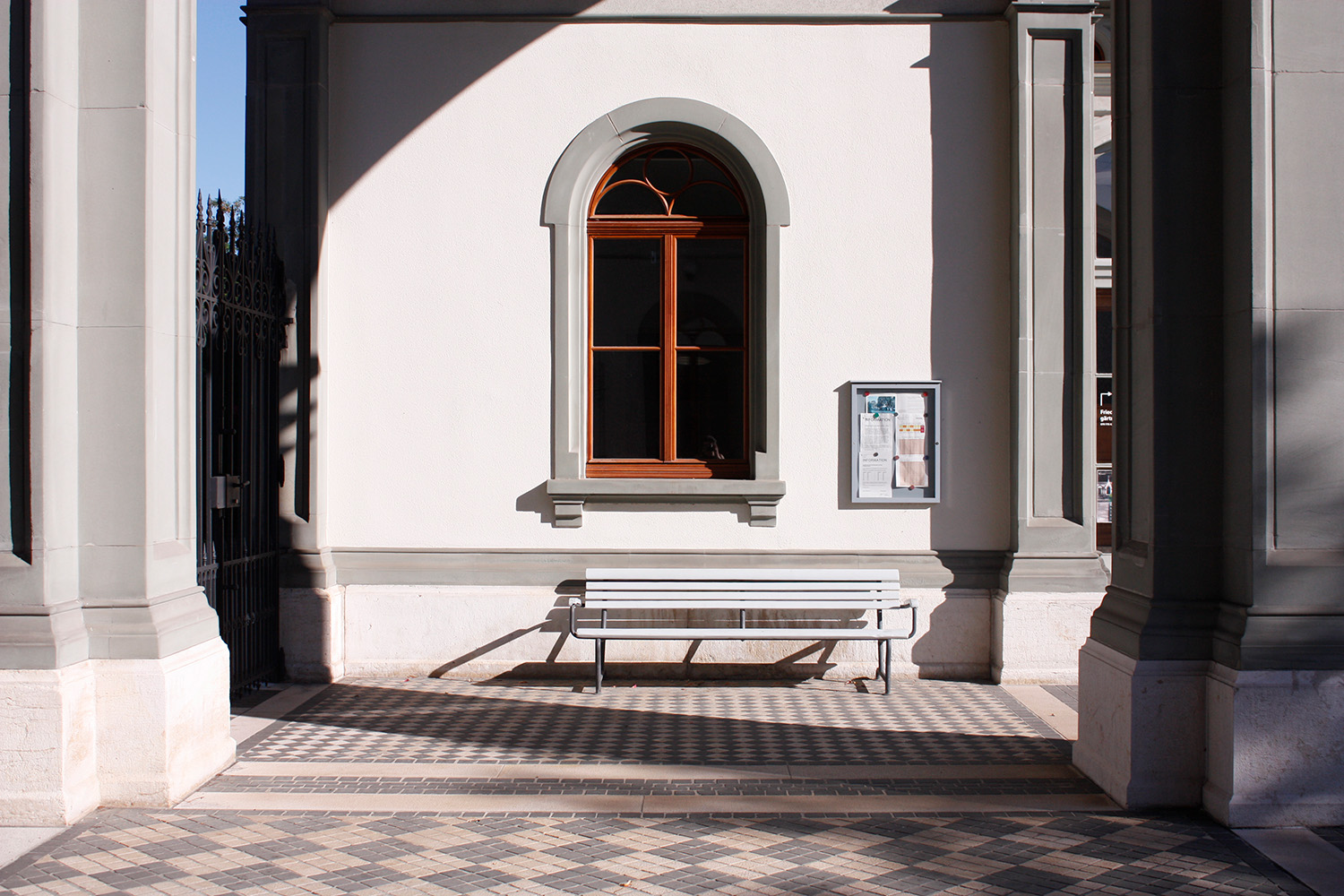
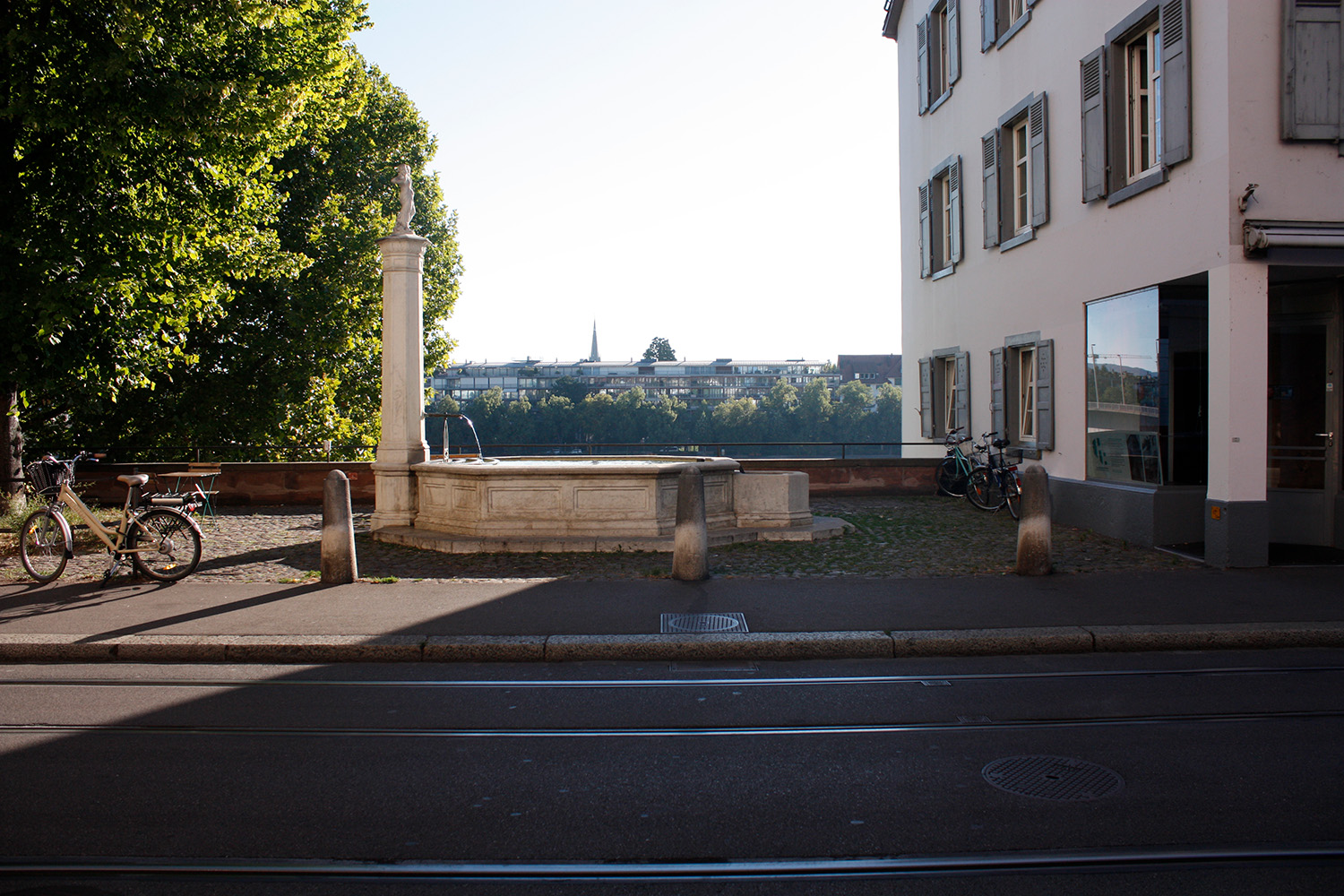
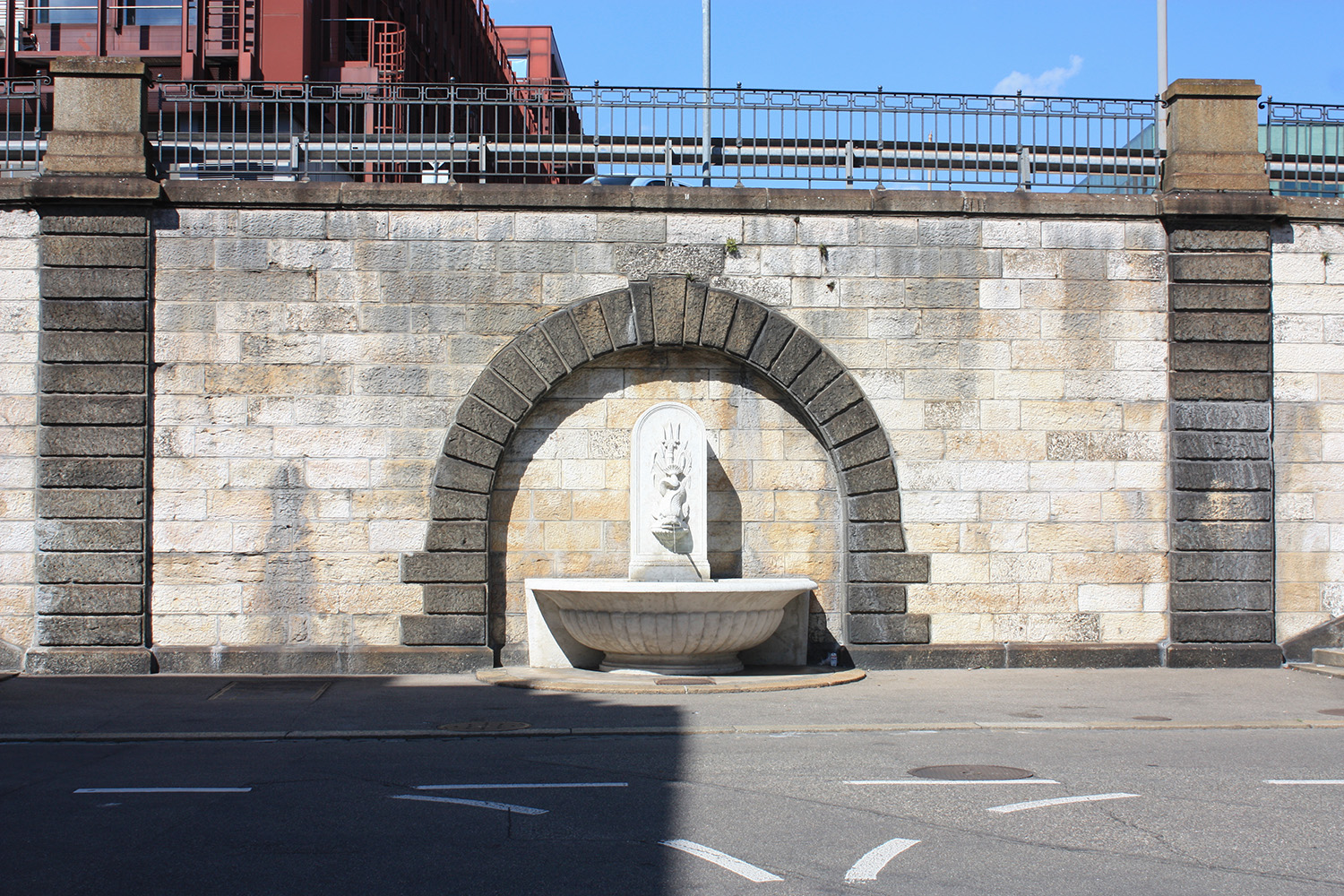
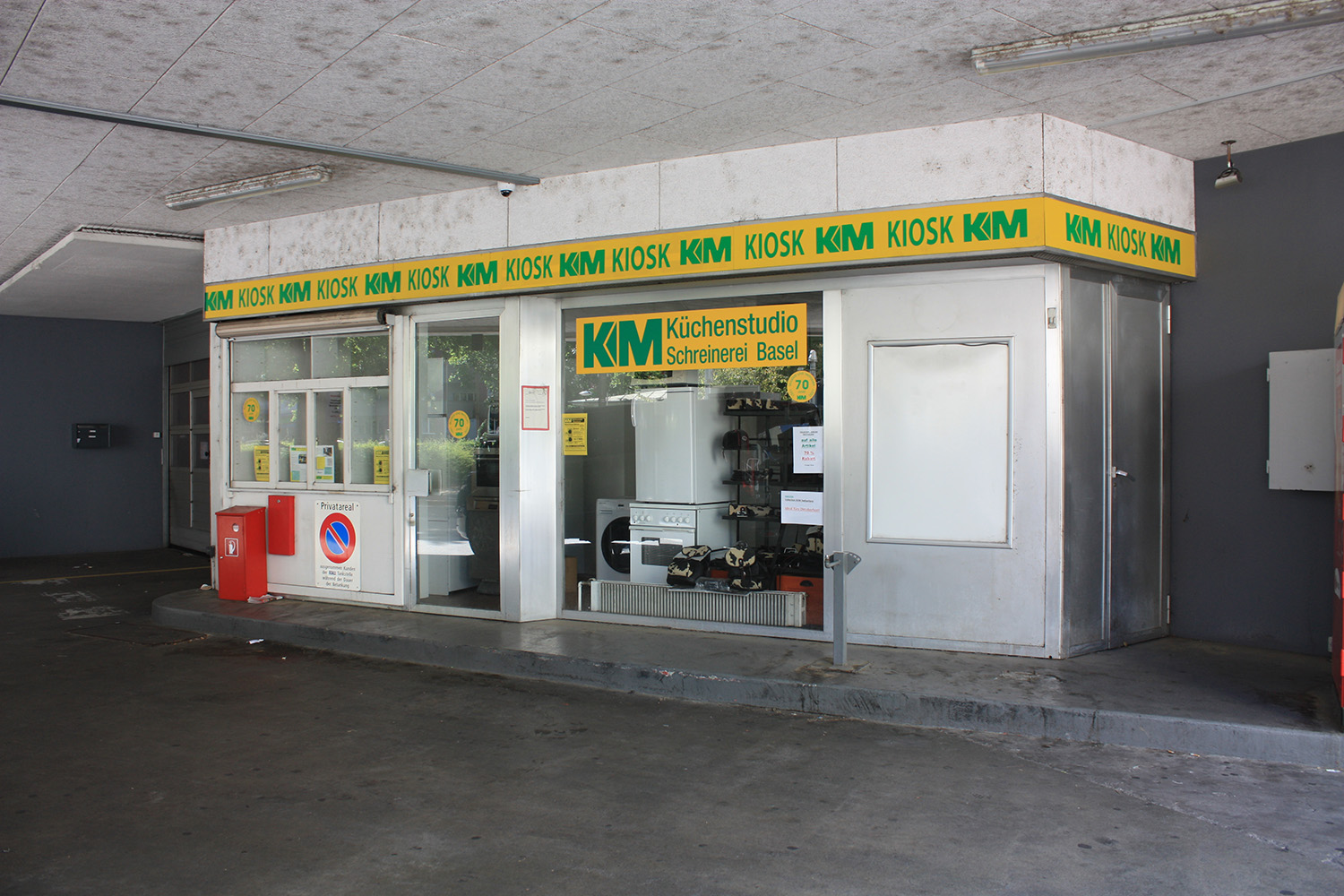
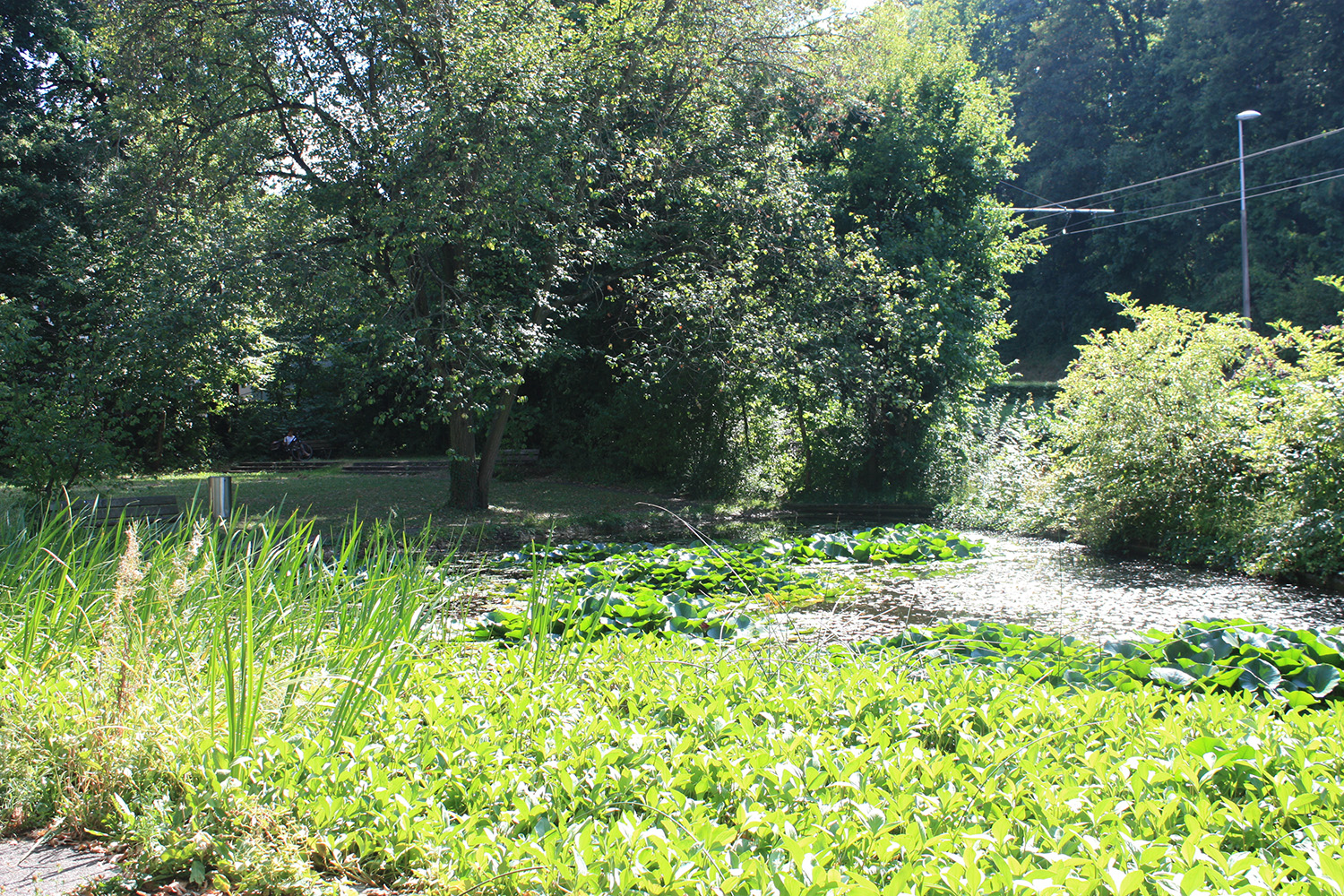
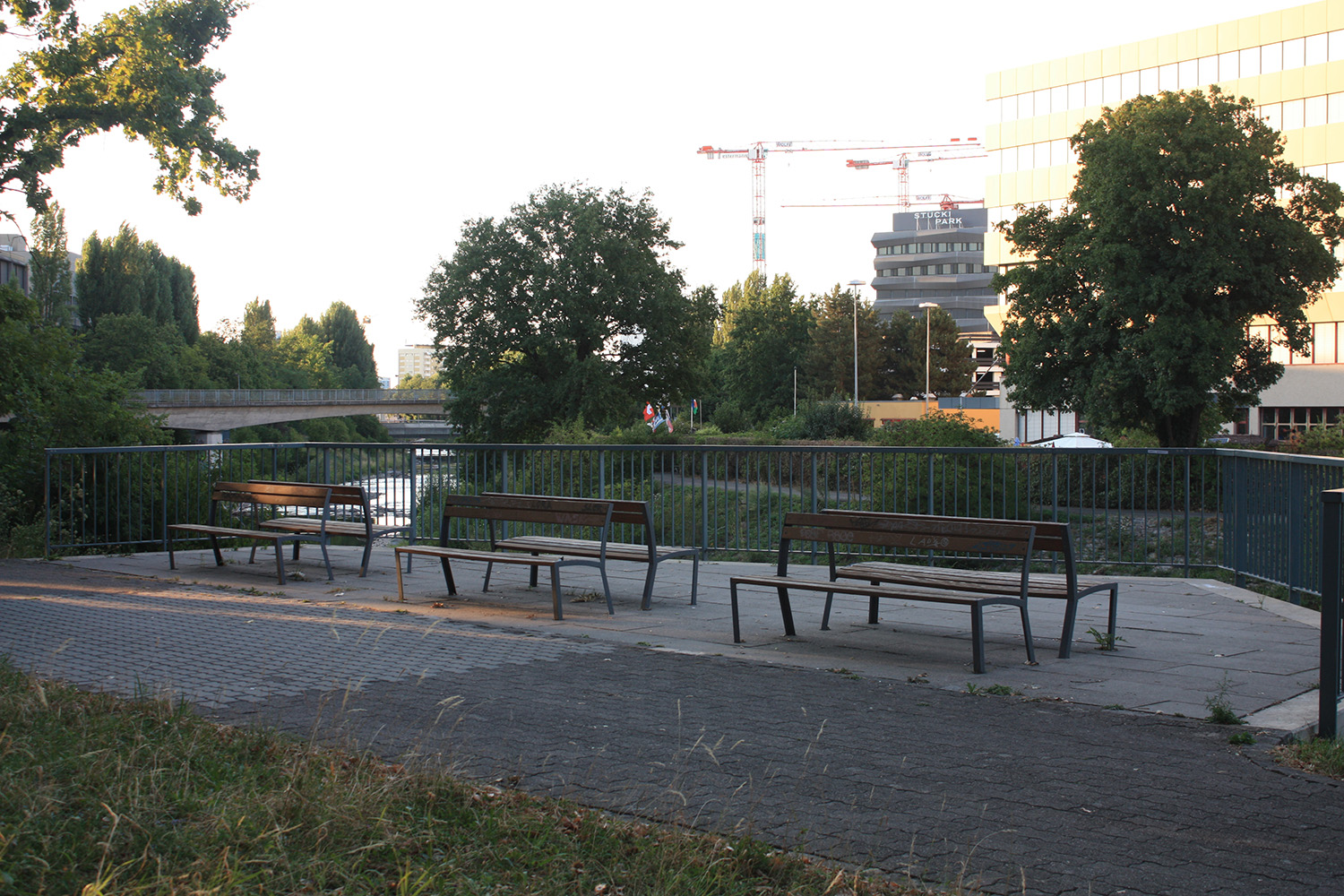
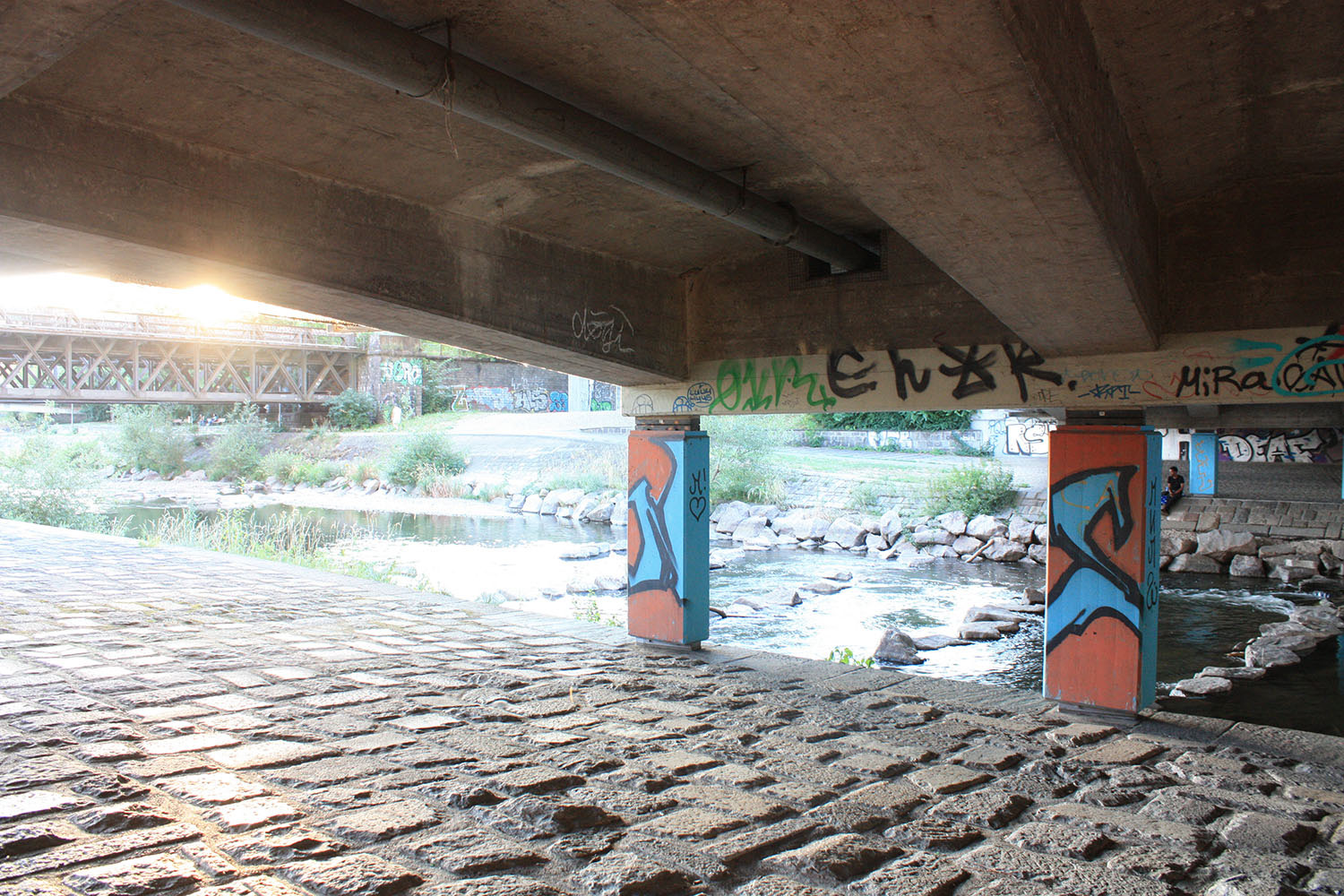
Mise en Scène
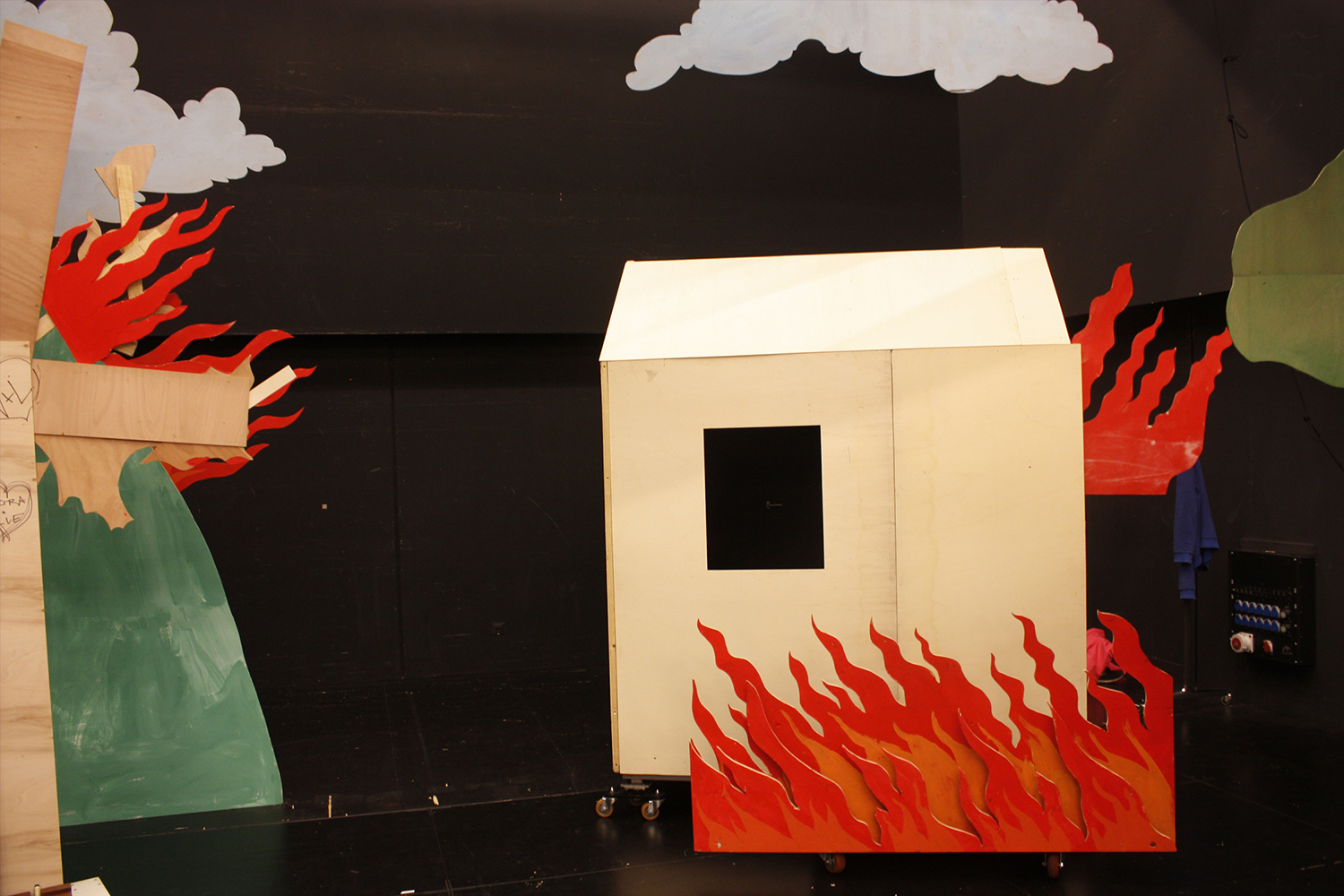
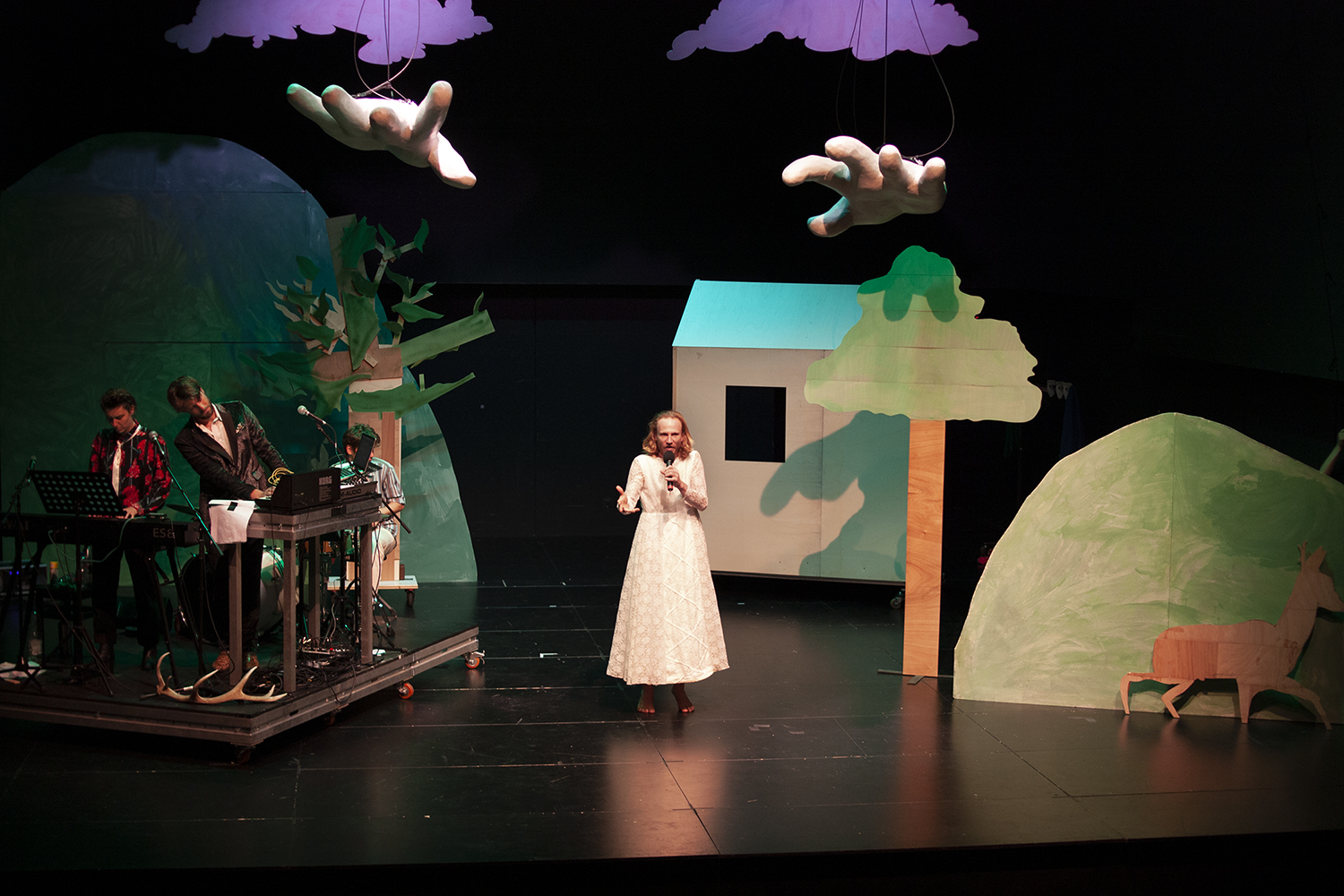
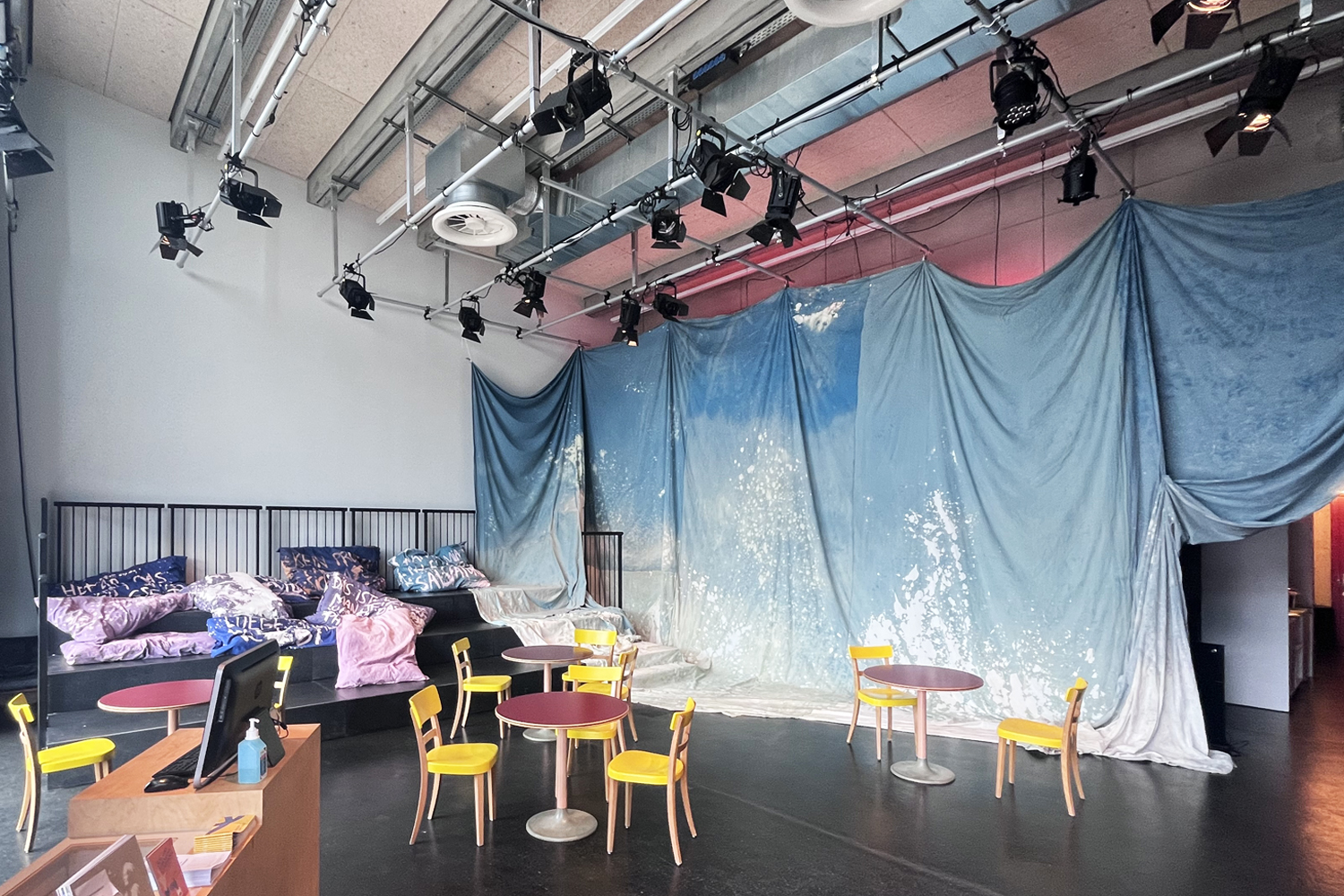
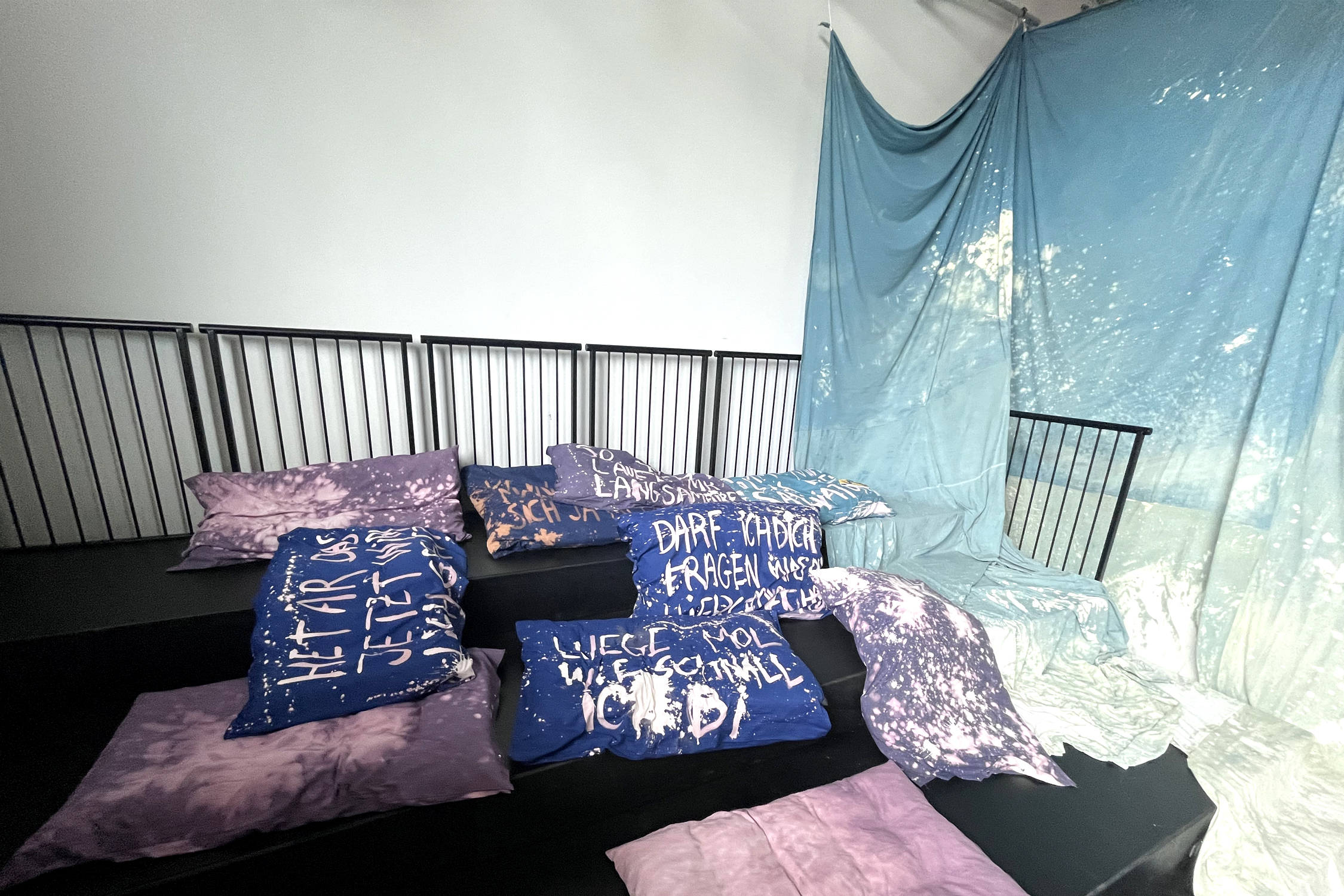
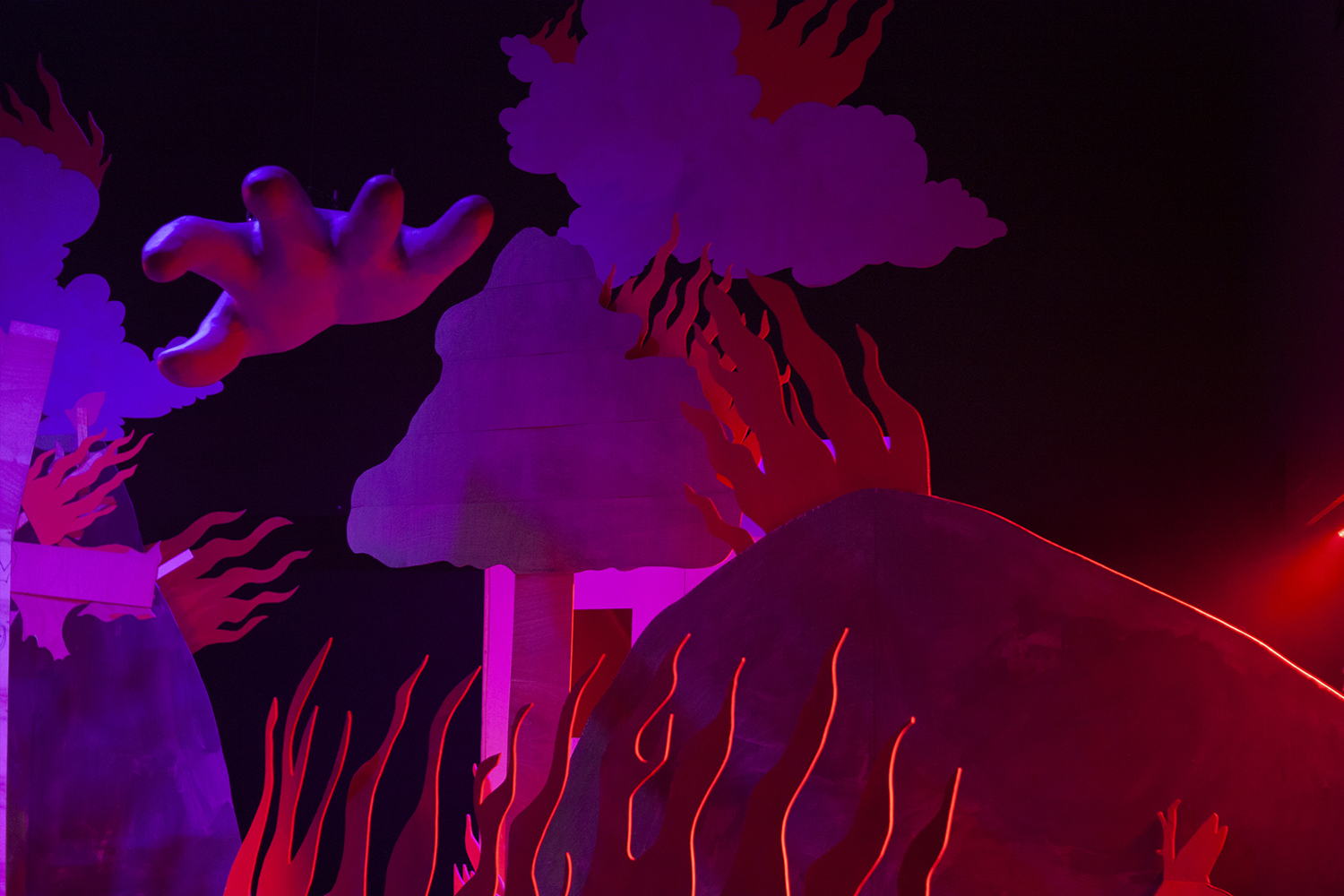


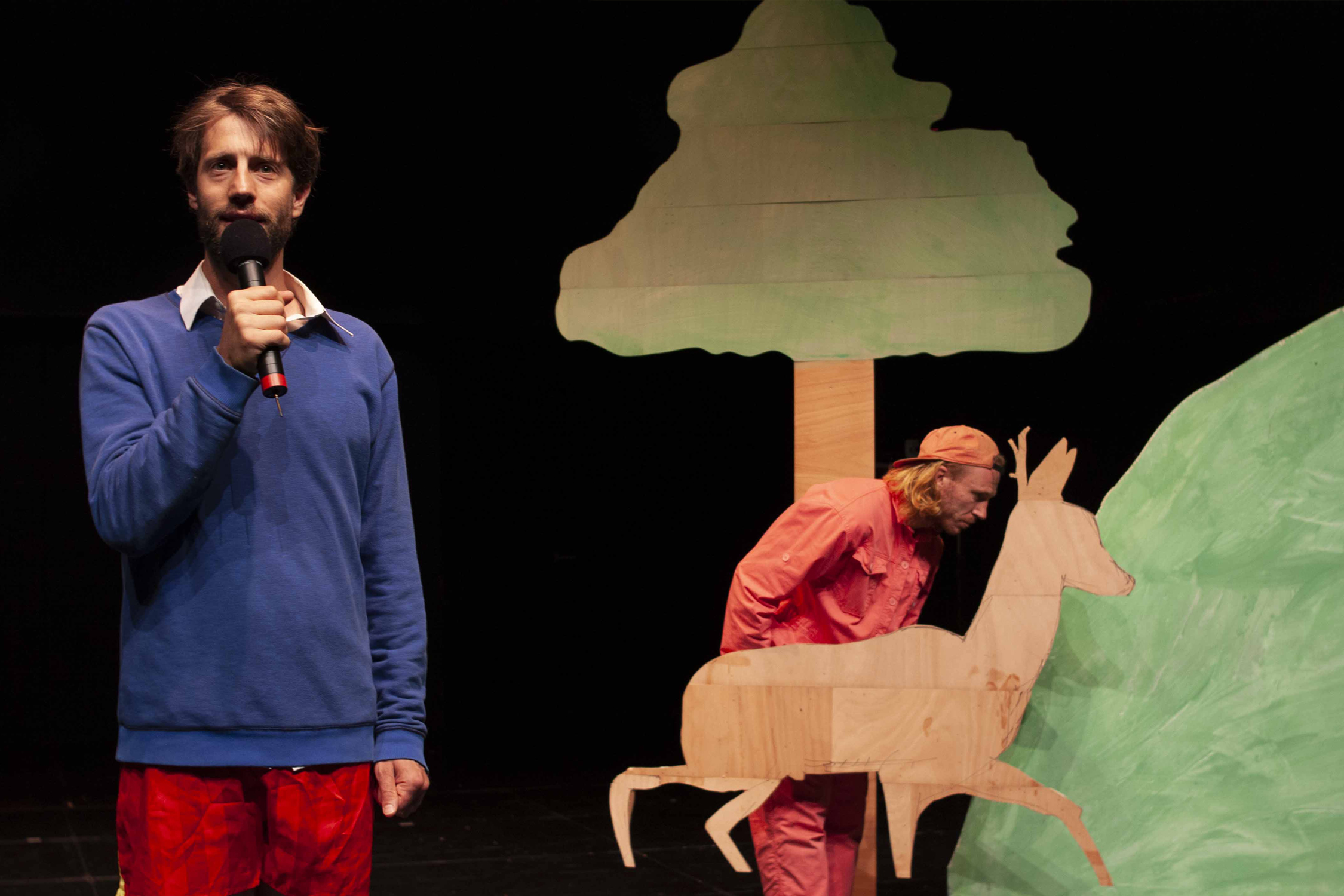
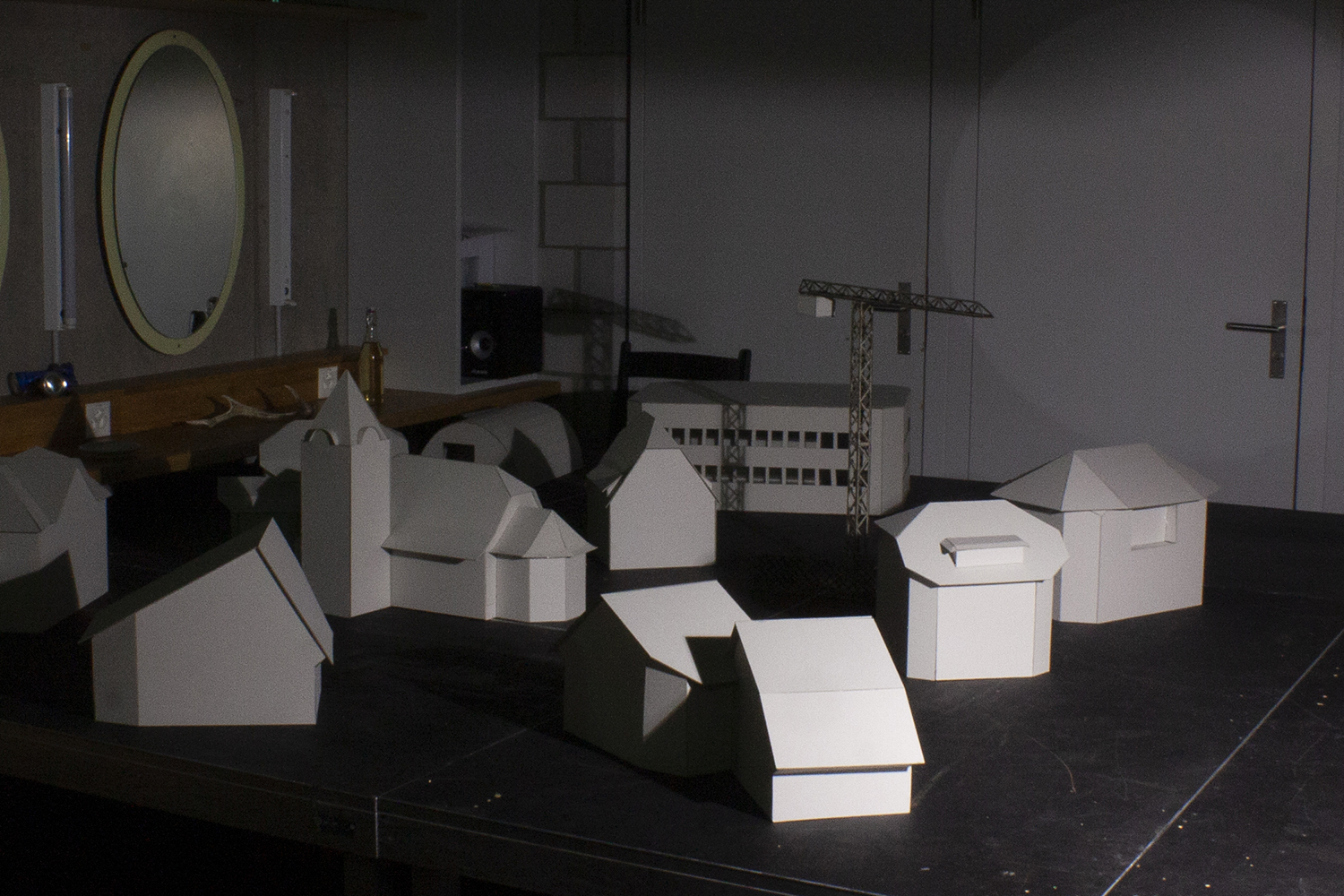
During the two years of my master's degree, I have been developing several projects in which the history of cinema has been central. During this time I have produced different sculptural works based on the sets of films. I have often worked with reduced scales in these works, exploring the narrative potential of the diorama or models.
Upon seeing these works, the stage actor and director Sebastian Gisi invited me to work with him to produce a set for his next play at the Dornach Neues Theater. For me, making a stage design for theatre represented several things. On the one hand, stepping into a world I had never known before; the world of theatre. On the other hand, it meant going deep and reflecting on some of the issues I had previously addressed in my sculptural work but leaving the model format to work in actual size.
The commission I received was very open. The idea was not only to create a set for the stage but to use different spaces of the building to generate a narrative journey through it. I intervened in all those places. From the hall, the offices, the backstage, to the space under the grandstand. I had to implement different strategies to deal with different spaces, sometimes to tell a story and other times conditioning the experience of how the audience could perceive them differently.
LIQUID FLESH. A Party by Paula Santomé
pocket paintings - movement 1
In January 2021, I started working on small-sized paintings, oil on wood. In the beginning, it was a
way to explore my pictural language. I could try different compositions, forms, and color
combinations. It allowed me to solve concrete pictural problems more easily.
After producing several paintings, I started to grow a collection. I then named them «pocket
paintings», because they could comfortably fit in a pocket.
Besides that, their sizes offer a performative perspective that contains new possible ways to show
a painting. Carrying it in your pocket, then handling it in your hand to look at it changes the way
one could experience and relate to painting; more intimately and casually. It also opens a potential
wherever-exhibition space outside the walls of an institution. All of this gives a painting more
autonomy and makes it more alive.
The reflexive work offers me a good situation to set up an experiment. I selected five paintings
from the collection to send to each person who will take part in the diploma discussion. I also
made a protective case in collaboration with Camille Chaubert and a letter that describes the
experiment.
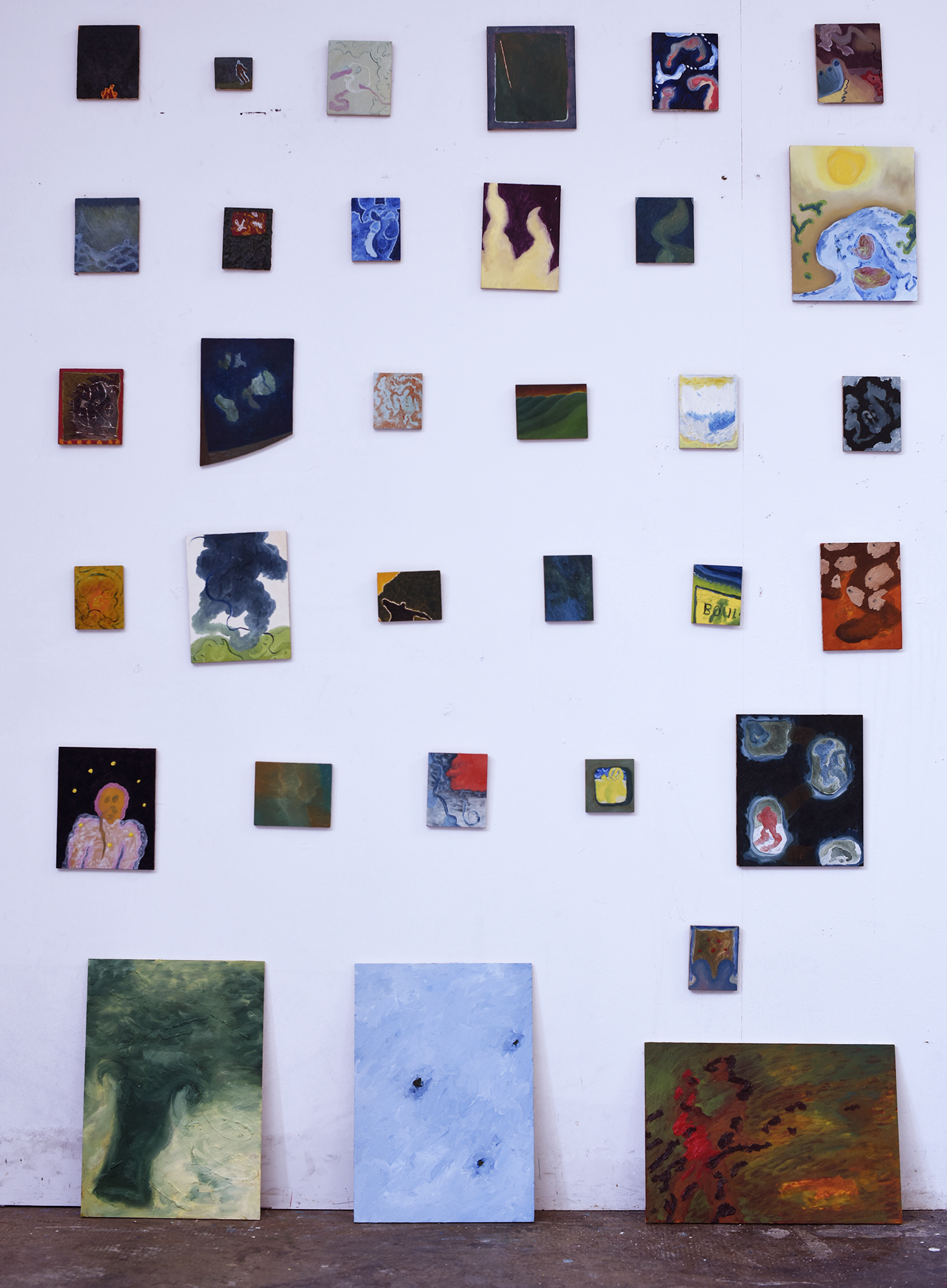
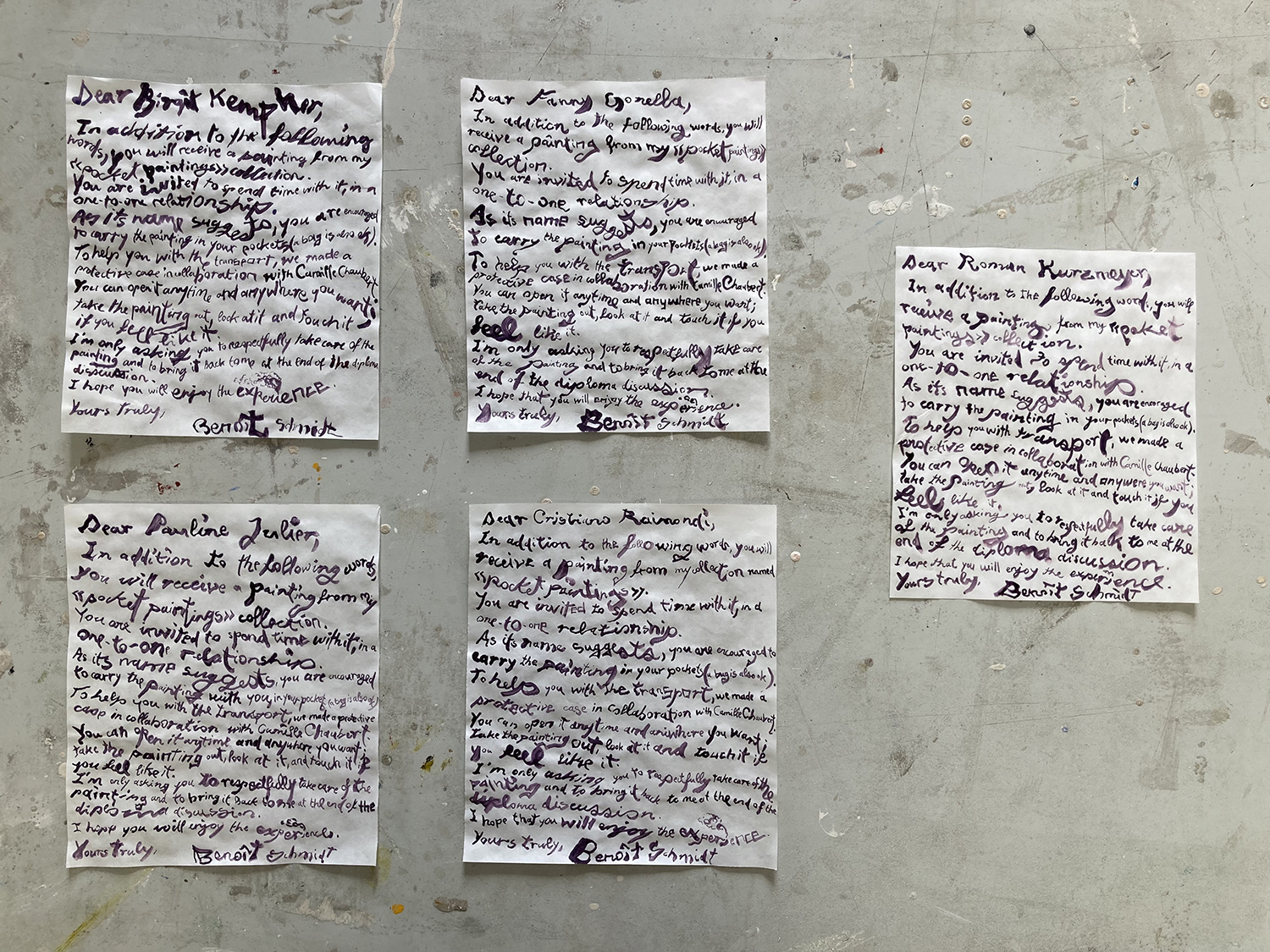
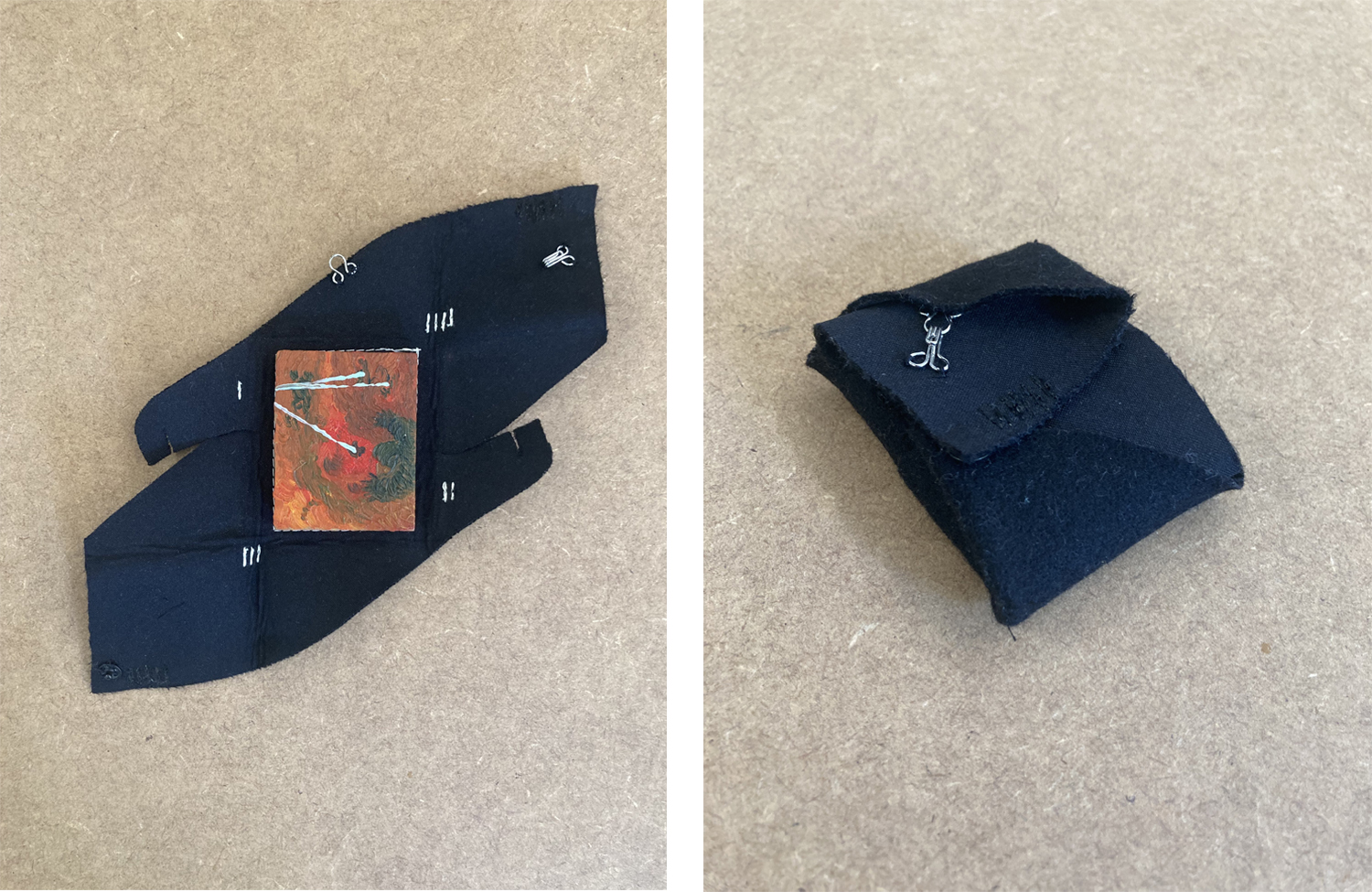
Islands toward which the ocean rubs (– Hello resistance!)
When I started writing at the end of this year's bleak winter I didn't know what would come
out of the process. My main goal at the time was to better understand the visual world(s) I
keep building in my artistic practice, and to ponder my role as an artist. I was asking myself
where the topics, scenes, motifs, and habits in my practice come from, what meaning they
have to me in the present, and what role they play in my current work. What I did not predict
in the beginning of the year, however, was that I would fall in love with writing.
The structure of the process for my reflexive work was the task of writing 111 words every day
during a period of 12 weeks, and to upload the texts to an online platform. I wrote connected
to a structured writing course held by Andrew Shields at the university of Basel's English
department. Part of the process was the collective critique sessions that took place once a
week, and in which we discussed and critiqued each others' texts from perspectives such as
content, structure, aesthetic quality, syntax and grammar. This script is a collection of all the
texts in accordance to the chronology they were written.
Although reading and writing has been a central part of my artistic working process as long as
I can remember, I never considered it to be one of my artistic mediums. During the last years
I've been using mainly drawing and painting as a way to make visceral aspects of existential
situations and affective states tangible. The reflexive work made me discover writing not only
as a process accompanying my visual work, but as a new medium of expression in its own
right, closely interconnected to the worlds I investigate through drawing and painting.
When the Water loves Fire
Natural History Museum Basel, June 2022
Organized by Fabio Sonego
In collaboration with Anne Kissmann, Ayaka Gütlin, Samuel Grand and Tamás Vásárhelyi
In a world where war is commonplace, where fear is becoming more and more widespread, I notice in my reflection on love that it is so often missing. Isn't the ability to love stronger than we know? Charity and self-love can be lost, but it is precisely in times when love is needed that it is missing.
I would like us to draw maps where we can orient ourselves, take us along, guide us in order to give love its rightful place in society. That’s how I see this performance, a part on a map, ho don’t show the treasure, rather to emphasize the journey and not the destination.
At the Natural History Museum Basel, where I work at the cash desk, I juxtaposed my love for the house with my personal examination of love. The work "When the Water loves Fire", should be understood as a philosophical tour. Working together with people from the museum, scientists and artists, we developed a tour that led through different stations. Personal decisions were mixed with the skills of the invited performers.
In my performative practice I like to use houses to freeze them for a short moment. To play with the conditions of the environment and to work with people from that house to address current social and personal questions.
*In thoughts, to those people who do not experience love in war or through suffering*.
CHOOSE LOVE
PEACE NOT WAR
Fabio Sonego, August 2022
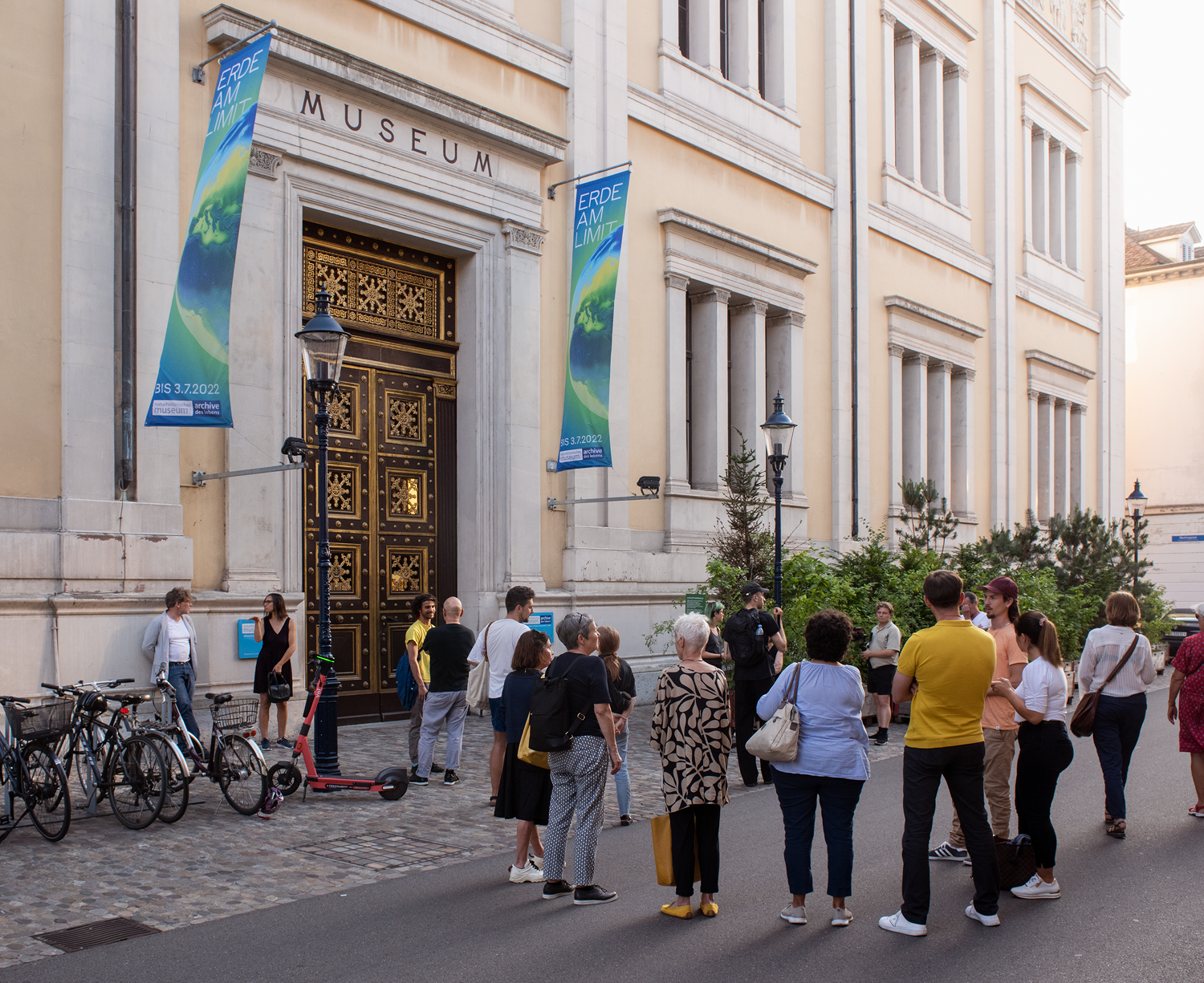
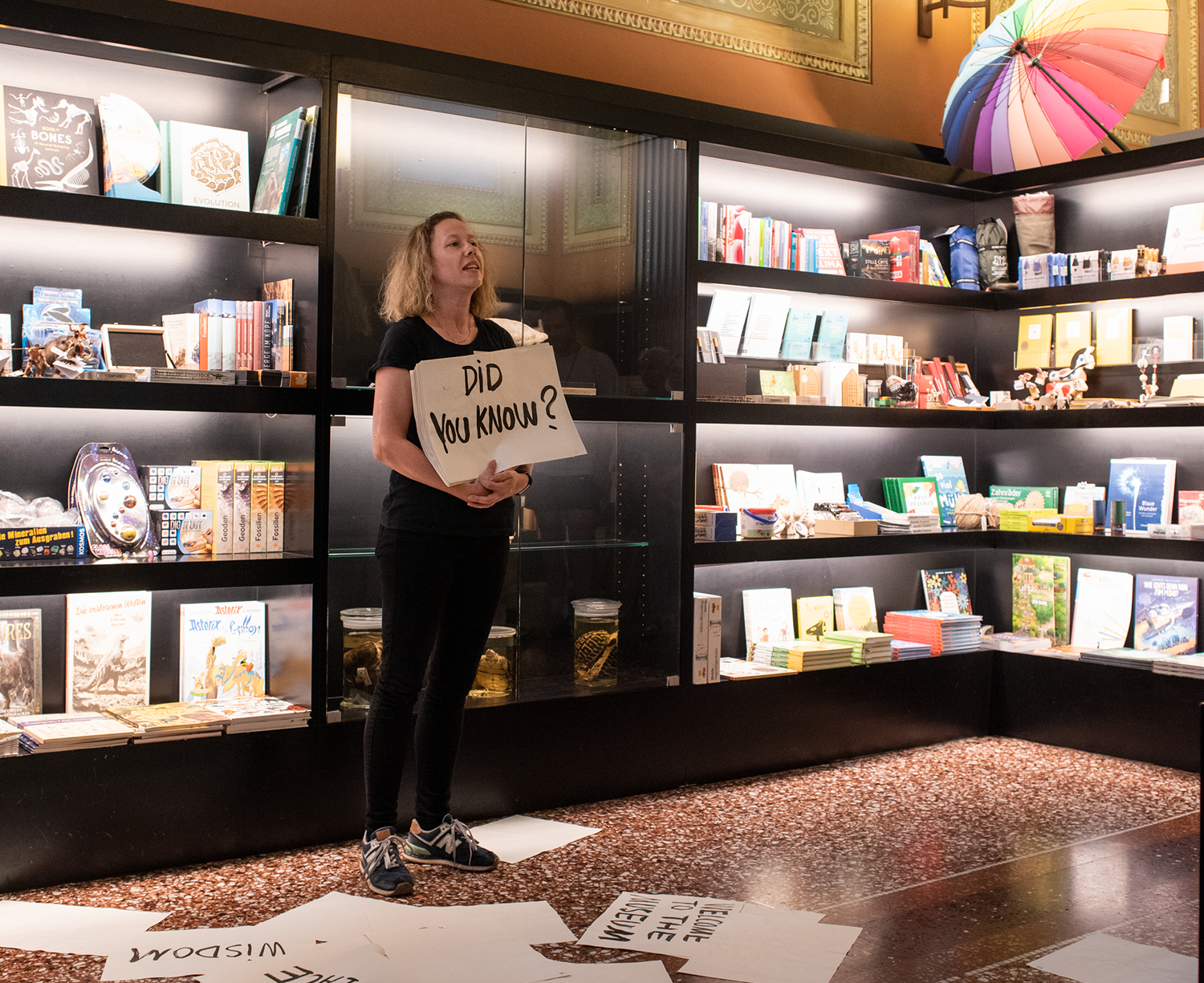
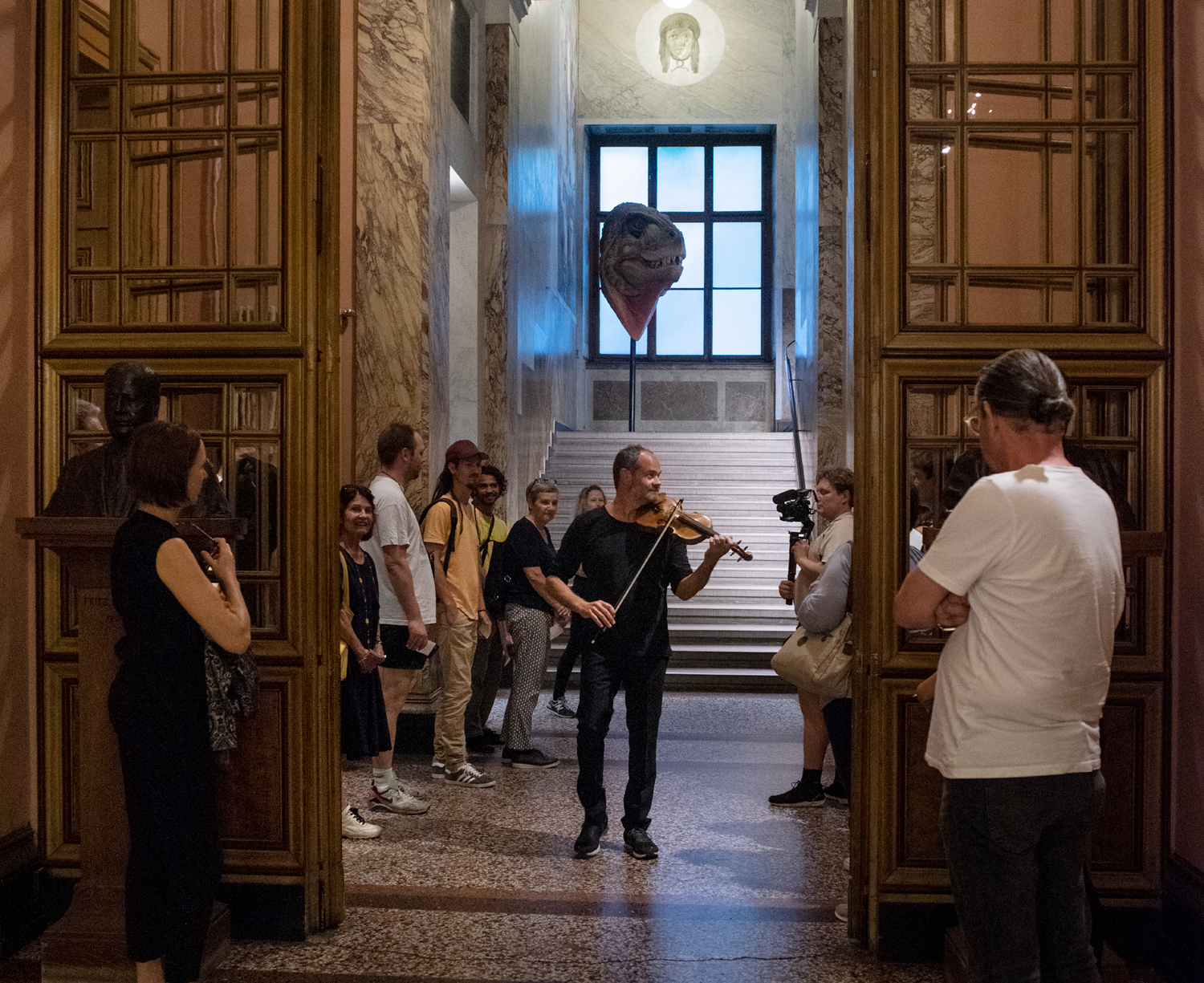

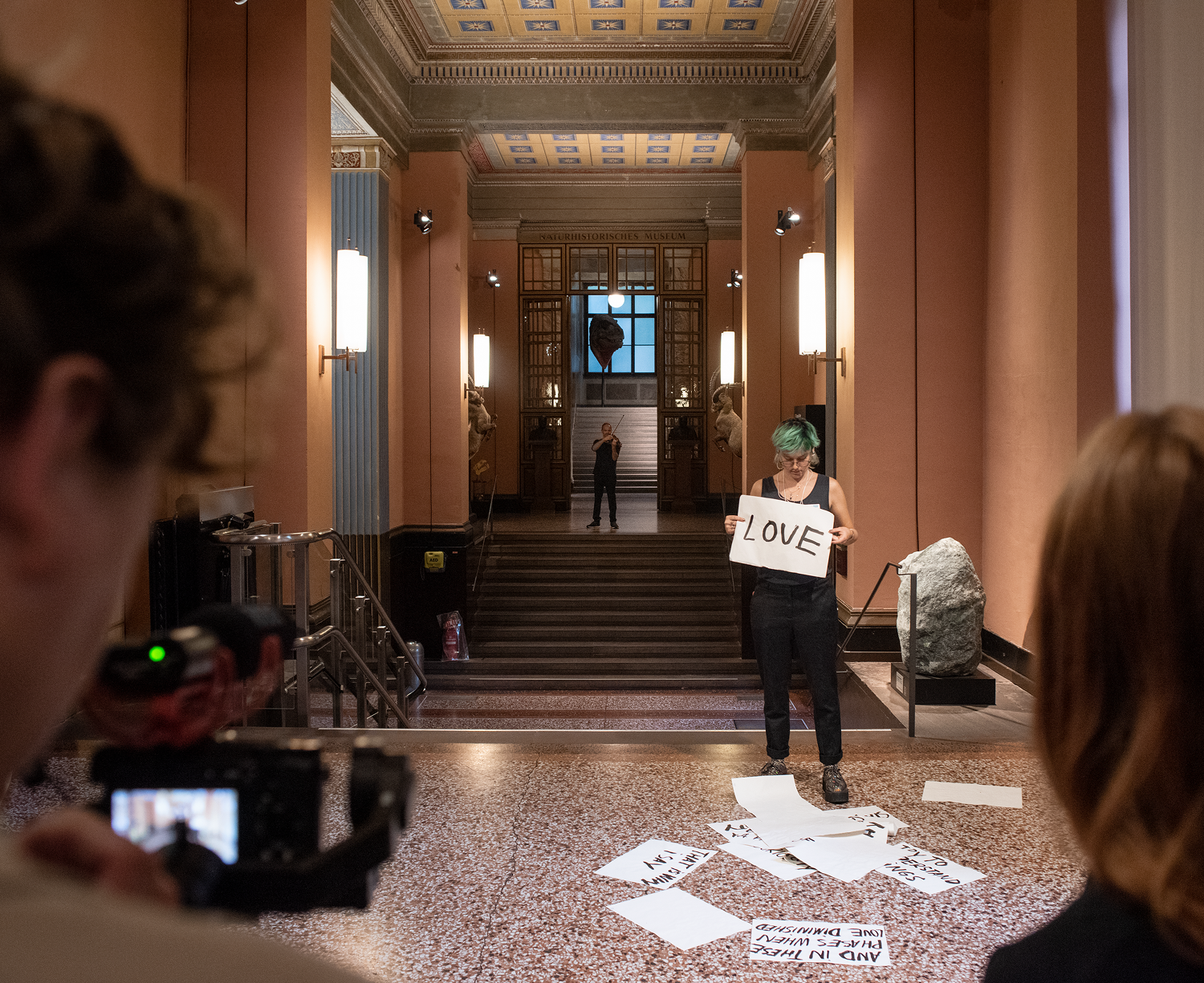
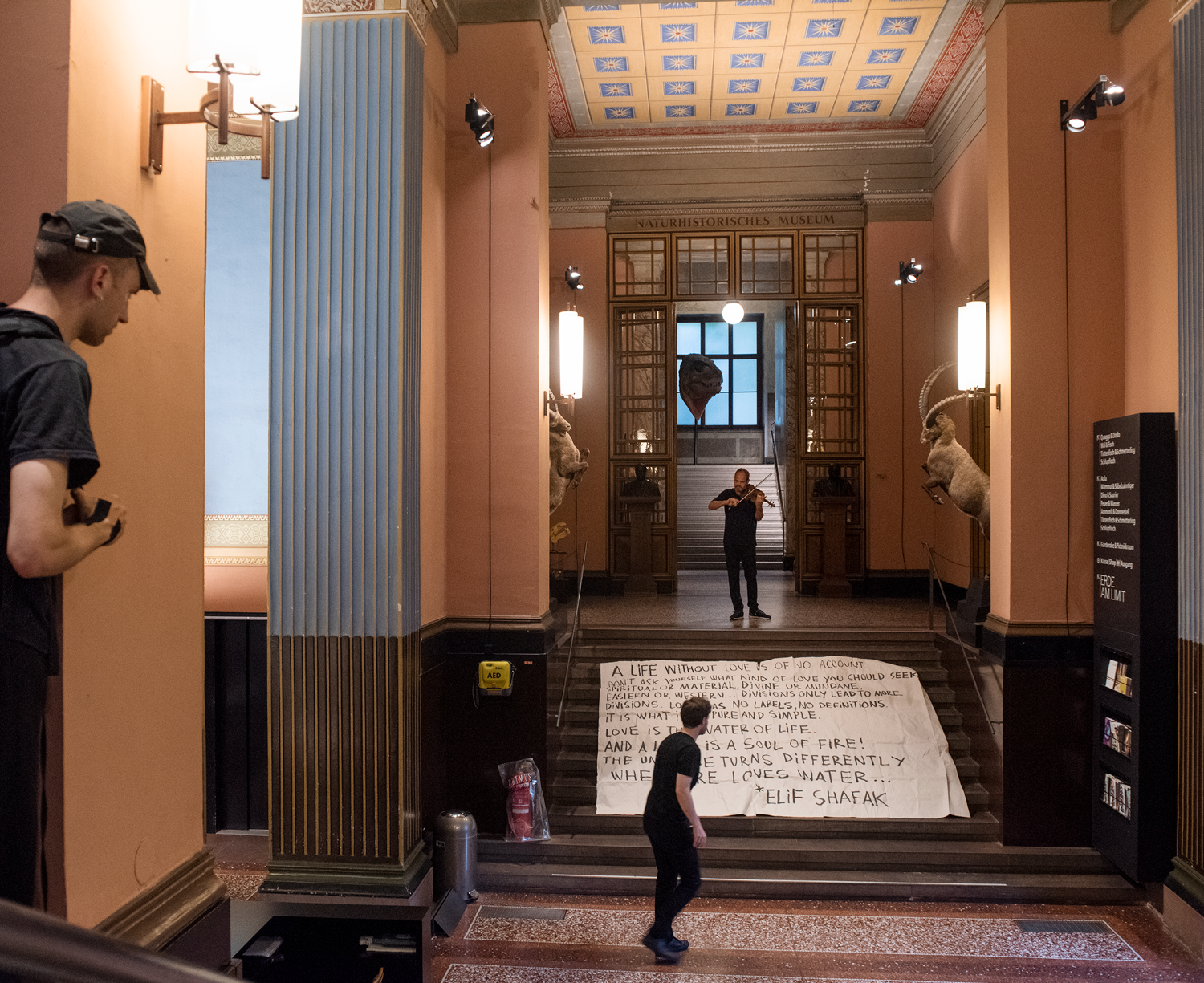
„A life without love is of no account. Don't ask yourself what kind of love you should seek, spiritual or material, divine or mundane, Eastern or Western. Divisions only lead to more divisions. Love has no labels, no definitions. It is what it is, pure and simple. Love is the water of life and a lover is a soul of fire! The universe turns differently when fire loves water.”
*Elif Shafak
Special thanks go to Basil Thüring CO- Director of the Natural History Museum Basel and to the trust you have given me to make this work possible.
Thanks to Crispin Appius without you I wouldn‘t be in the museum.
Thanks to Patrizia Camarra for allowing me to use the internal library at any time and where the idea for this work developed.
Thanks to Alwin Probst, David Marquez and Loic Costeur for the insight into the collection and the science in your fields of expertise.
Thanks a thousand to the best mentors in the world:
Birgit Kempker, Chus Martinez, Mathilde Rosier, Roman Kurzmeyer and Sophie Jung.
I would like to say a big thank to: Anne Kissmann, Ayaka Gütlin, Samuel Grand and Tamás Vásárhelyi.
Without you, this work would not have been possible, thank you!
A deep thank from the heart to D.S and L.B for the difficult time we went through with love, without you my reflection on love would not have taken place.
As this is also a reflective work, the choice of texts is not accidental. The important and essential literary and academic work of Bell Hooks and Elif Shafak have influenced me and become part of this work.
Bell Hooks: „All about love“ and „Communion, the female search for love.“
Elif Shakak: „The forty rules of love“ and „The island of the missing tree.“
Credits:
Photo: Christian Knörr
Camera: Linus Weber
Sound and audio at the performance:
Jackie Wilson „To Be Loved“
Notes of the Violin, Charpentier „Te Deum“
Herbert von Karajan & Wiener Philharmoniker, „Symphony No 9, from the new World“
NASA, the sun in ultra-high definition
Continuously
carosserie-(un)like
hands spray painting (no talking)